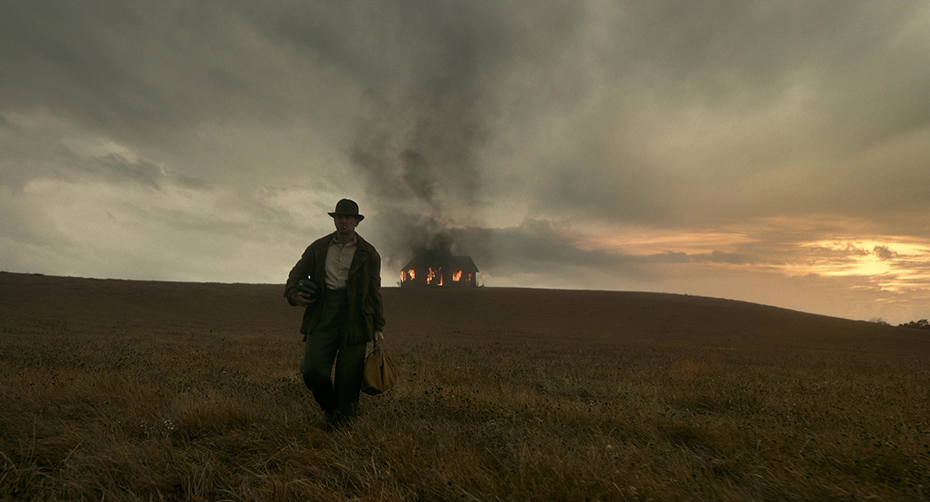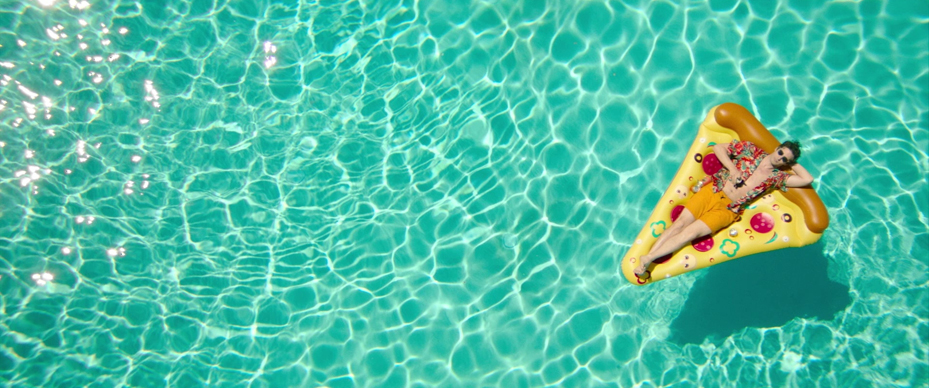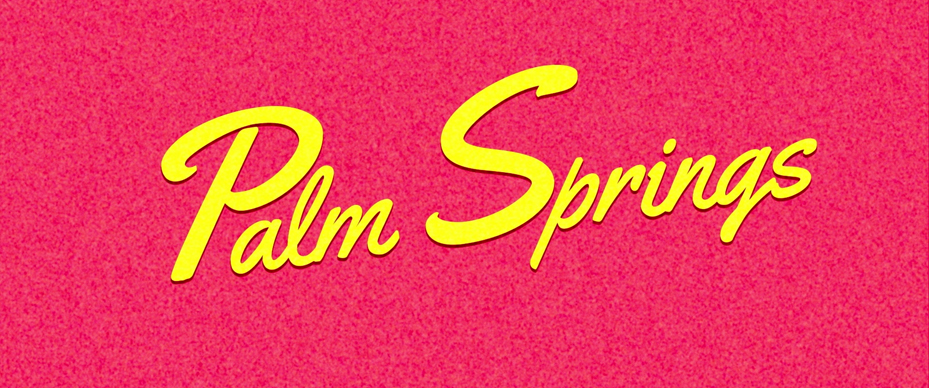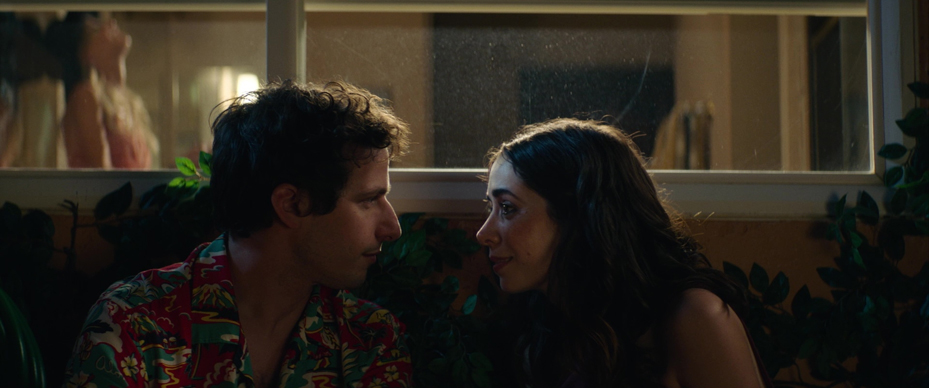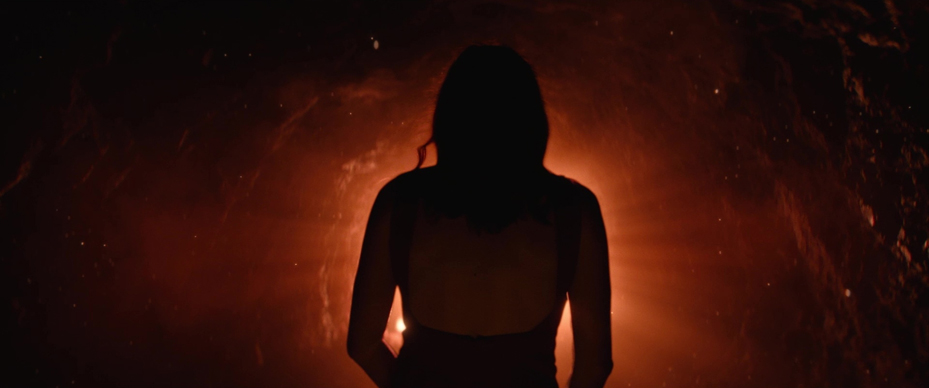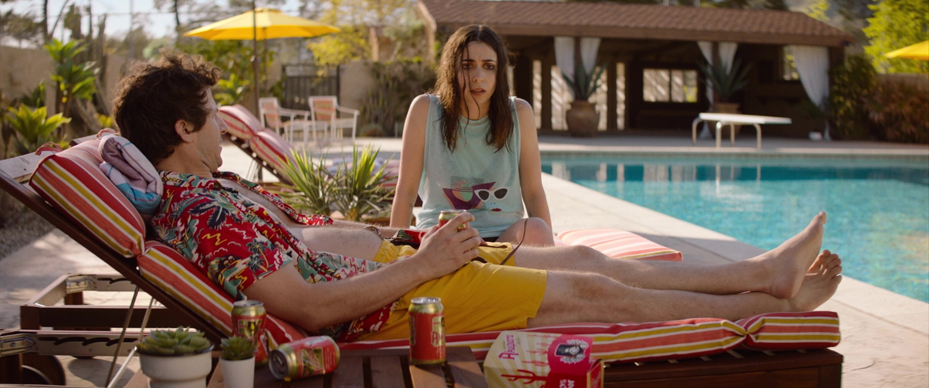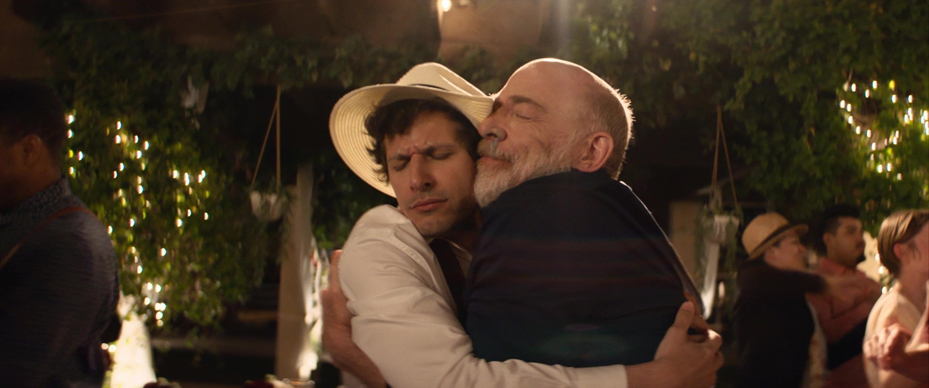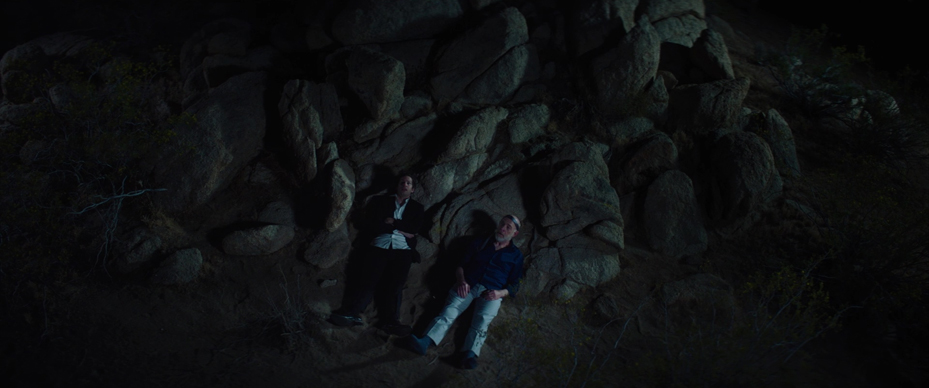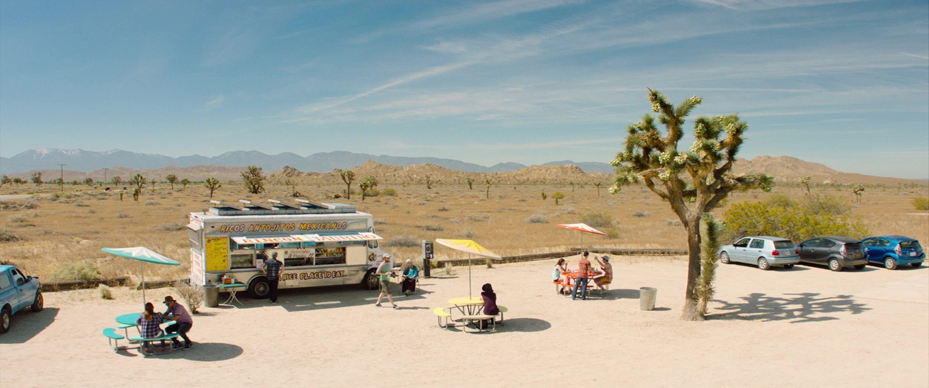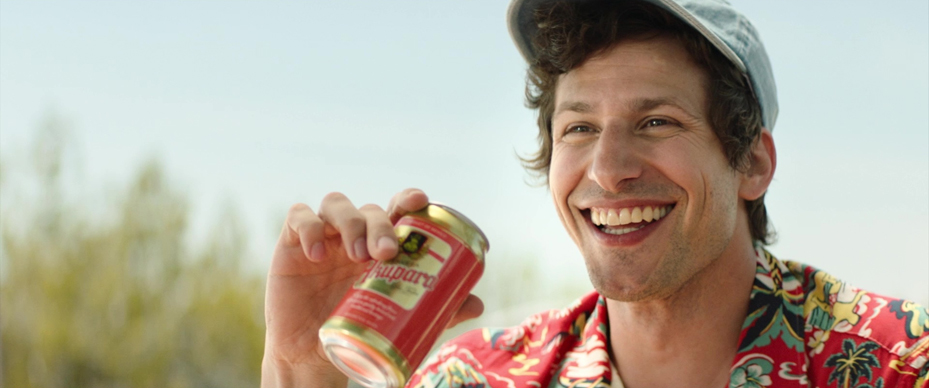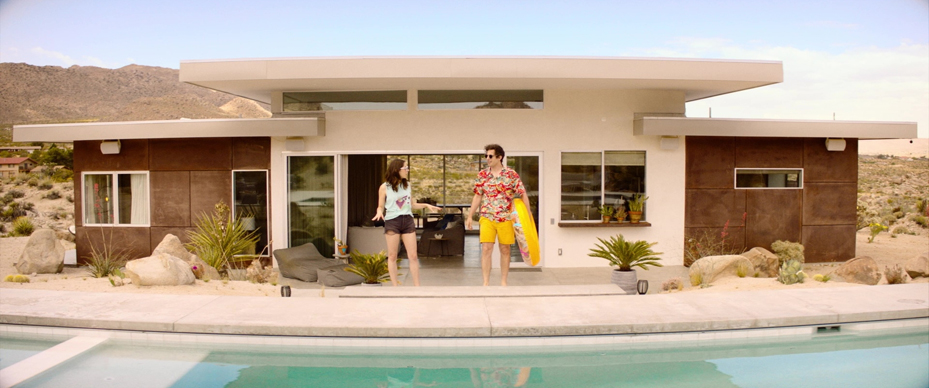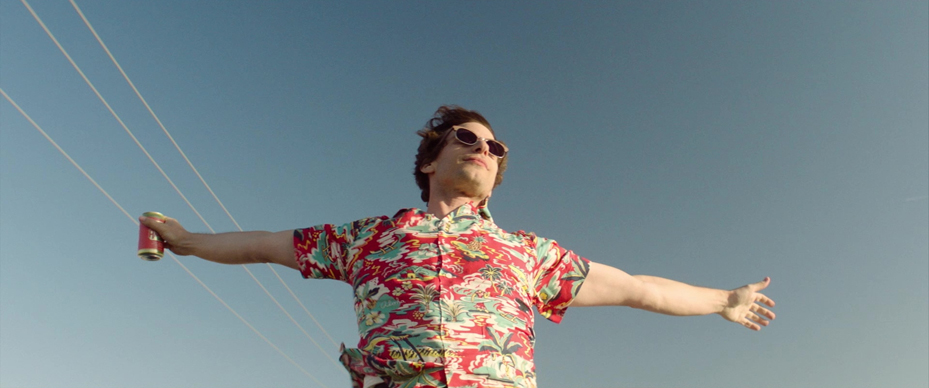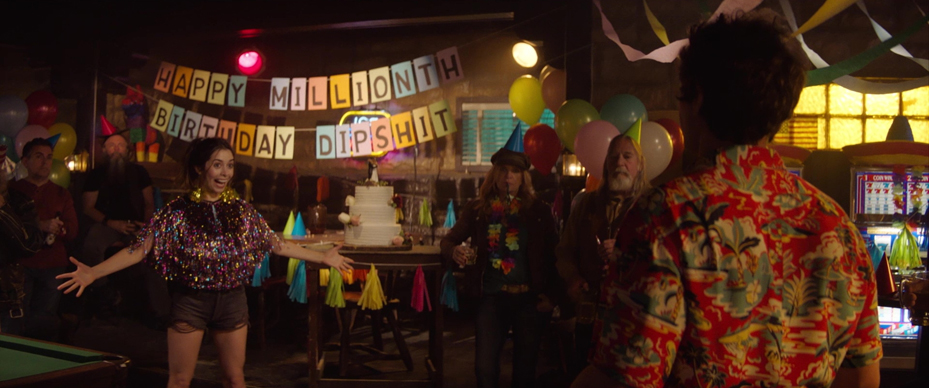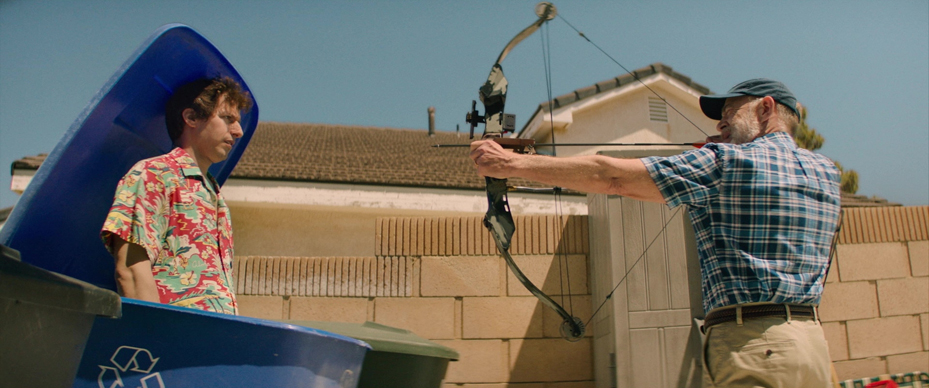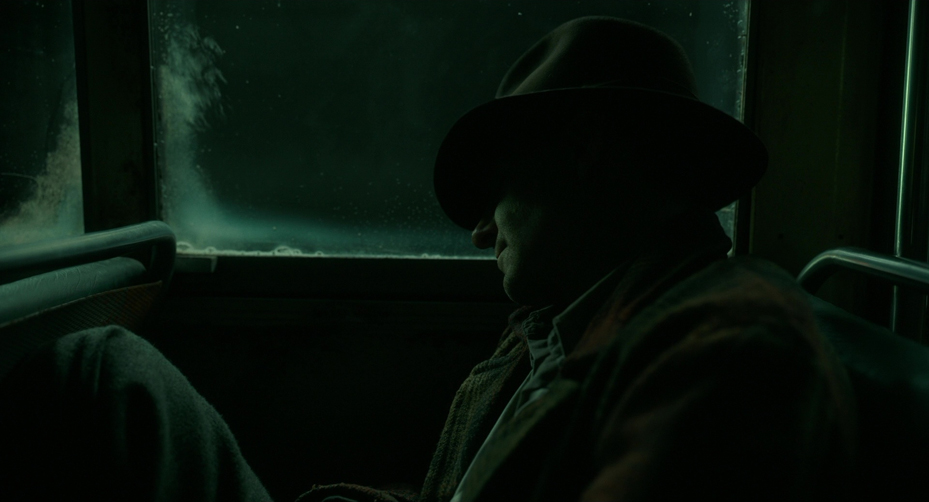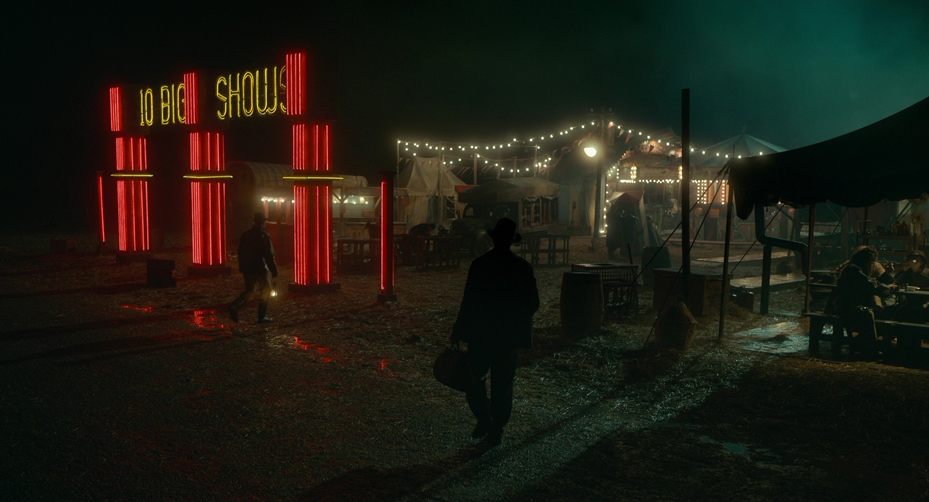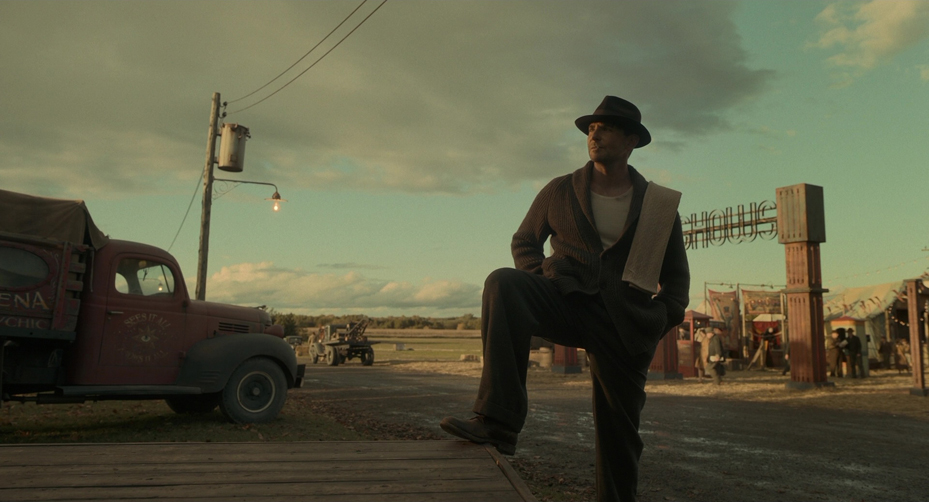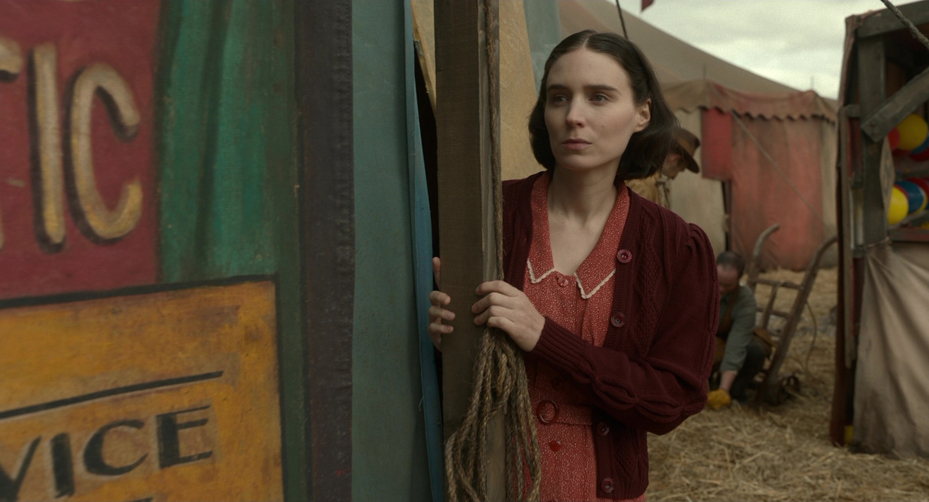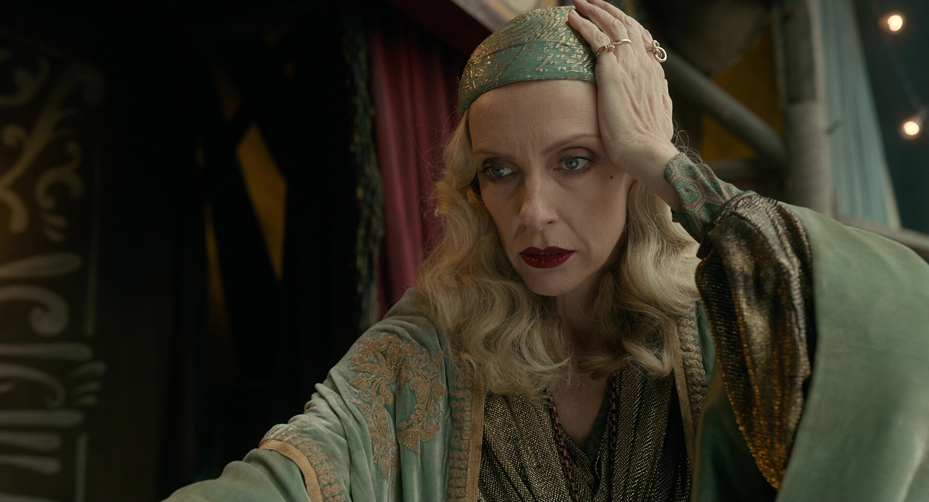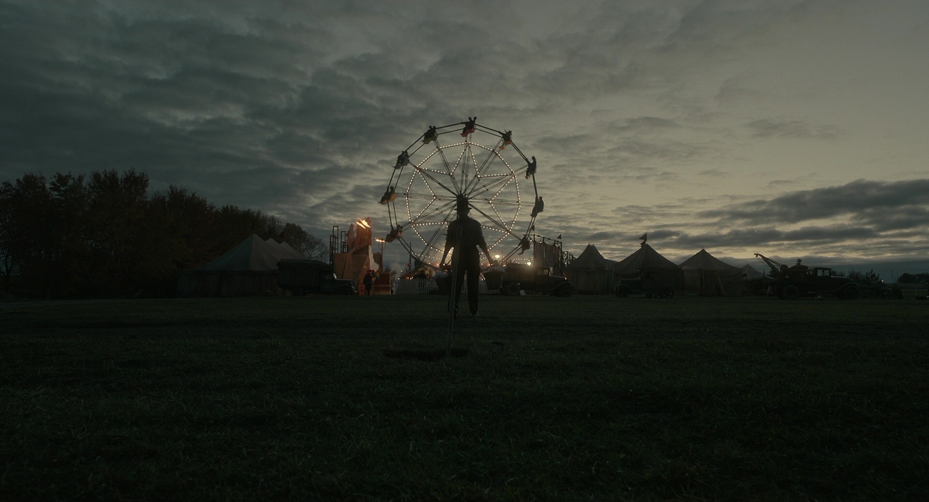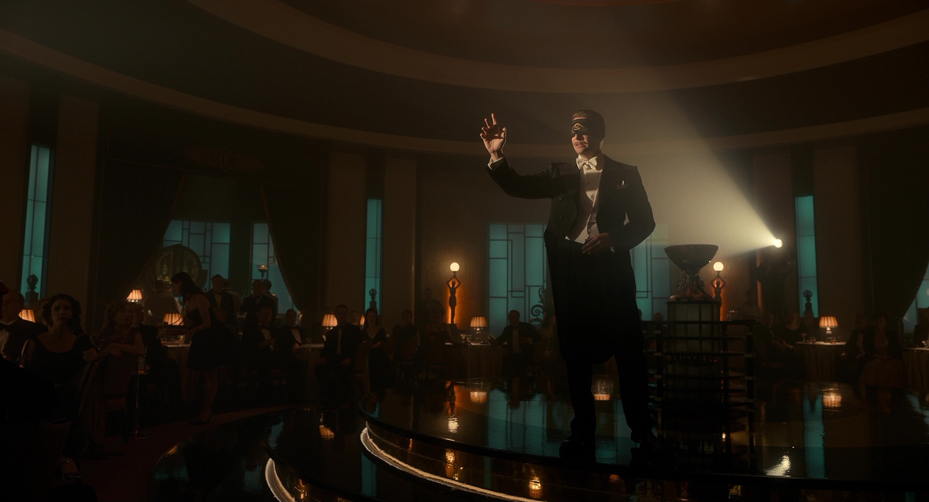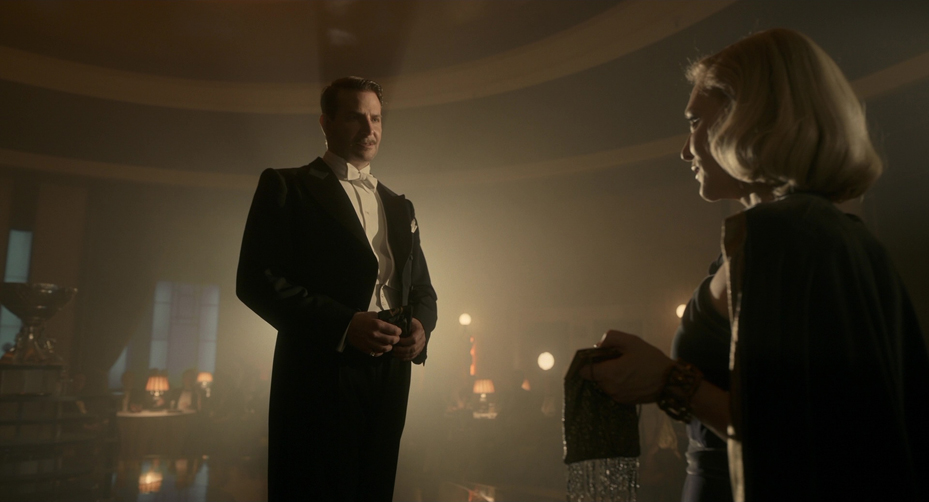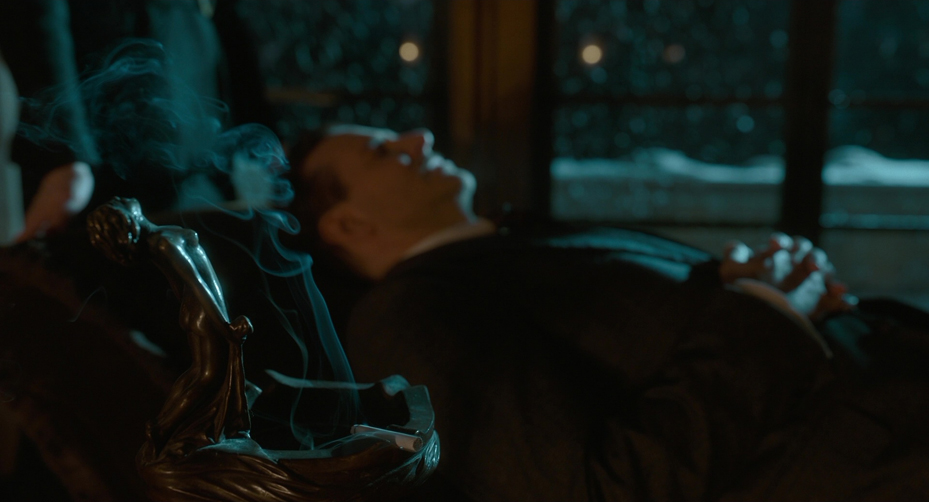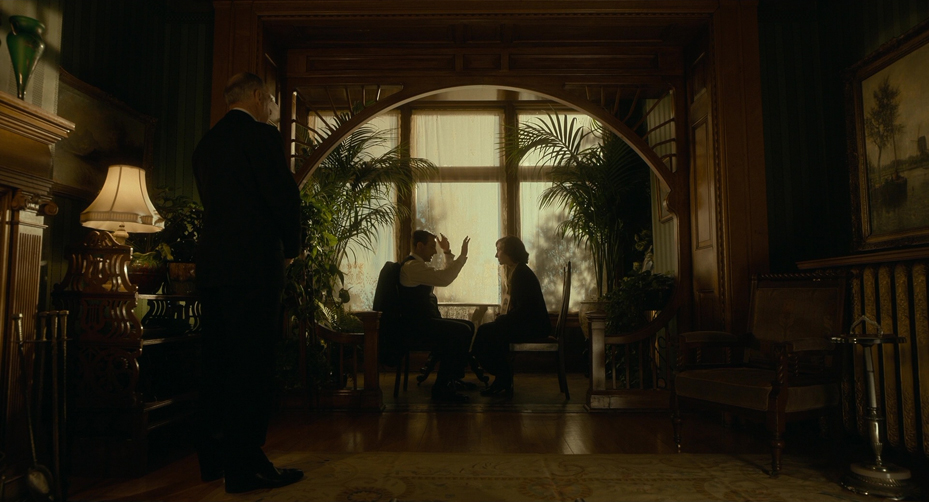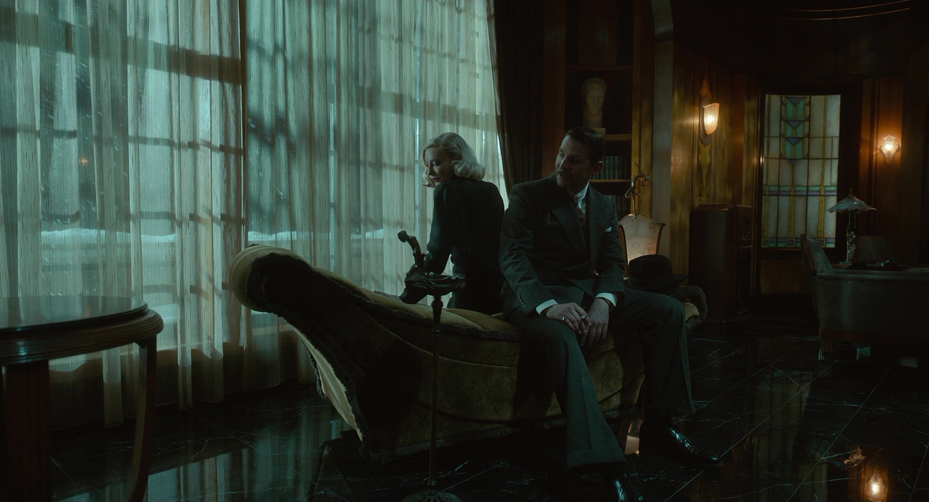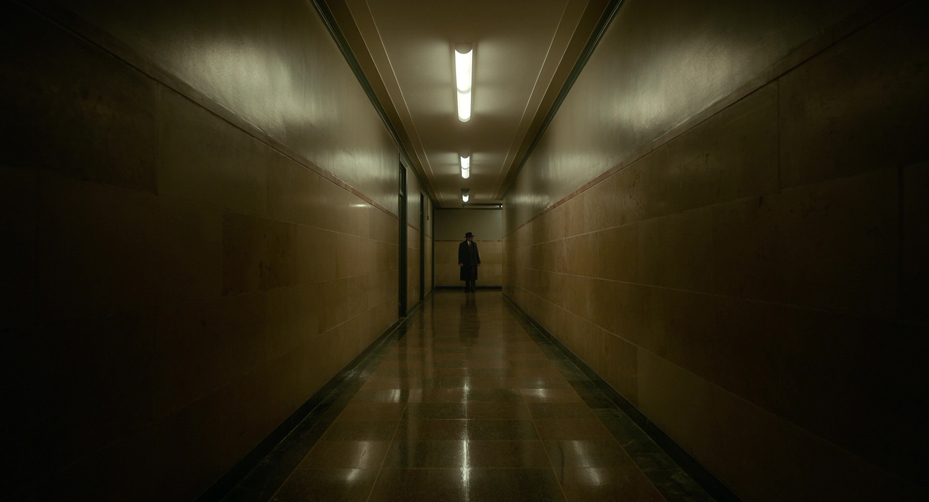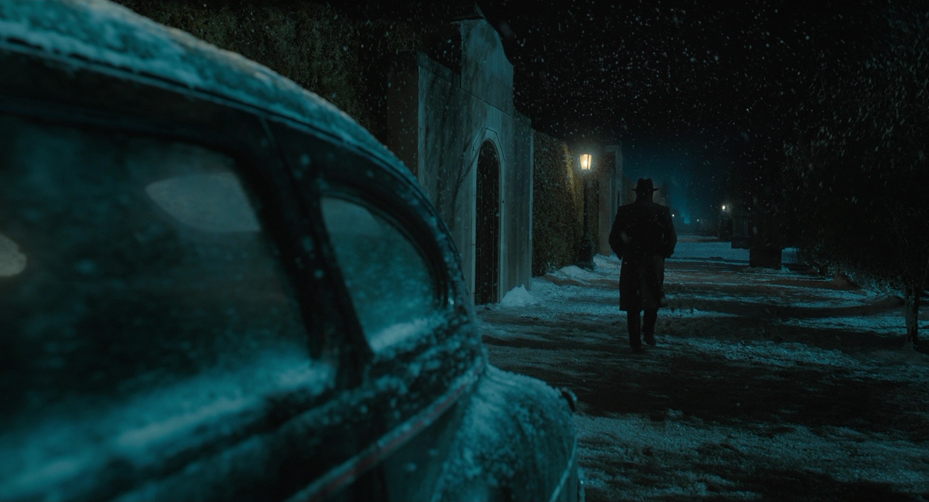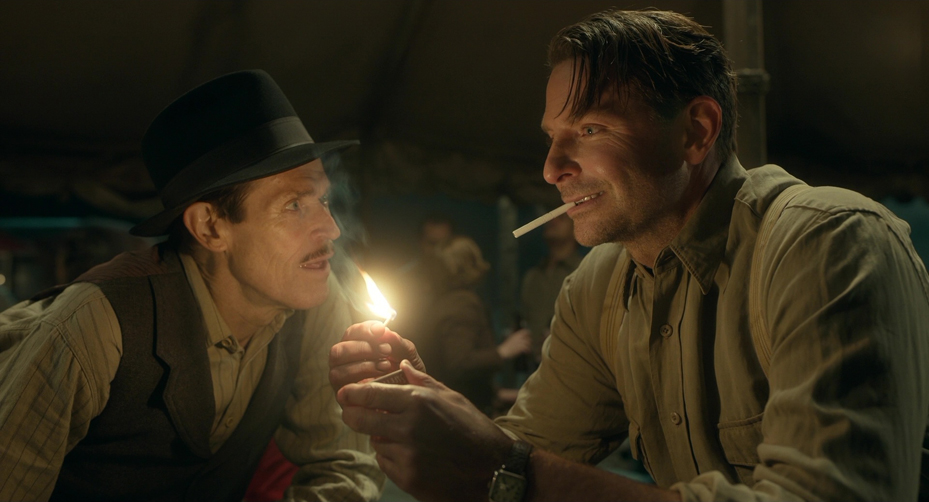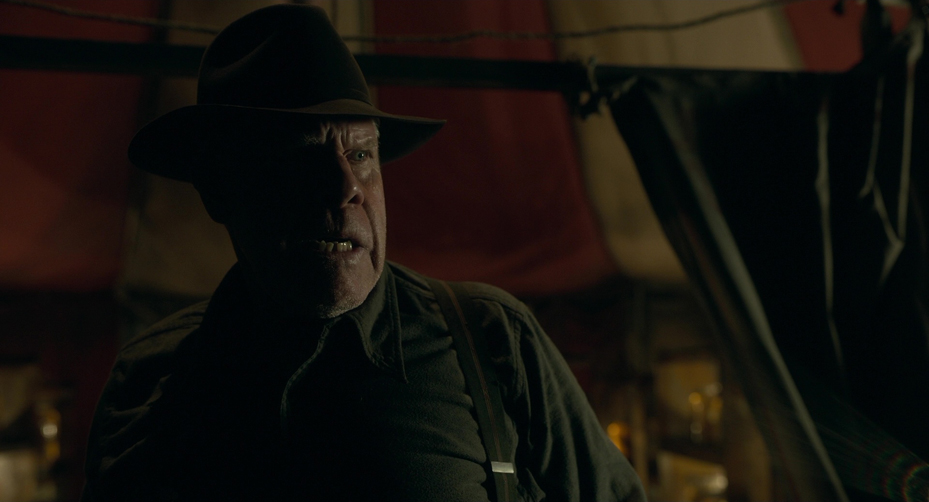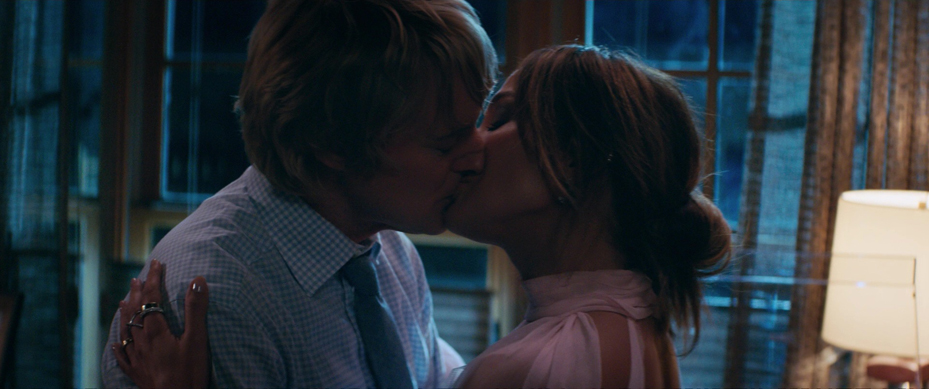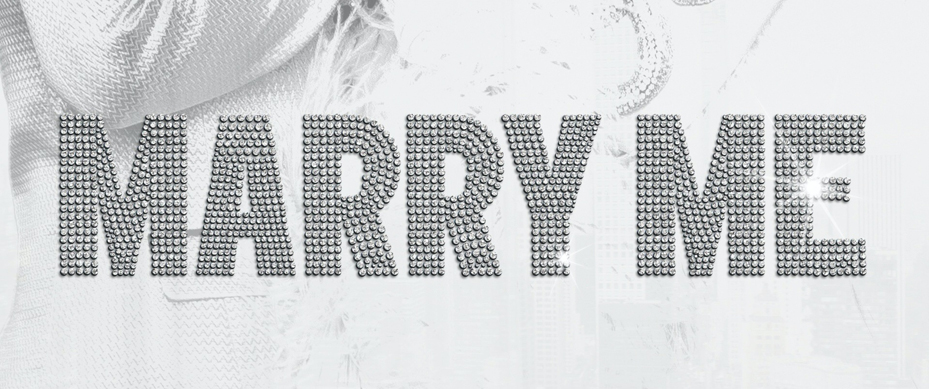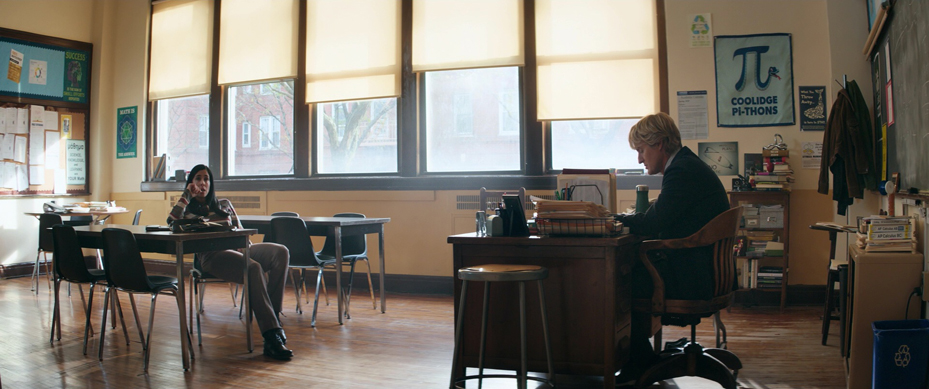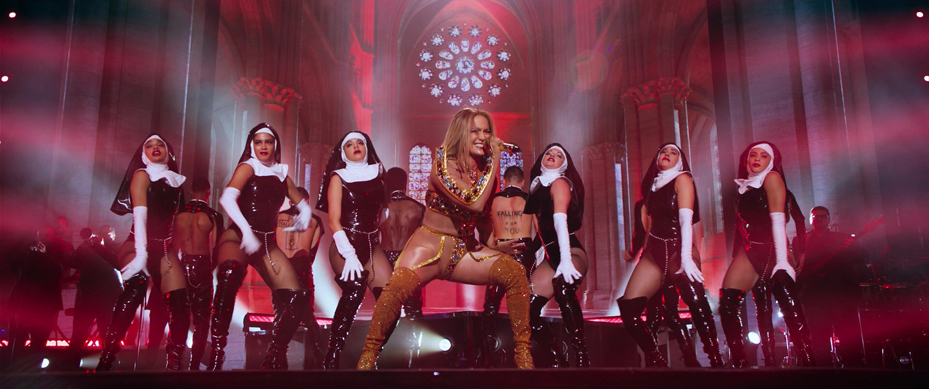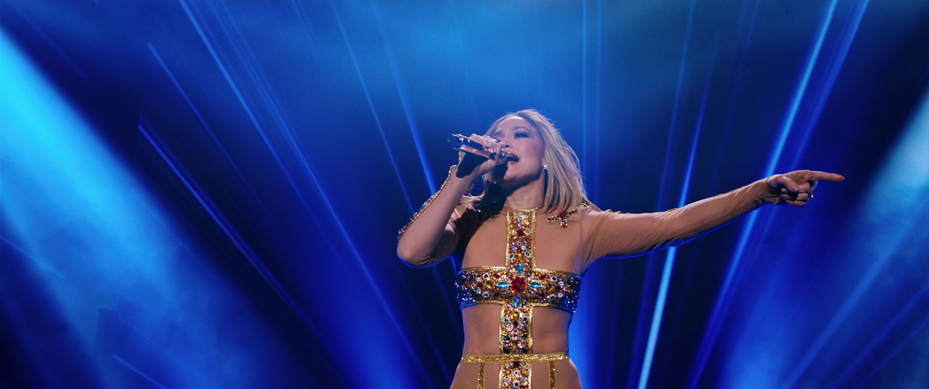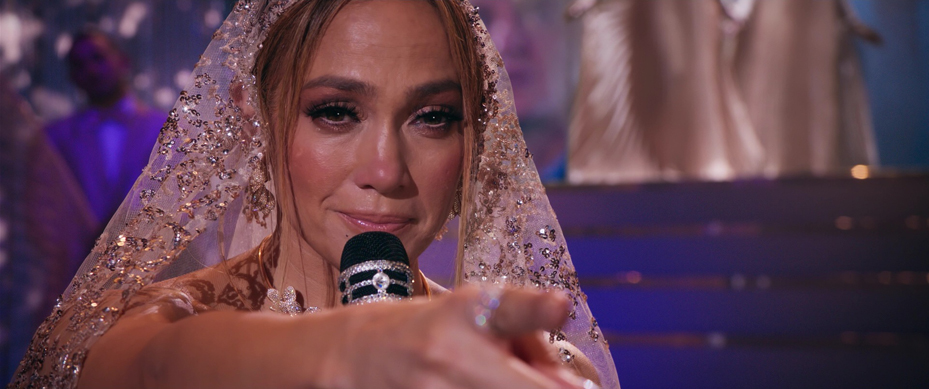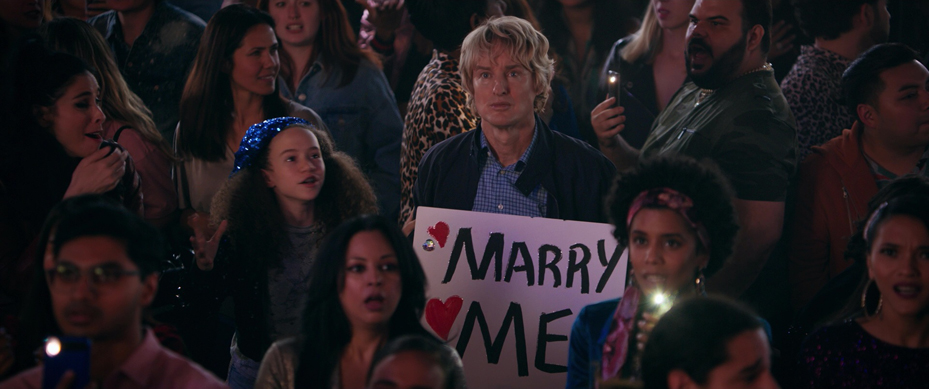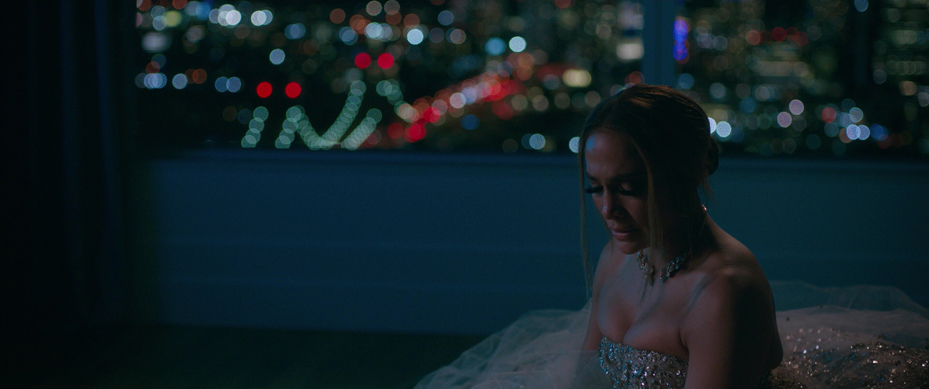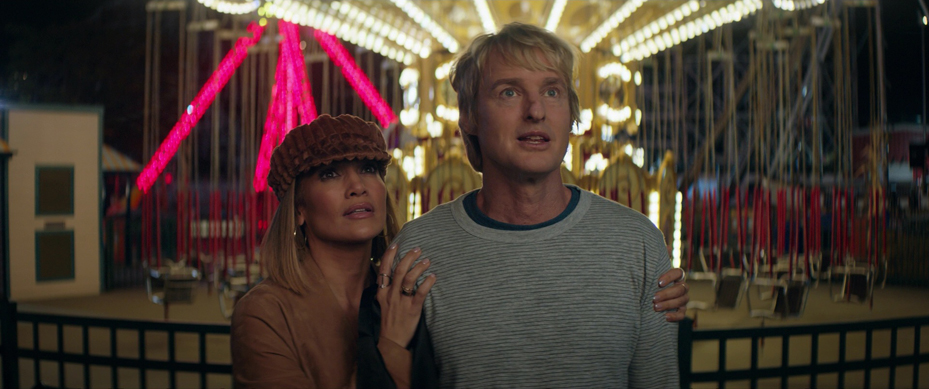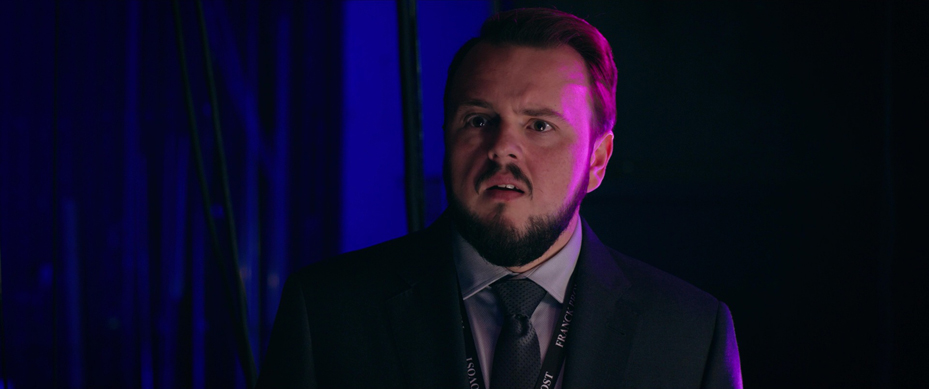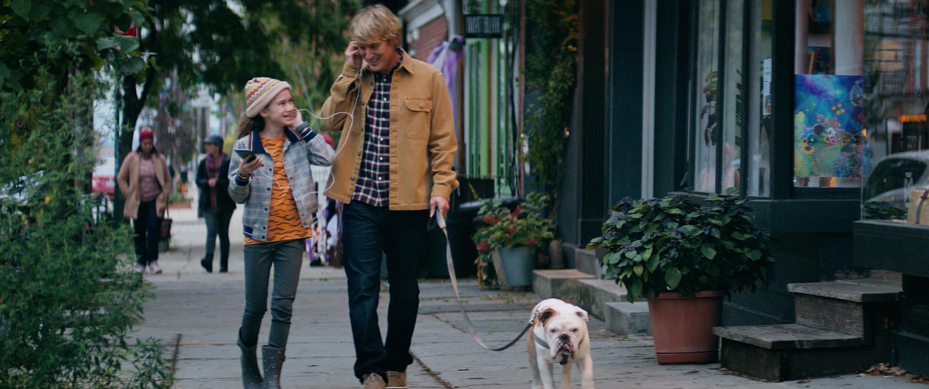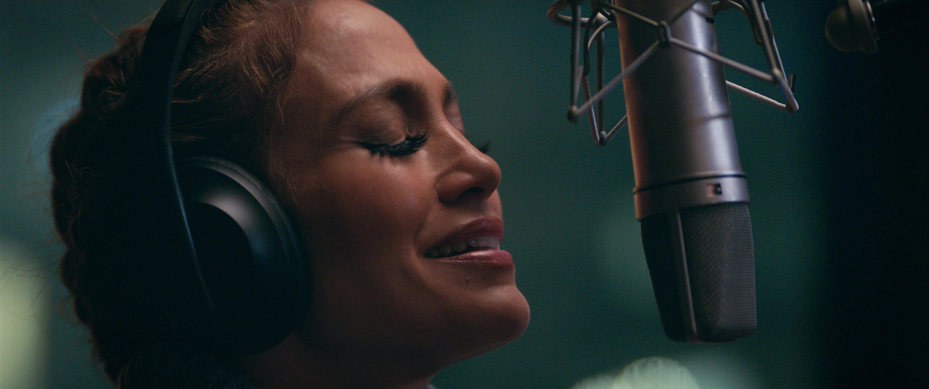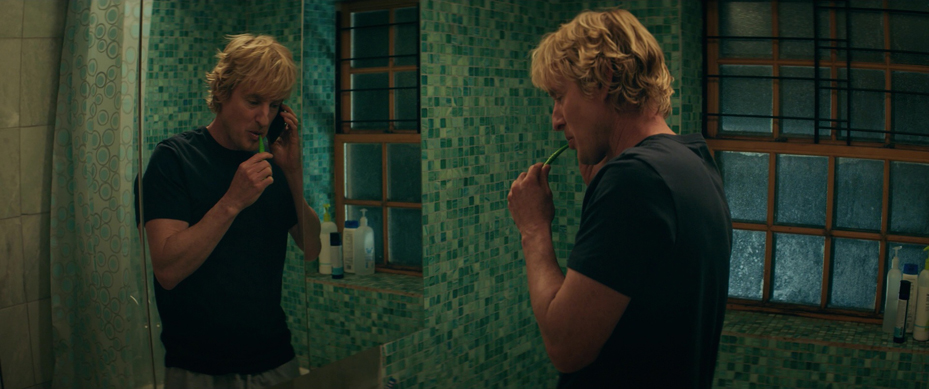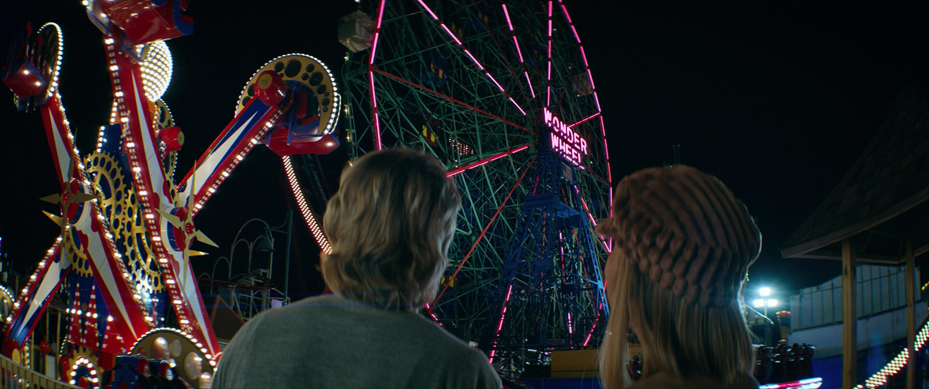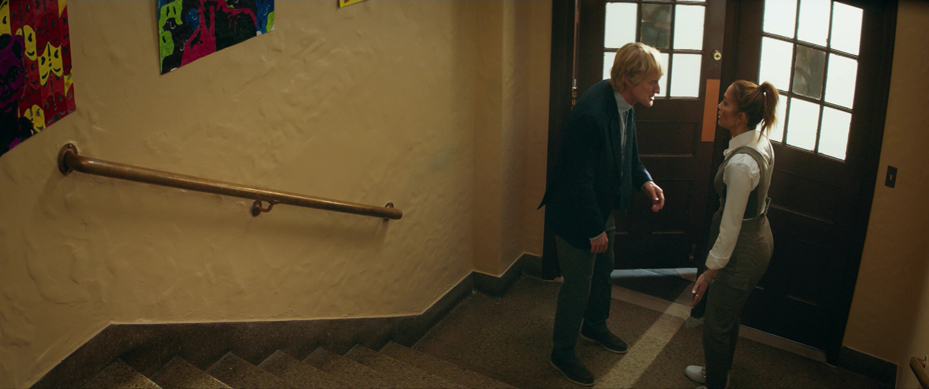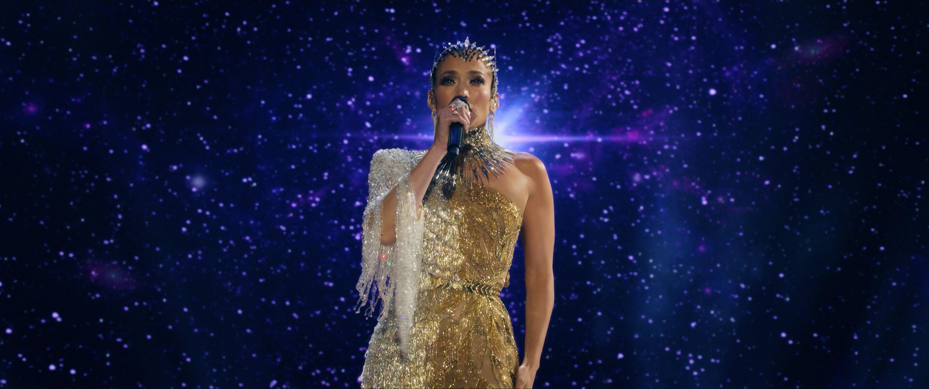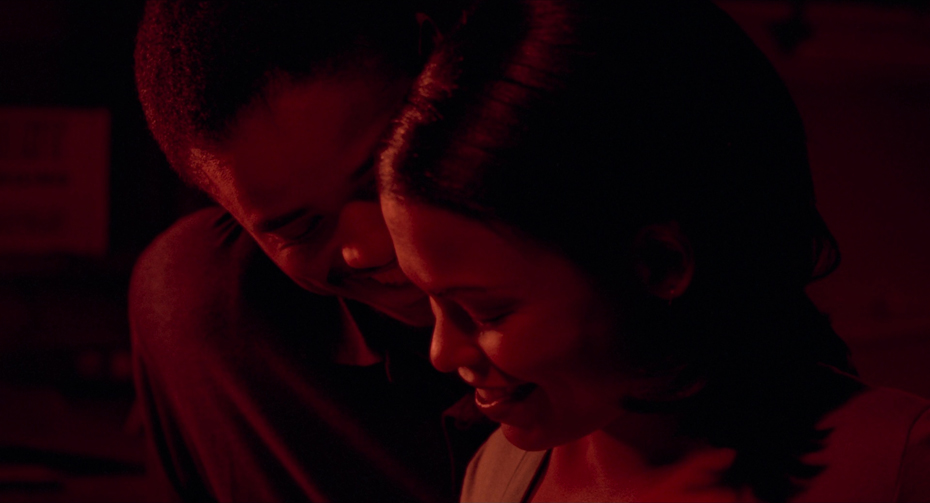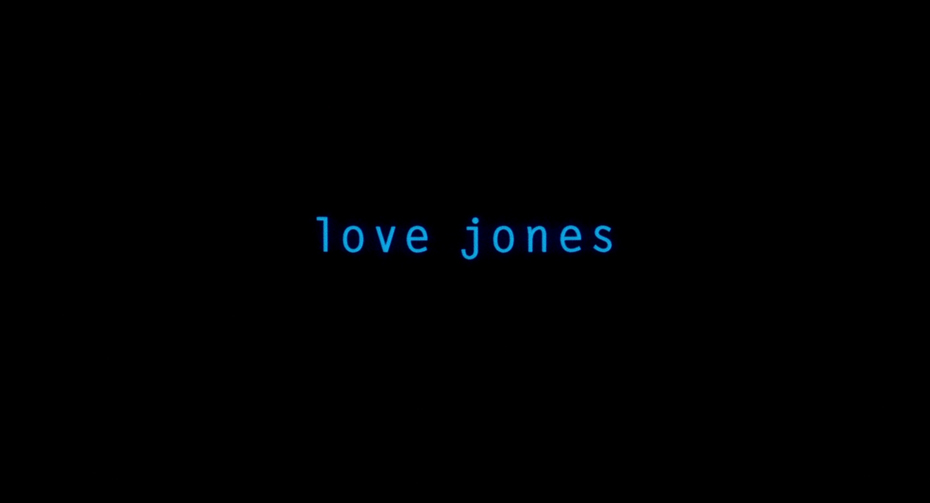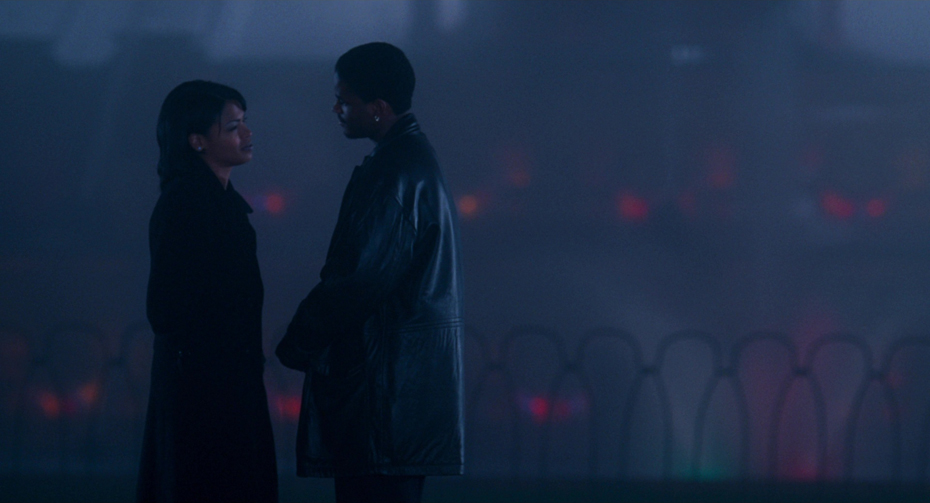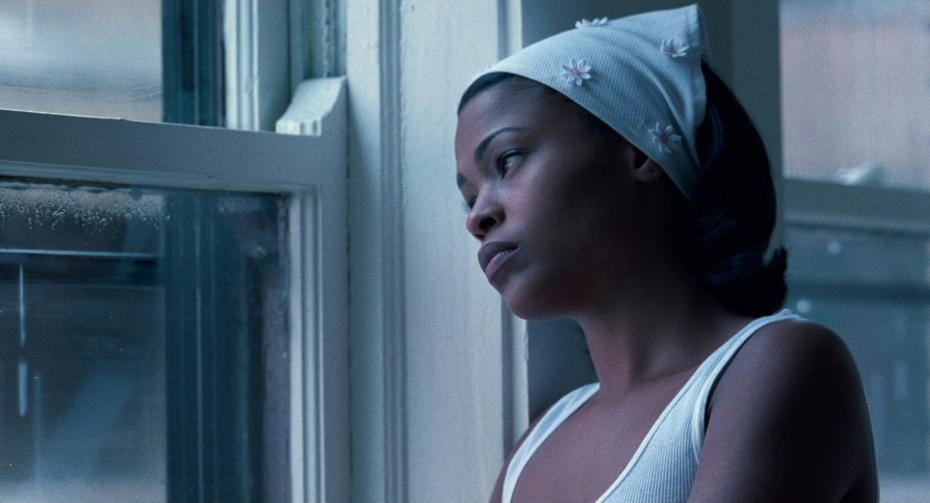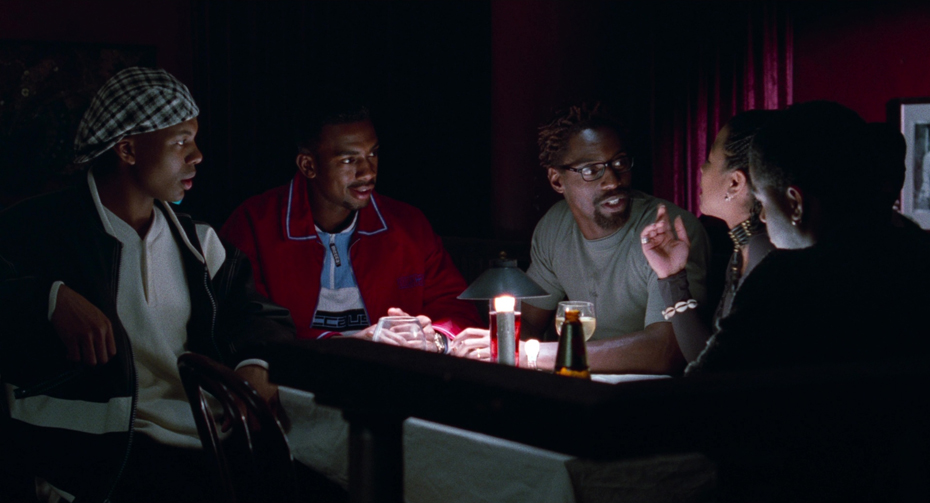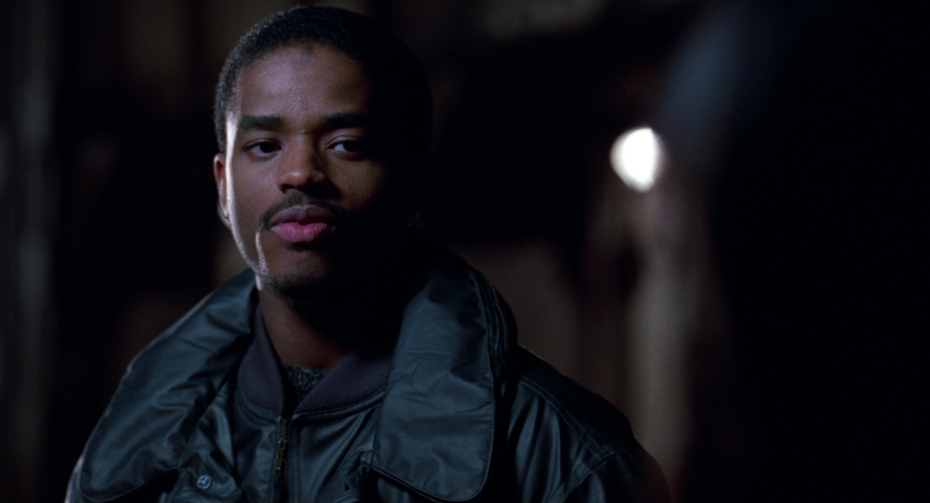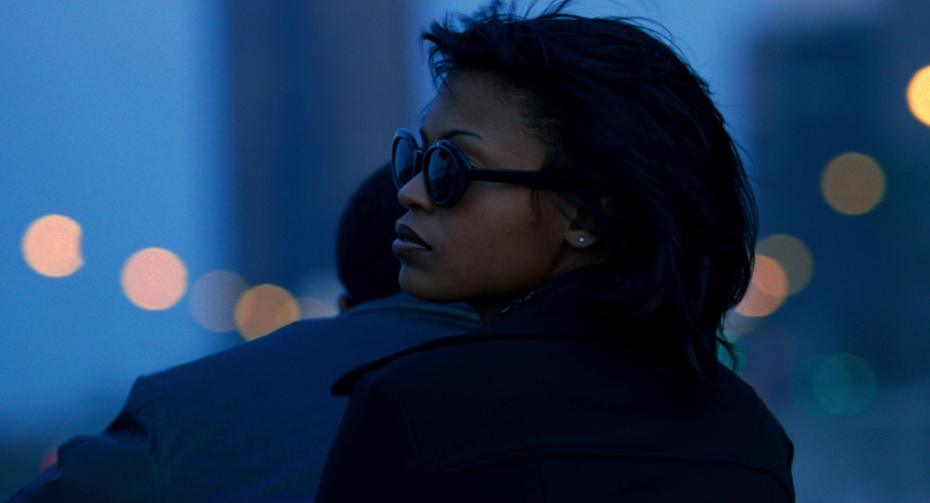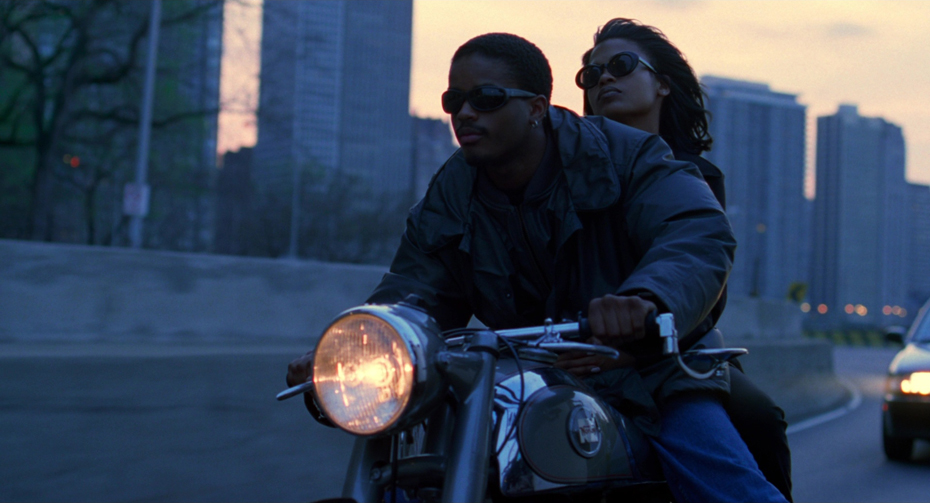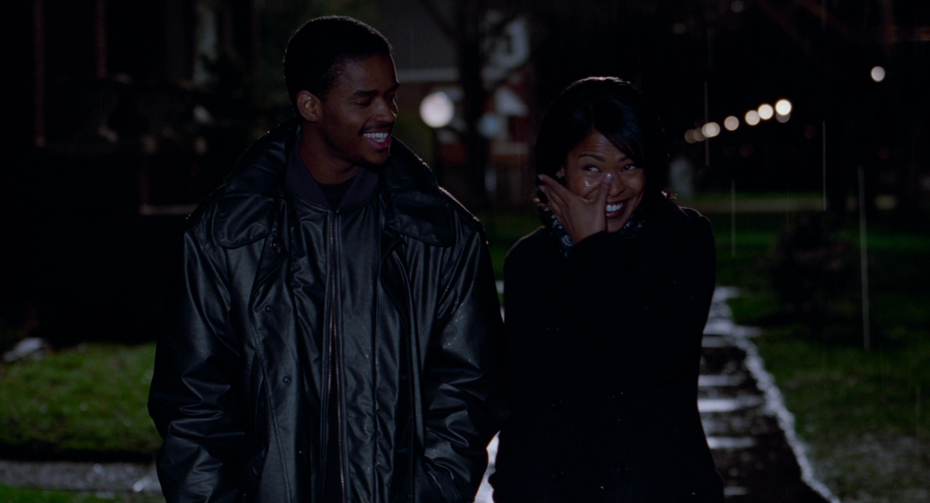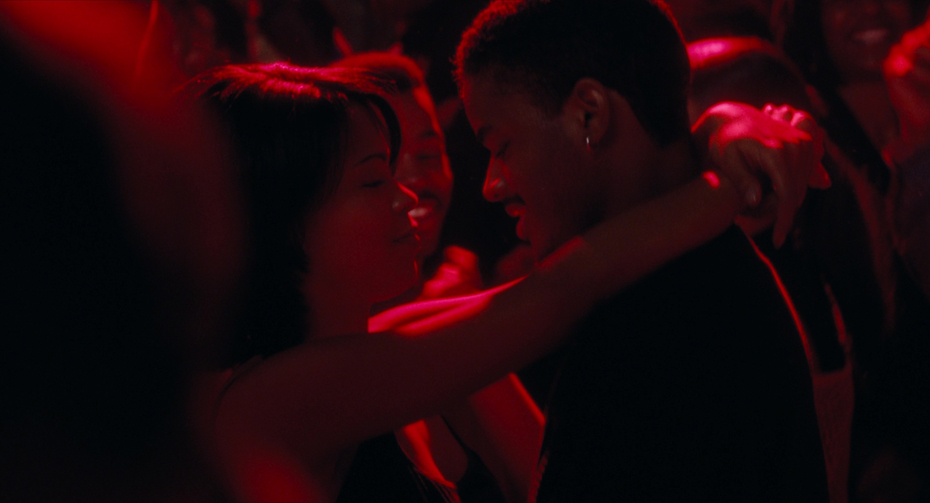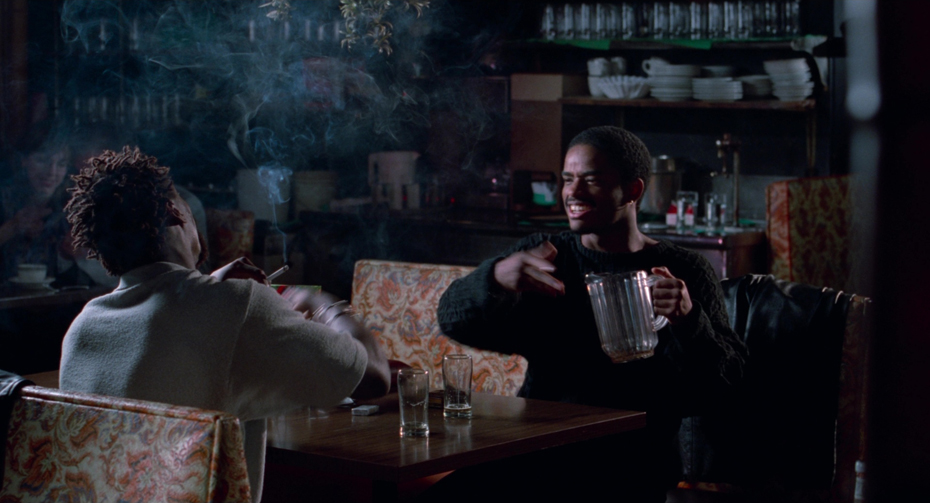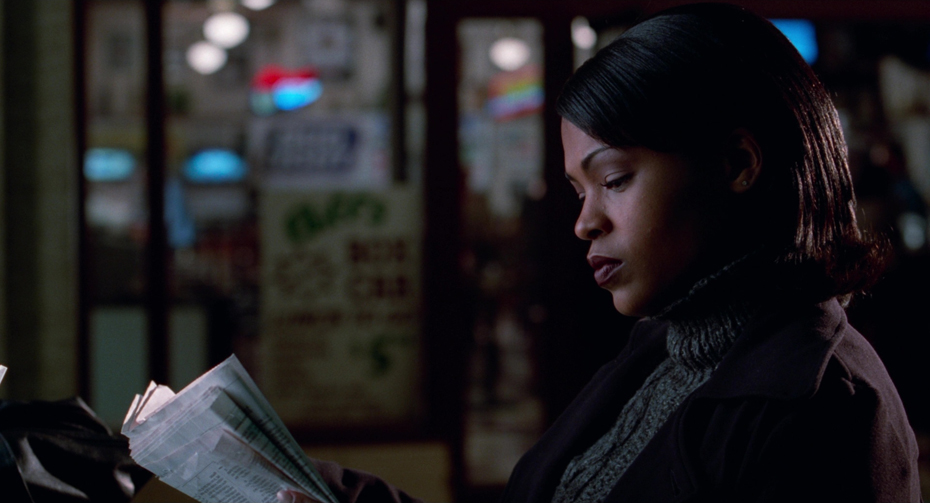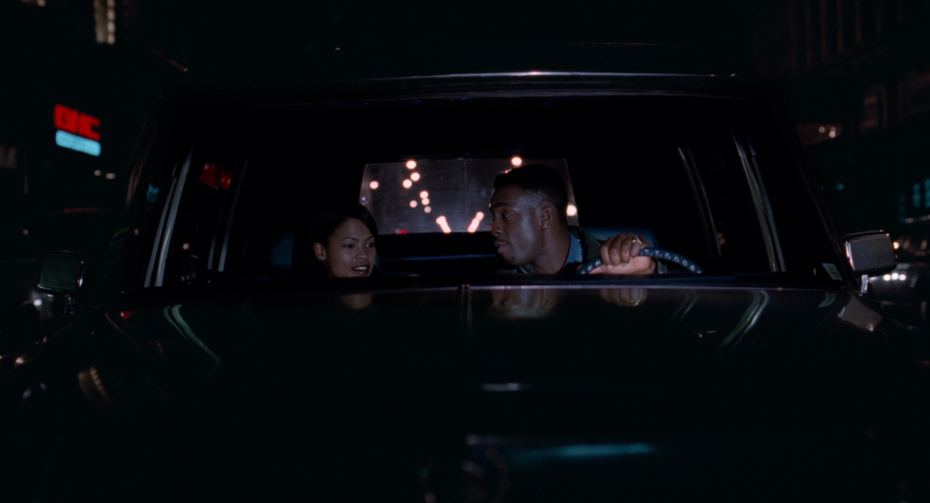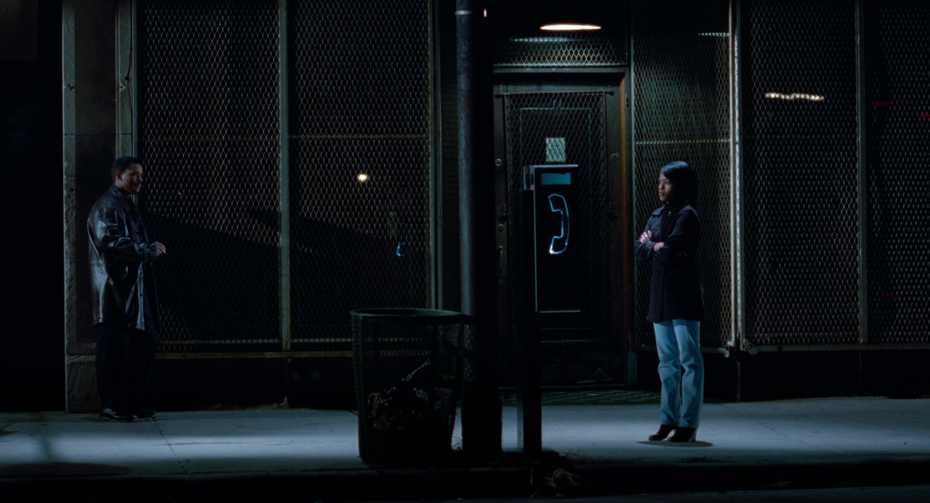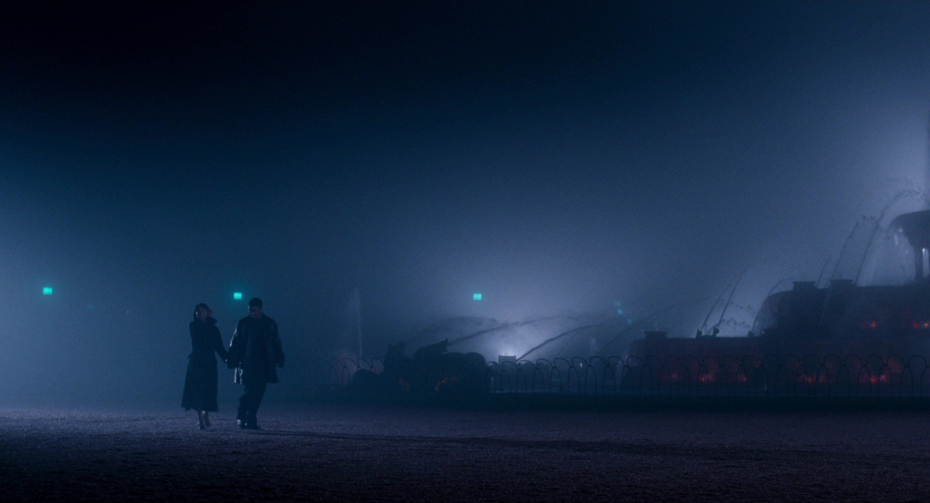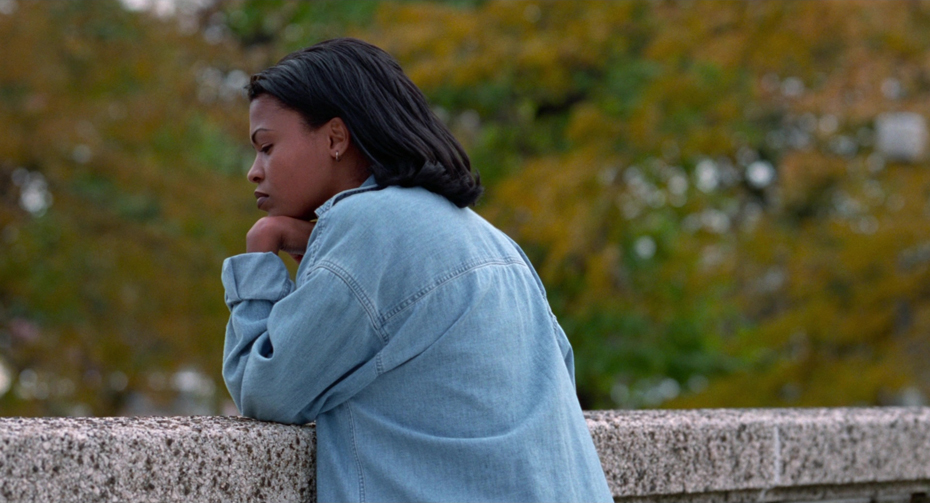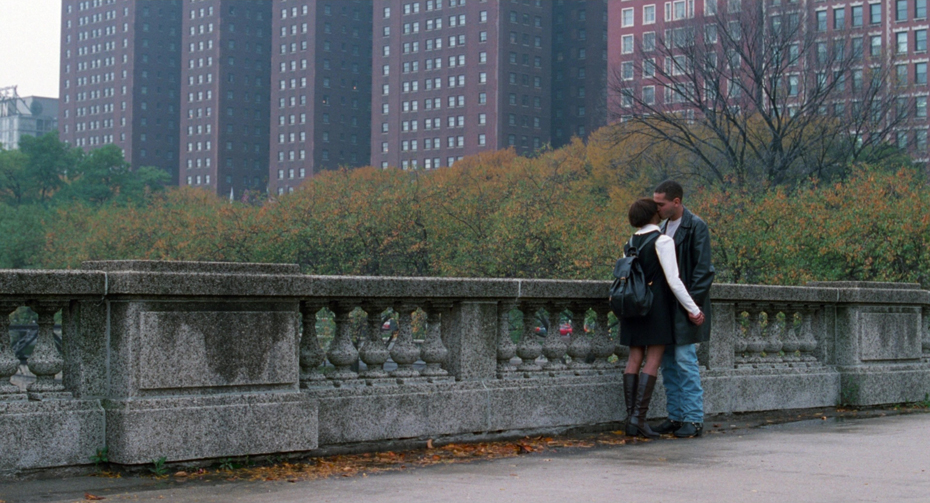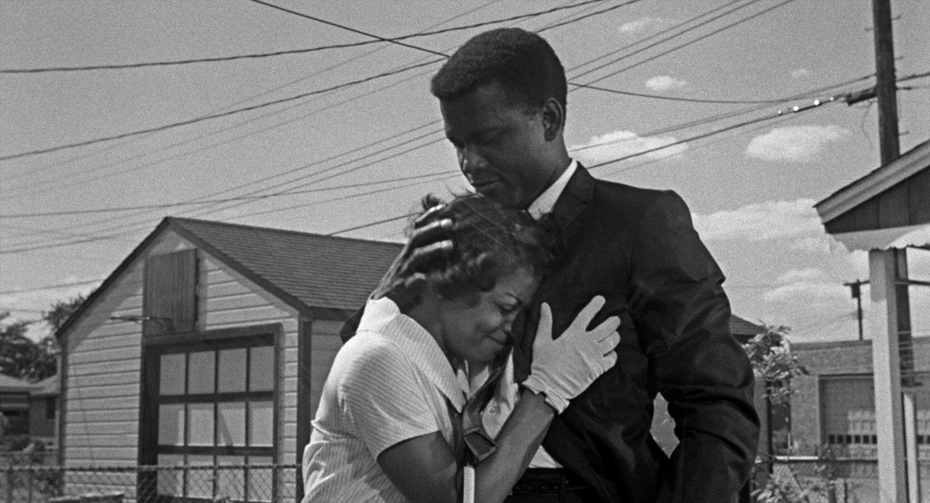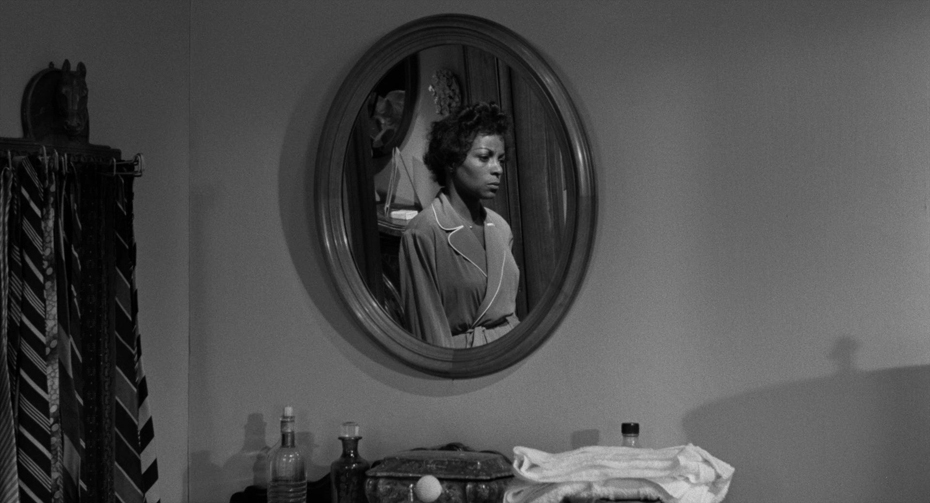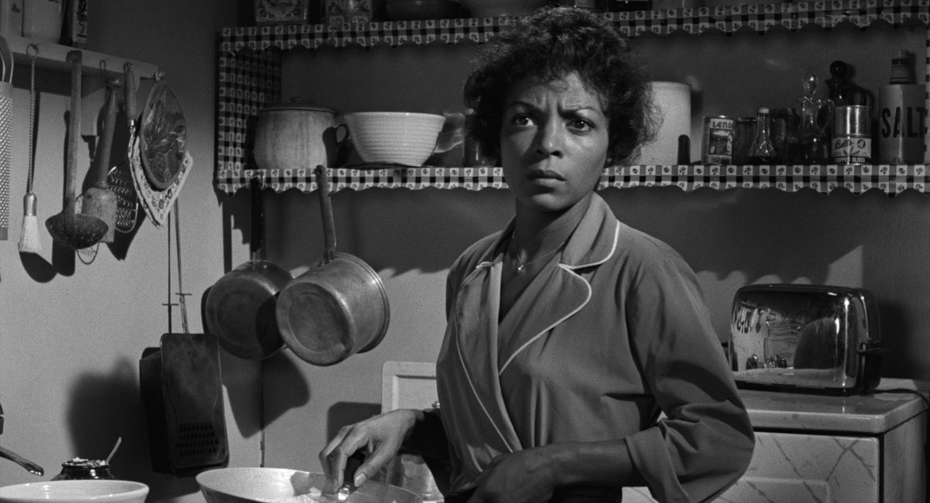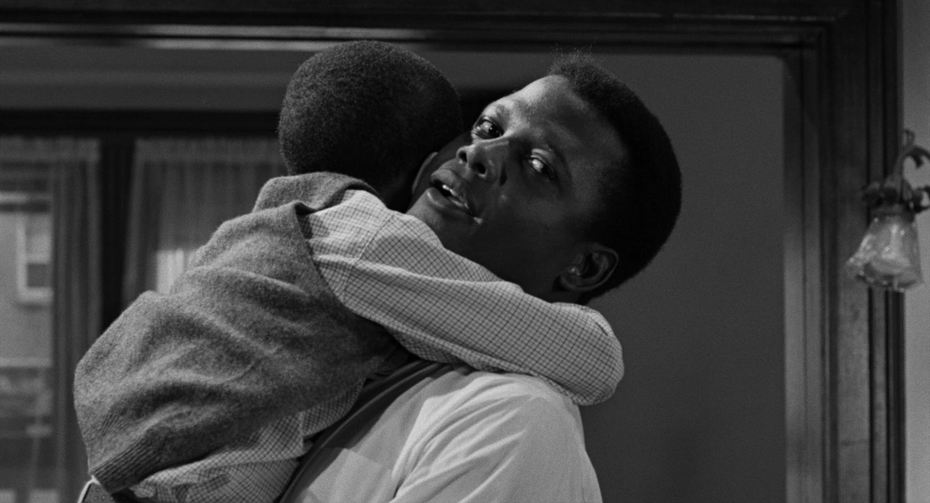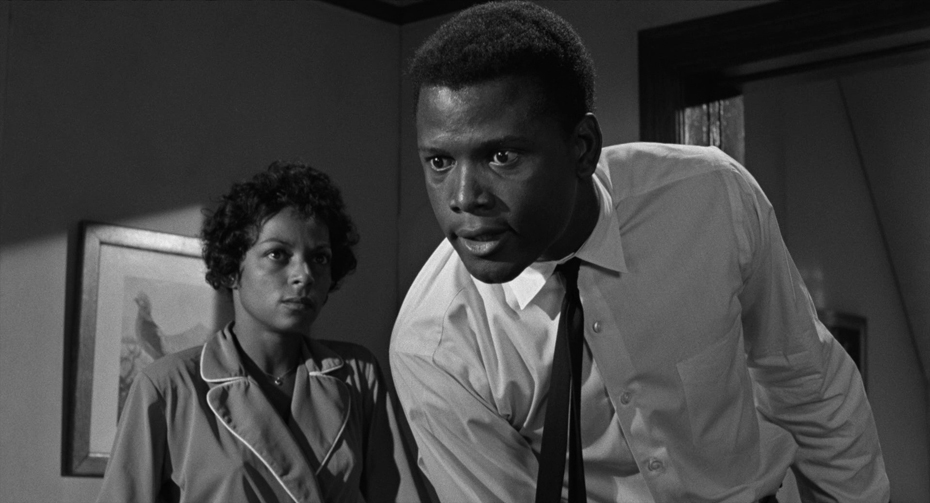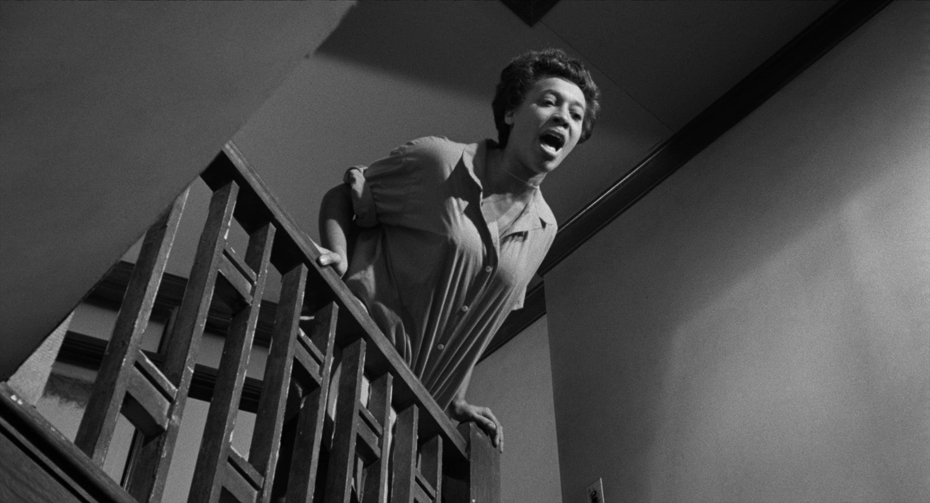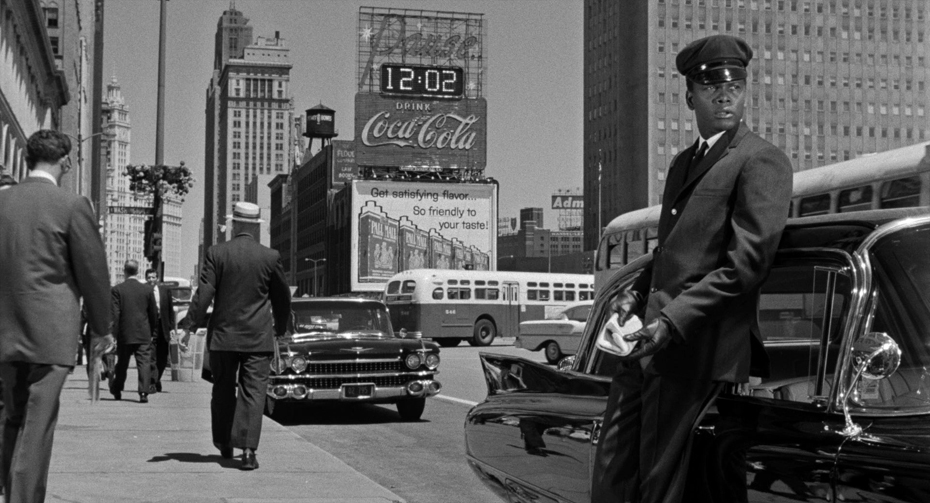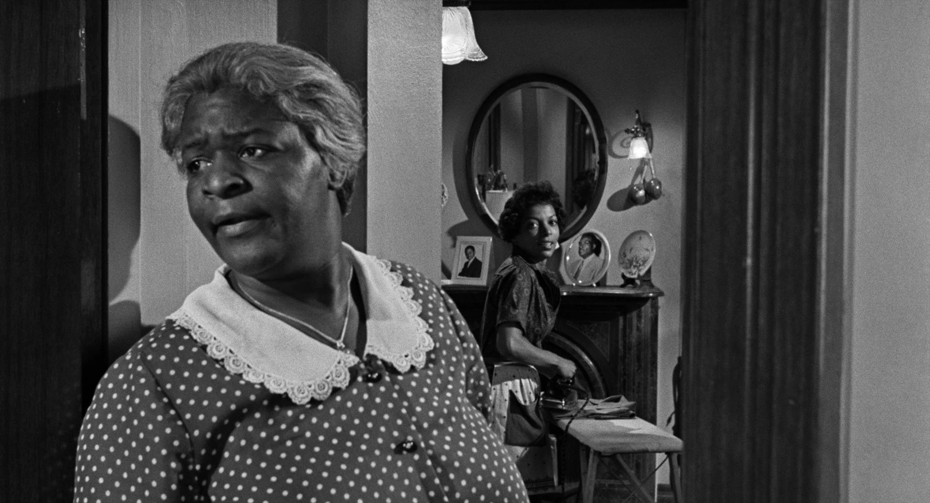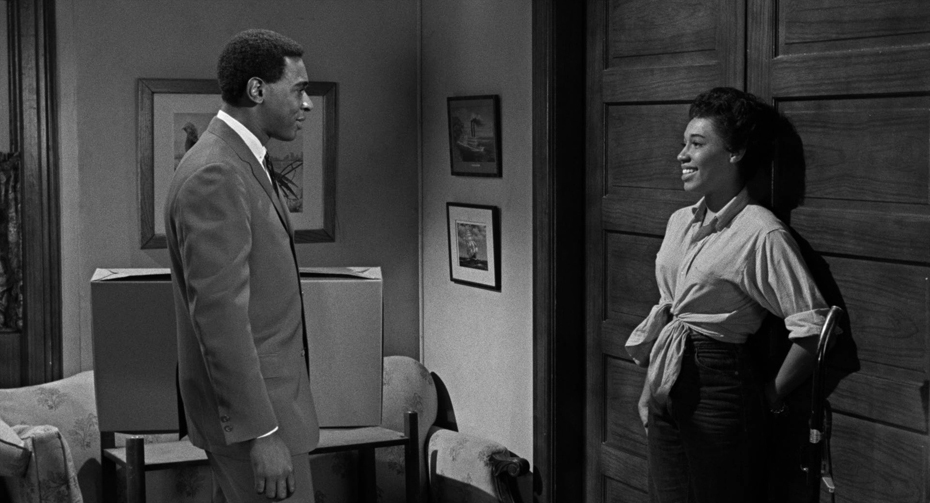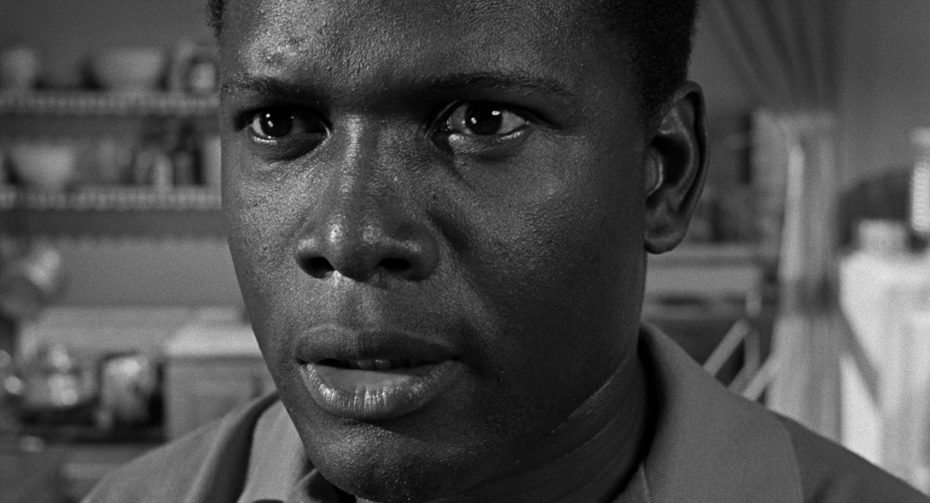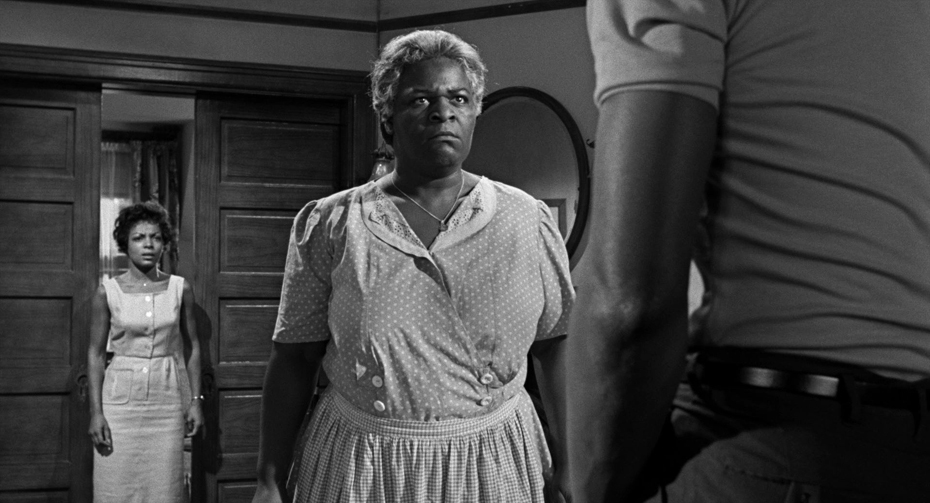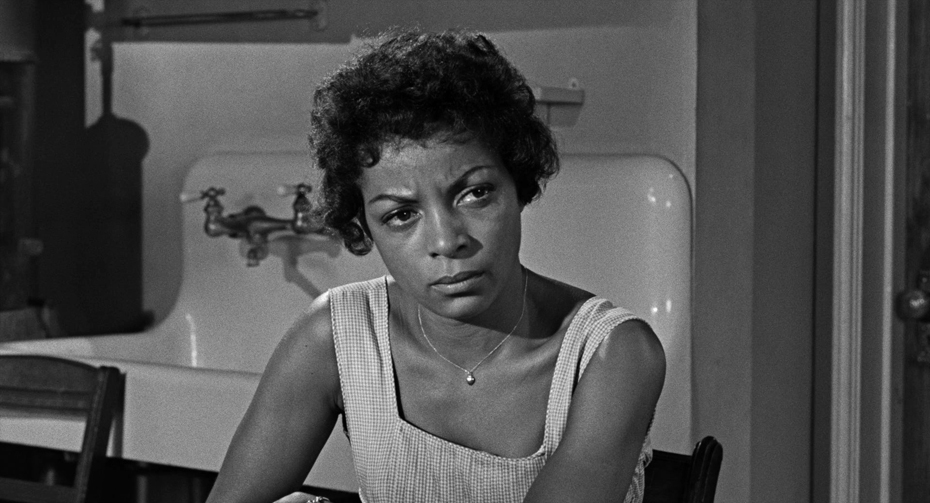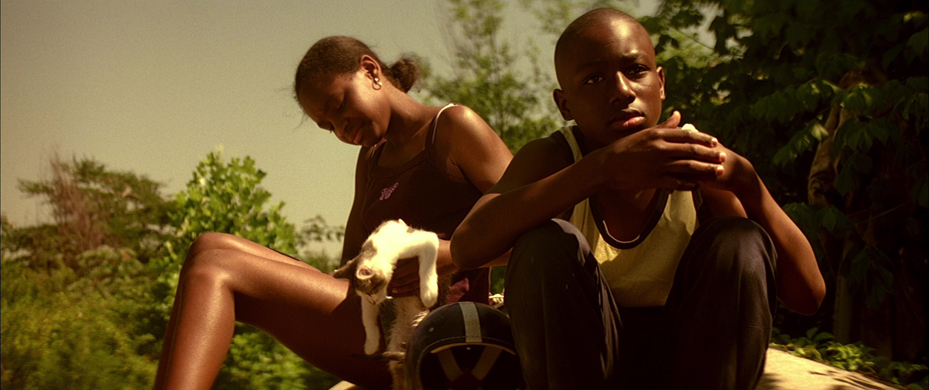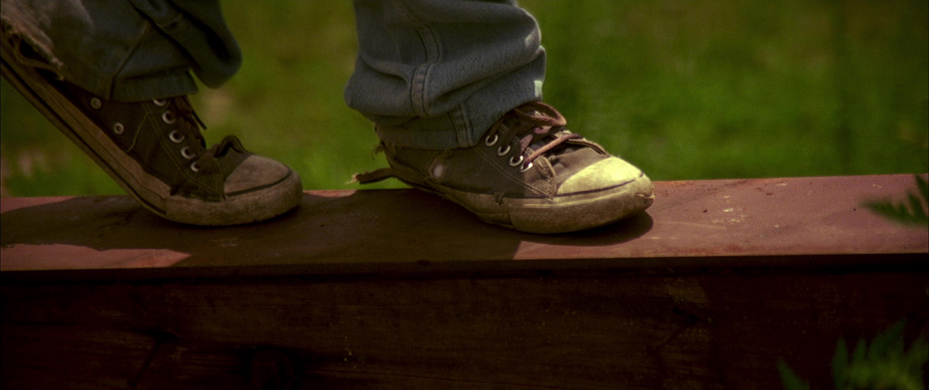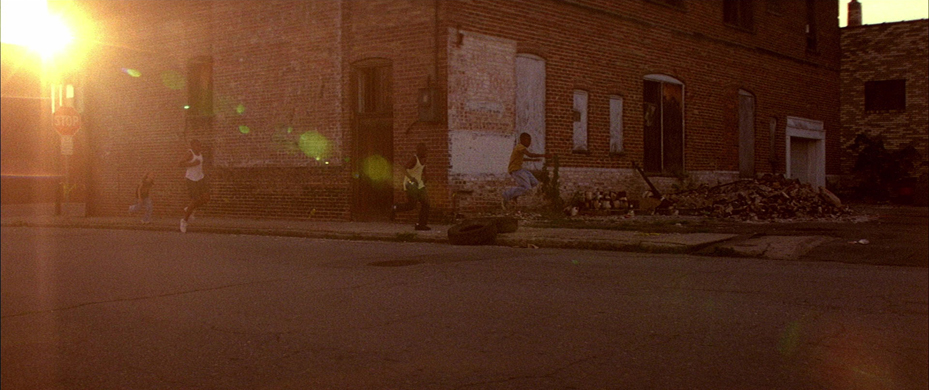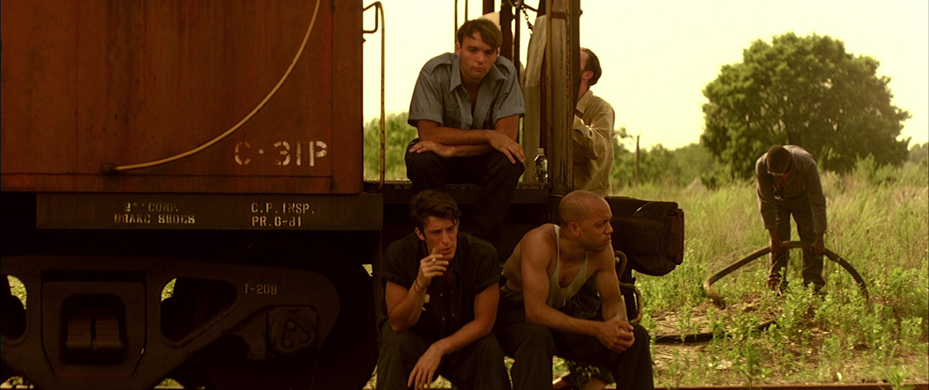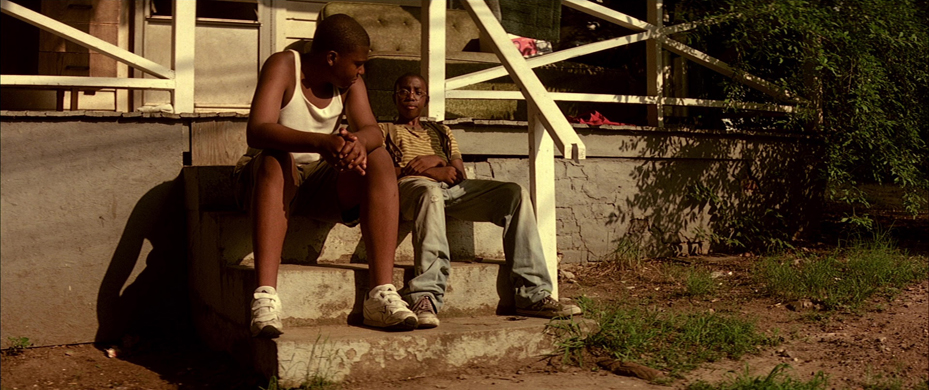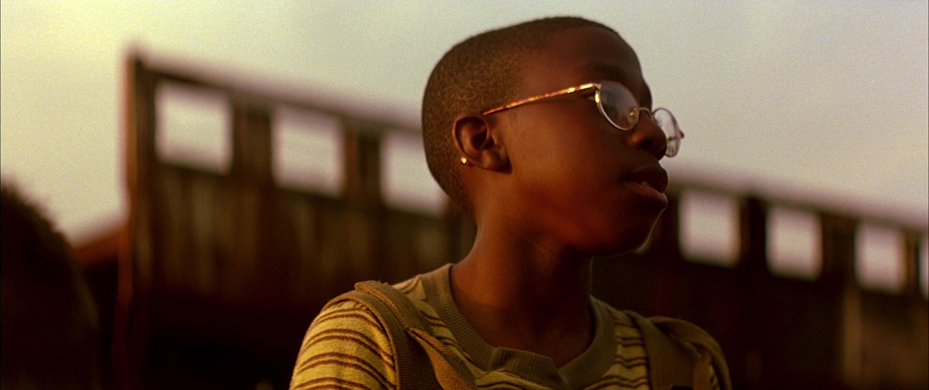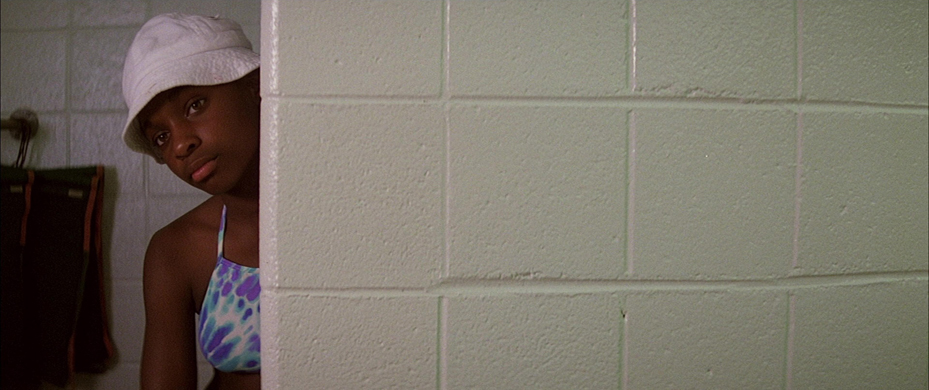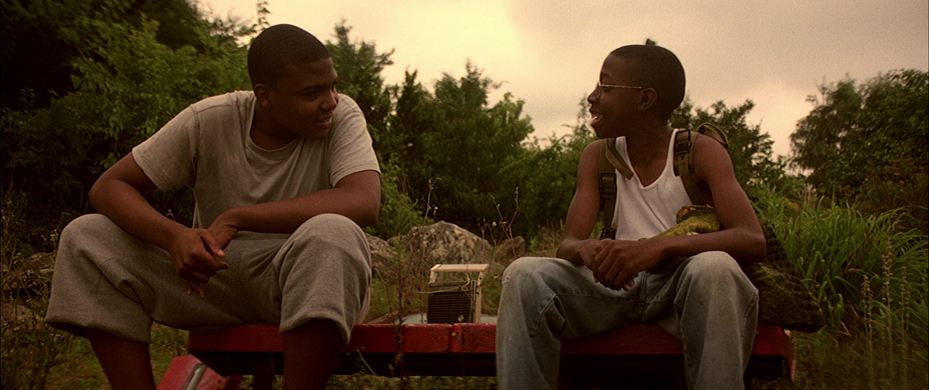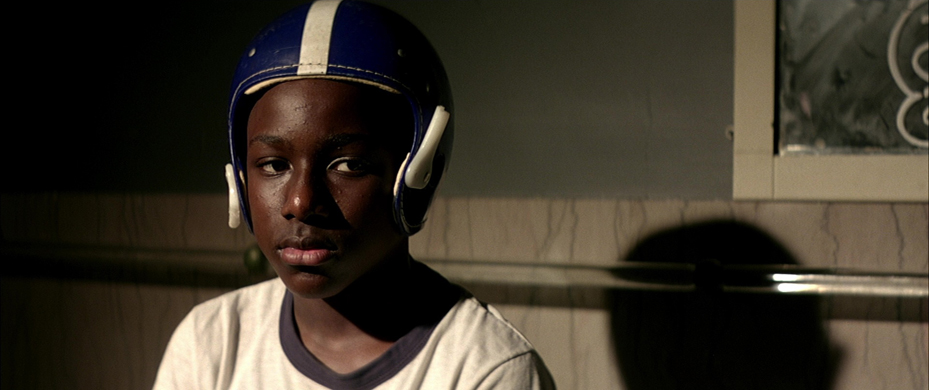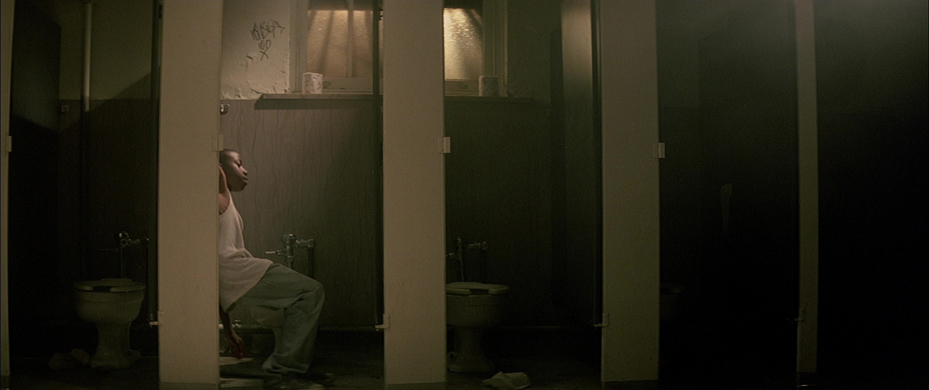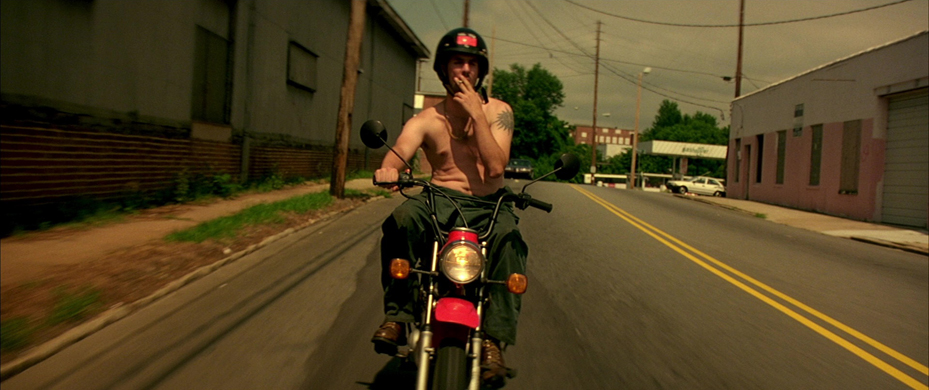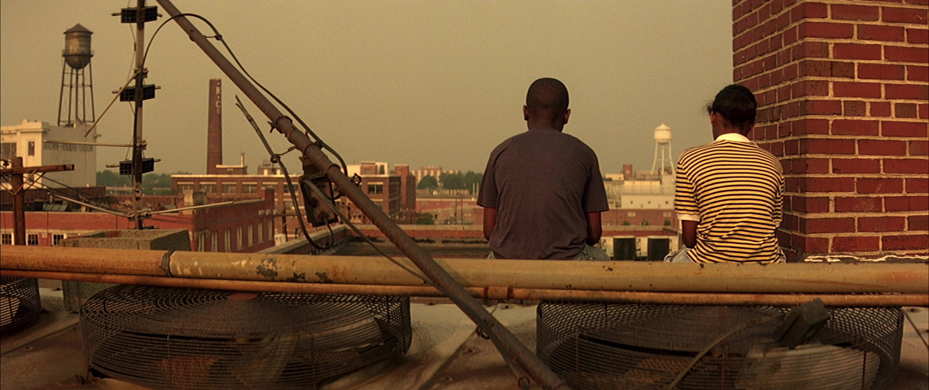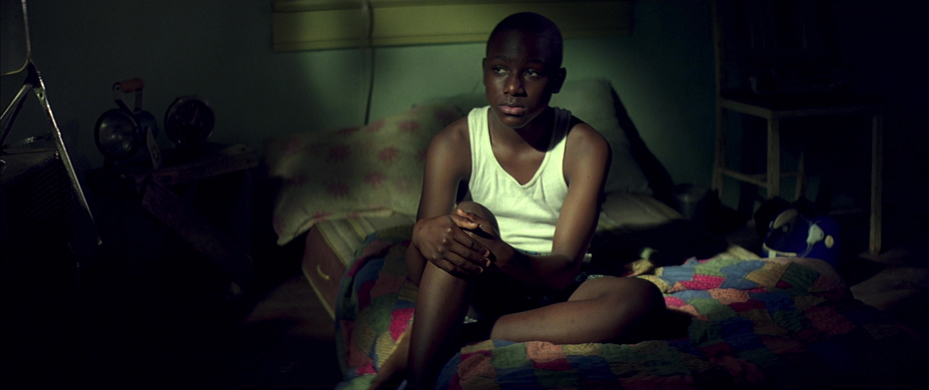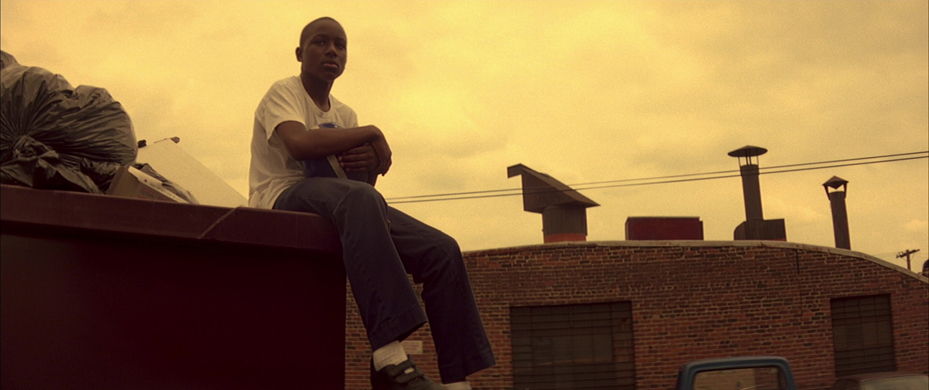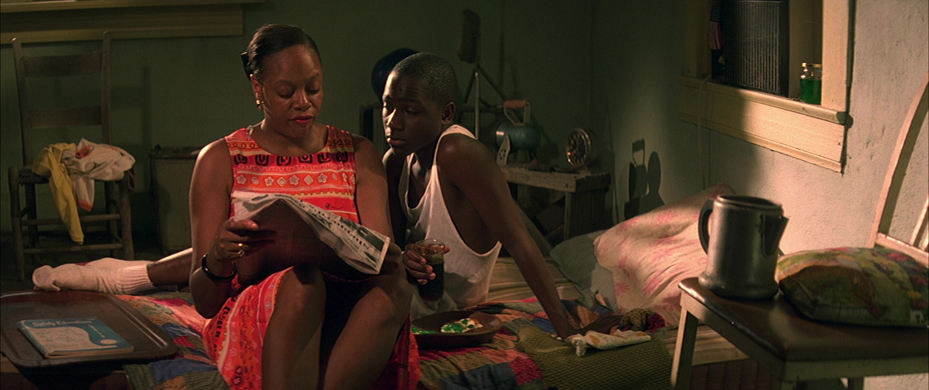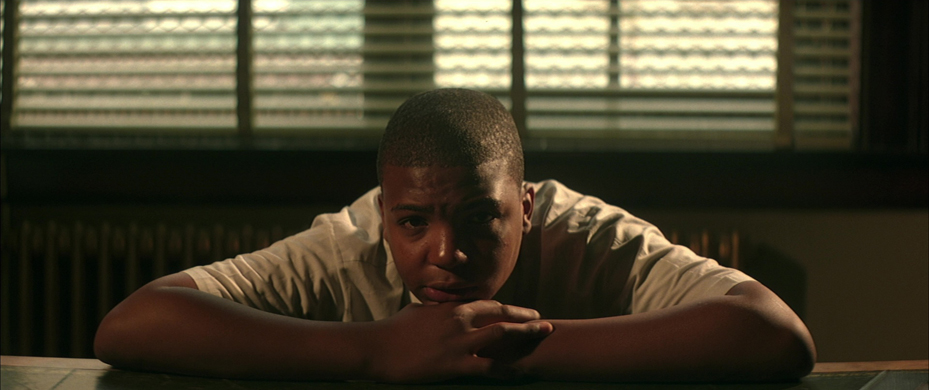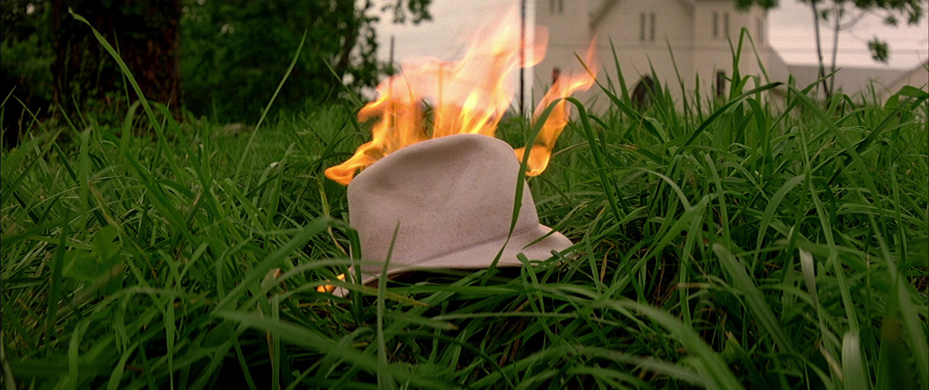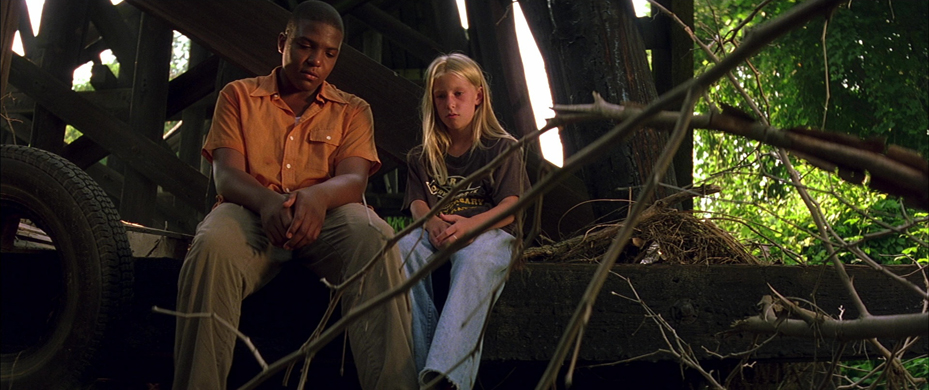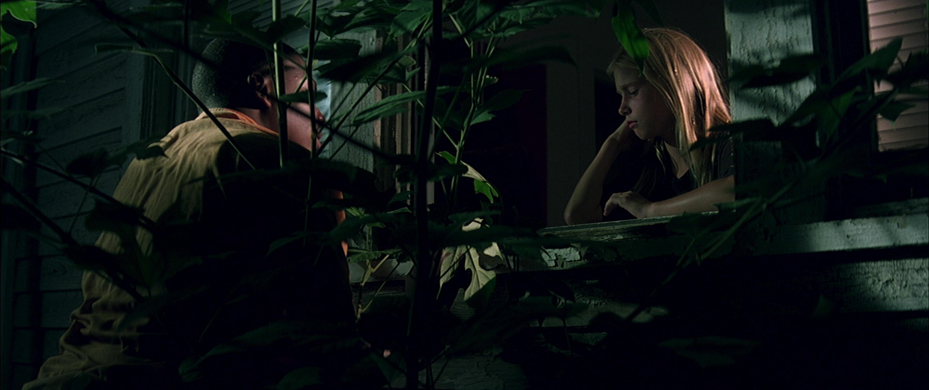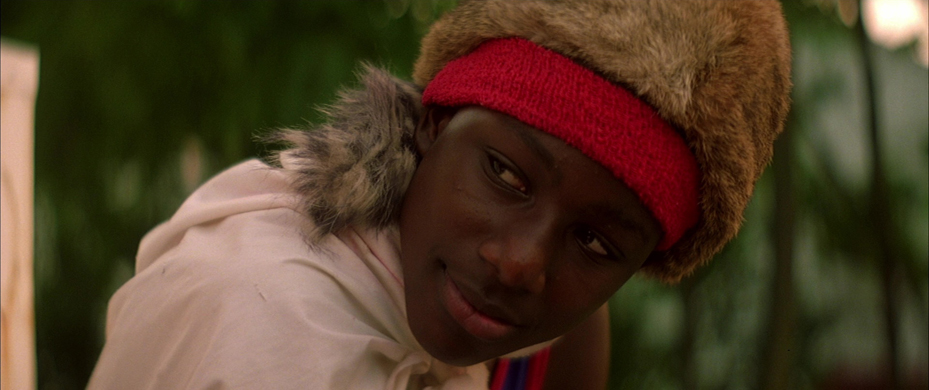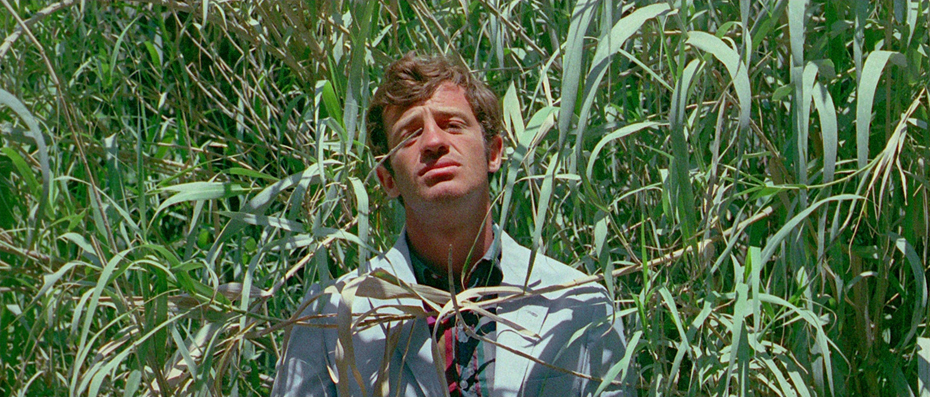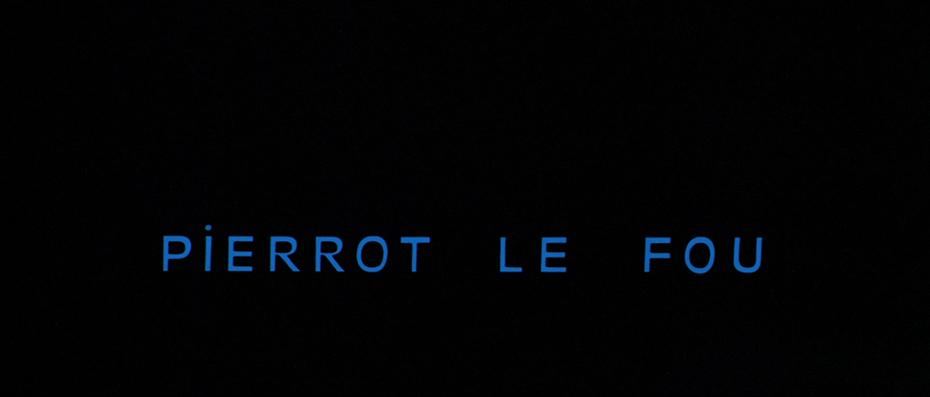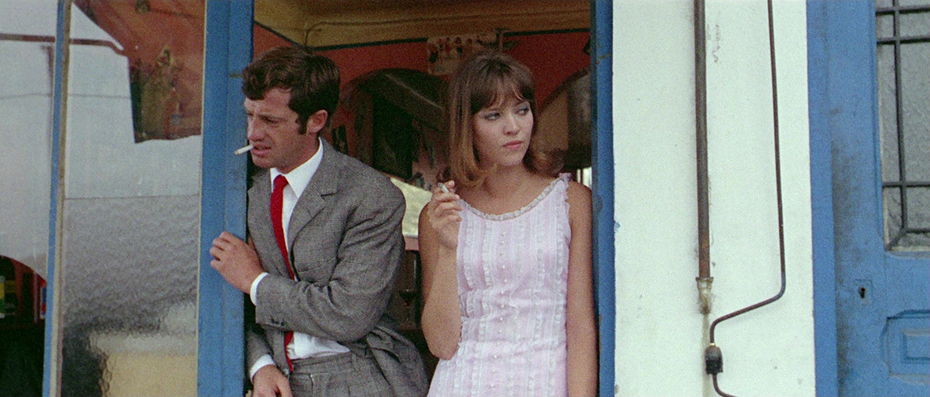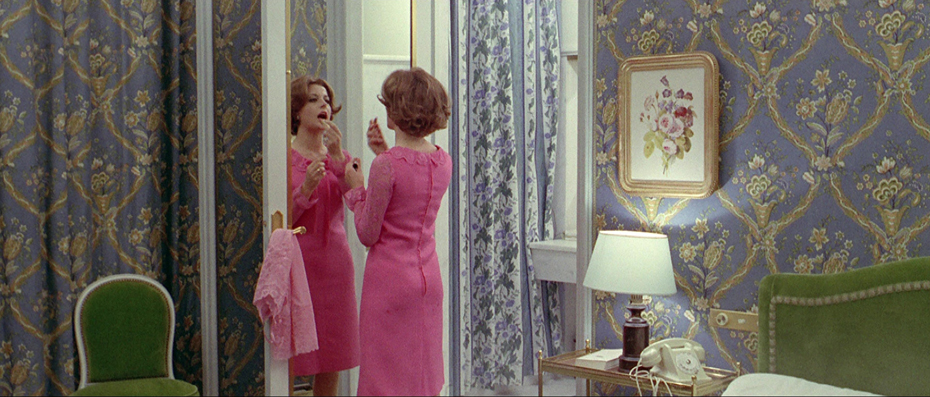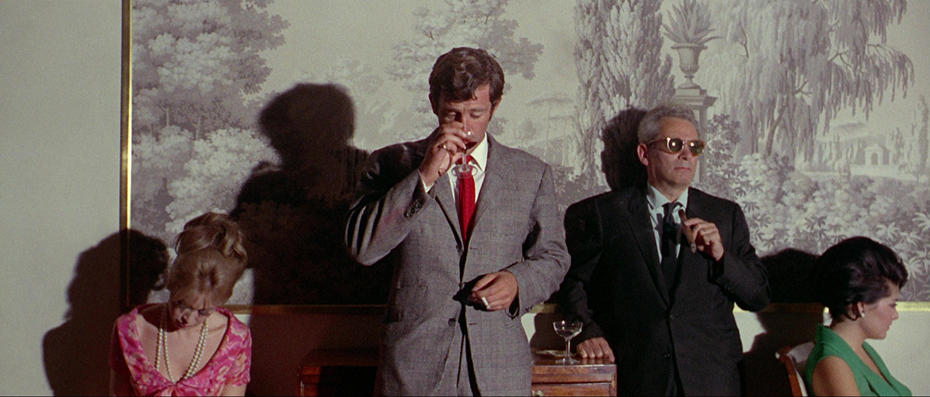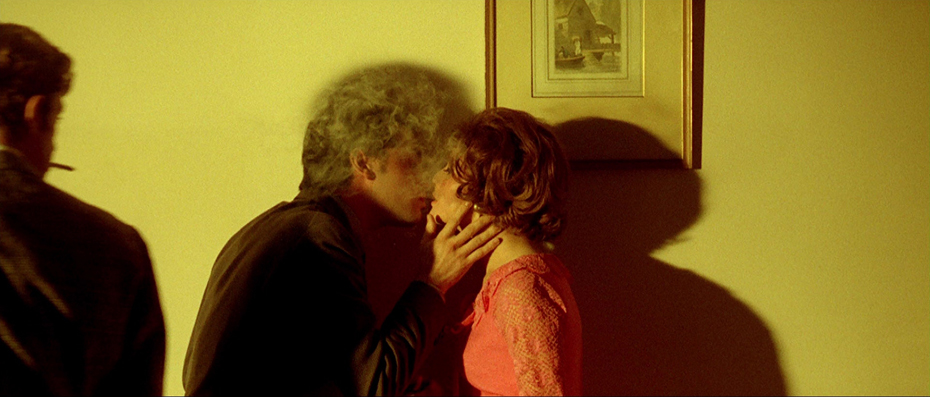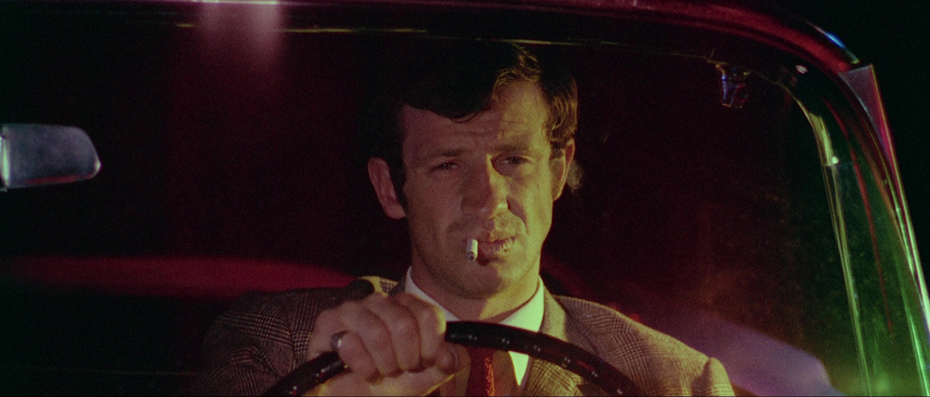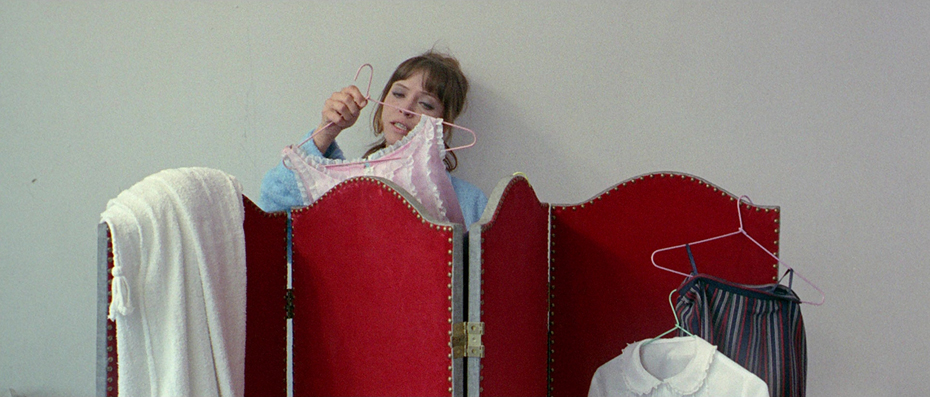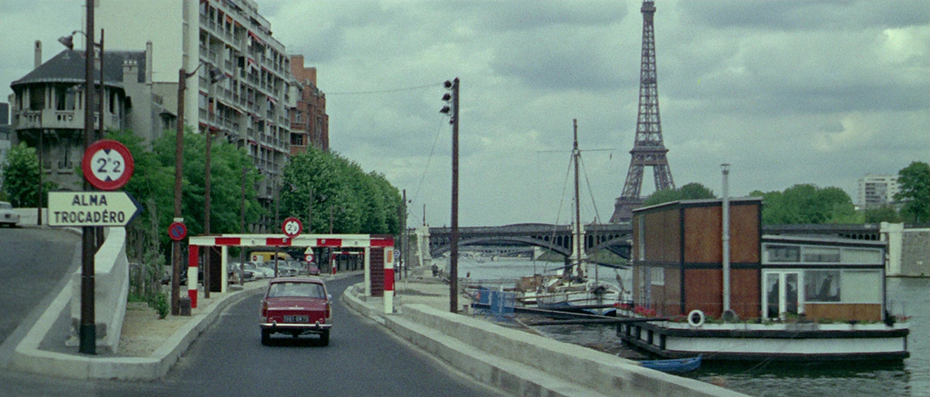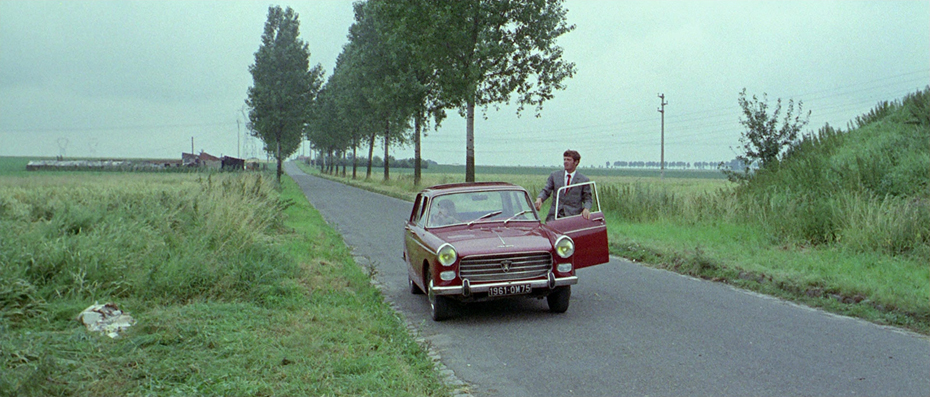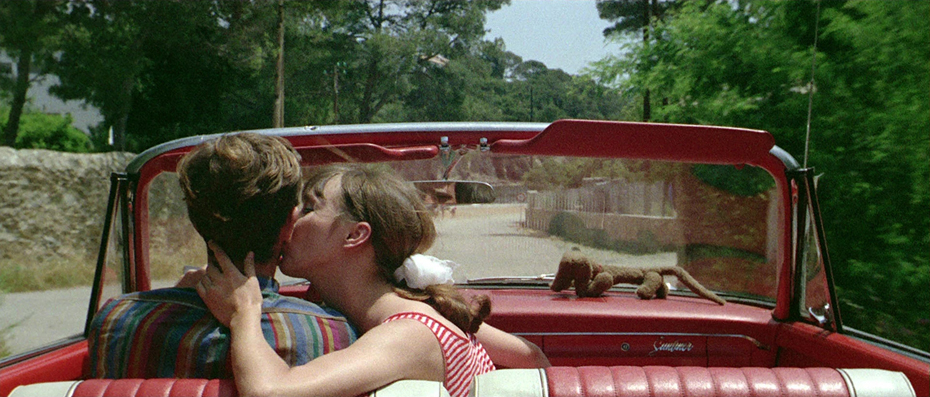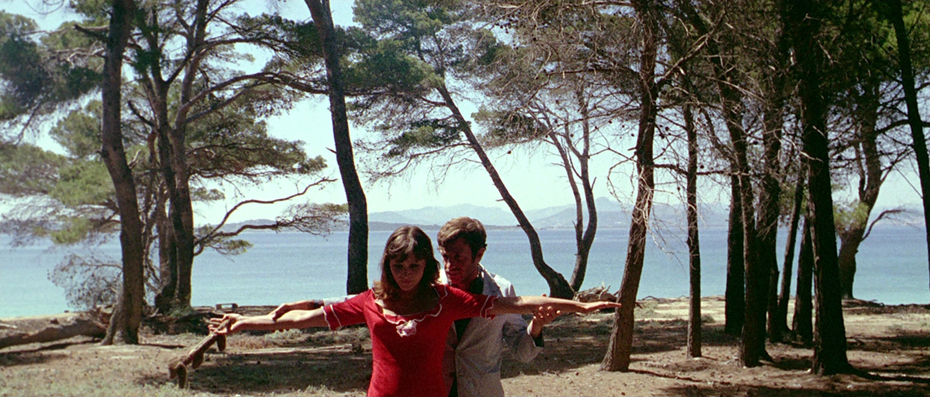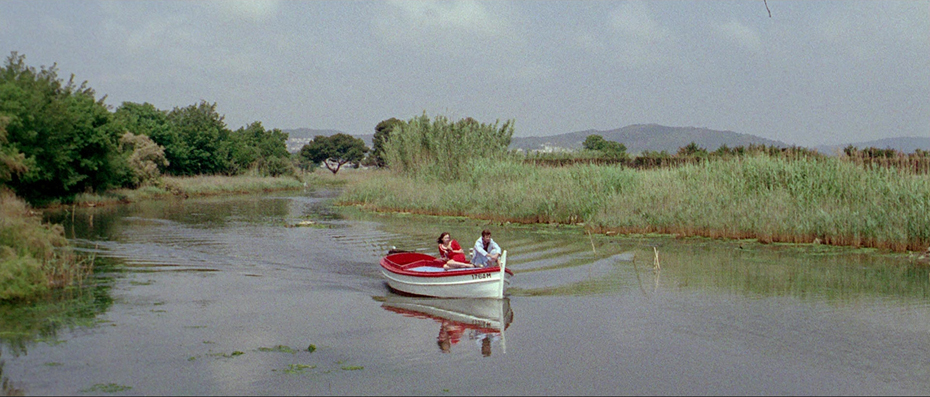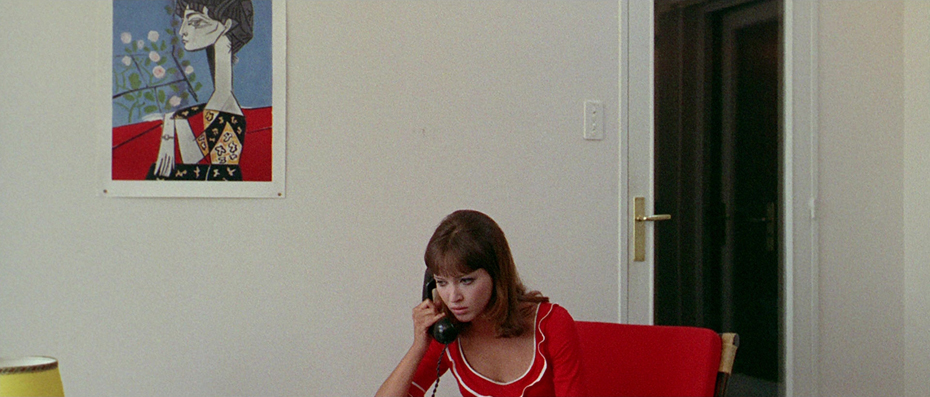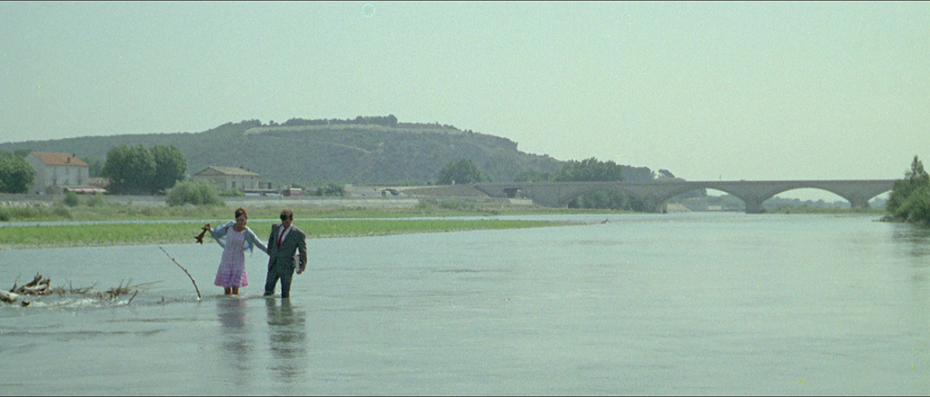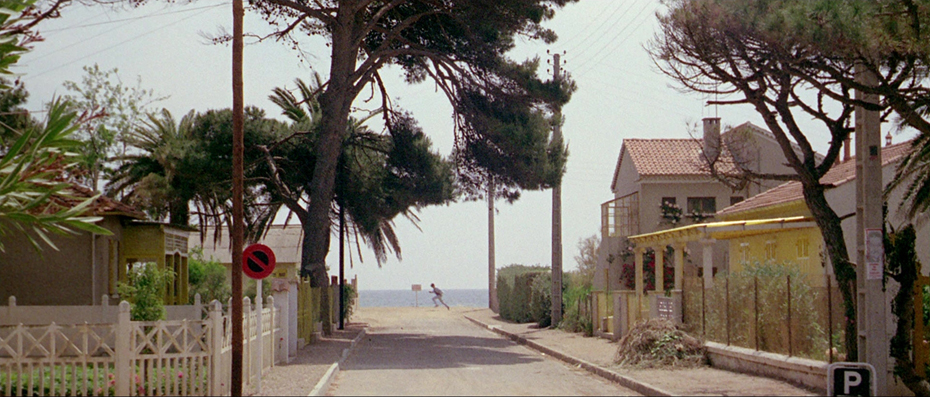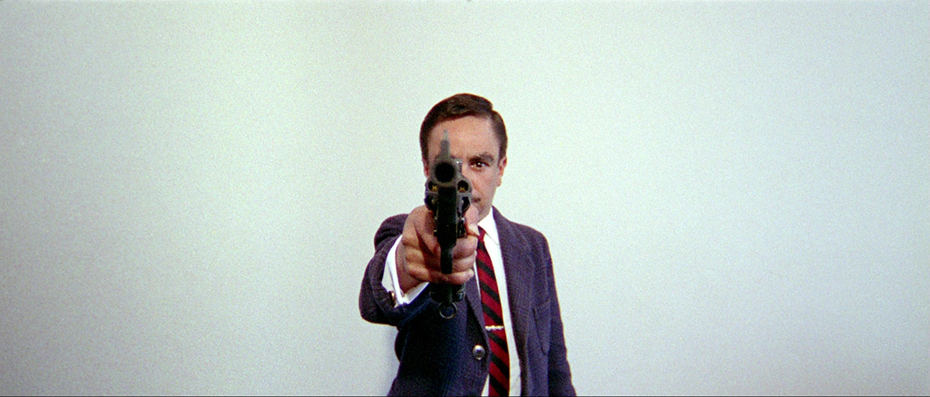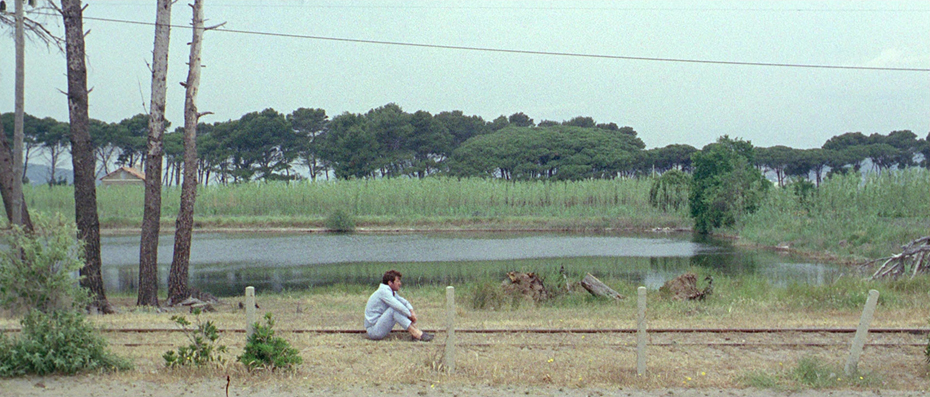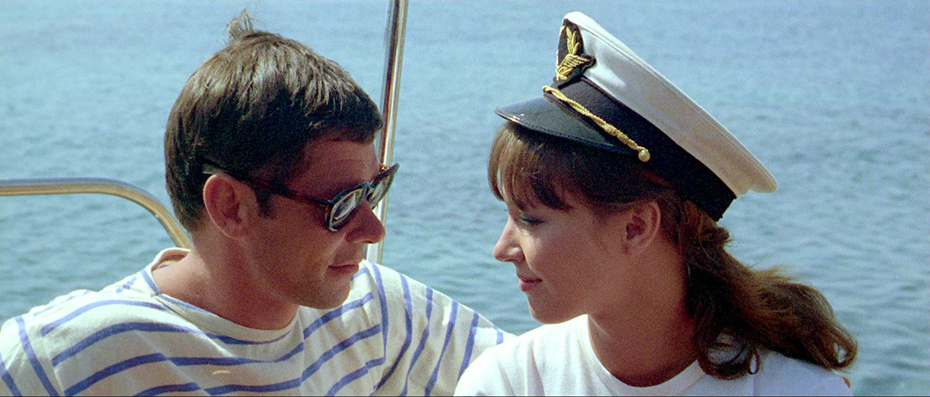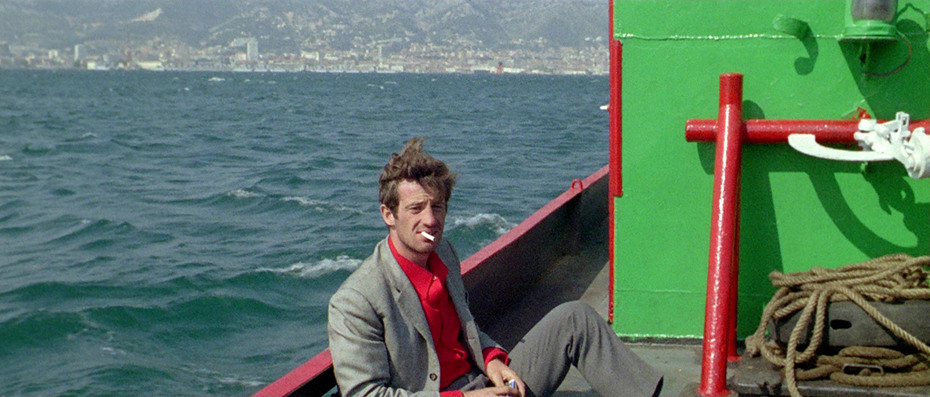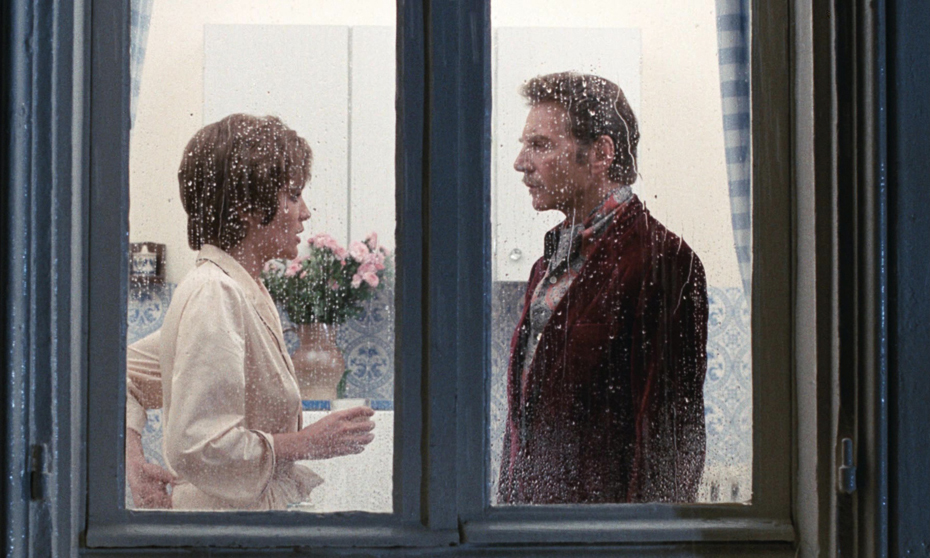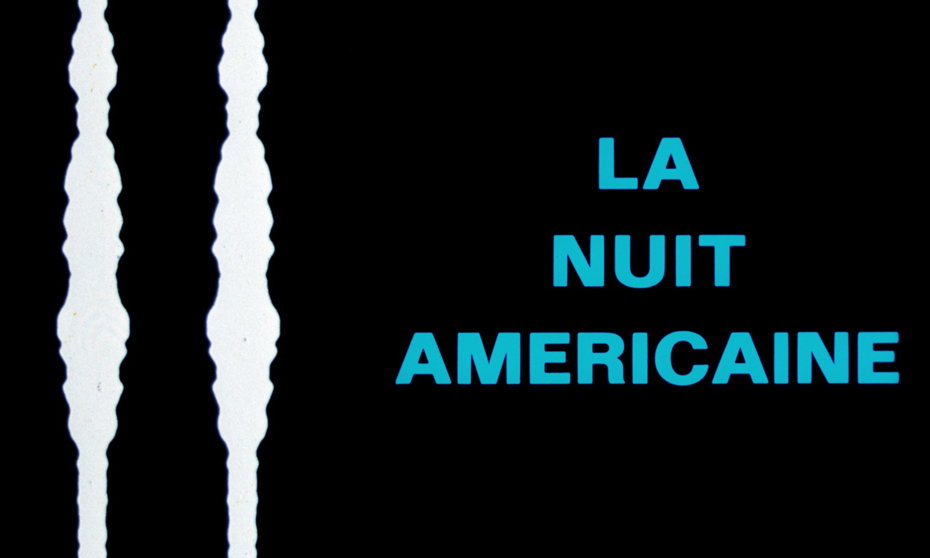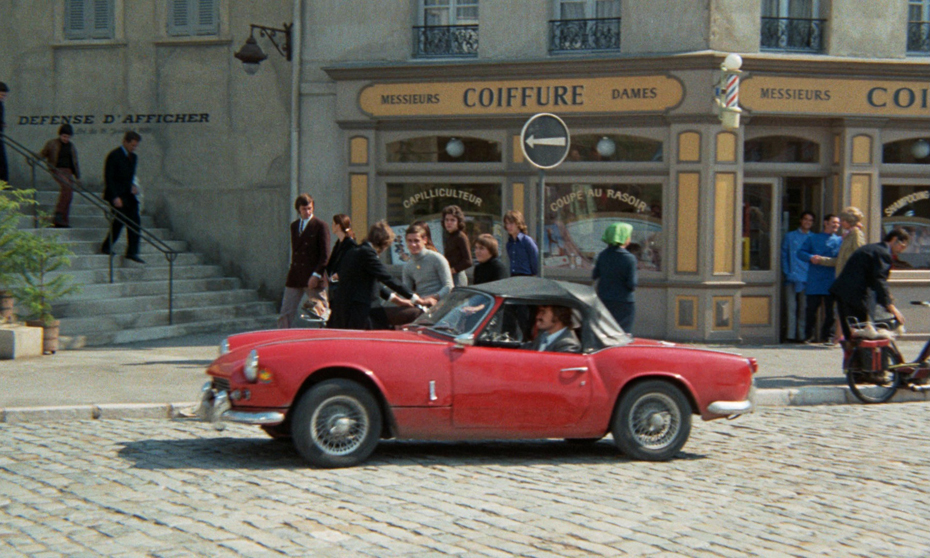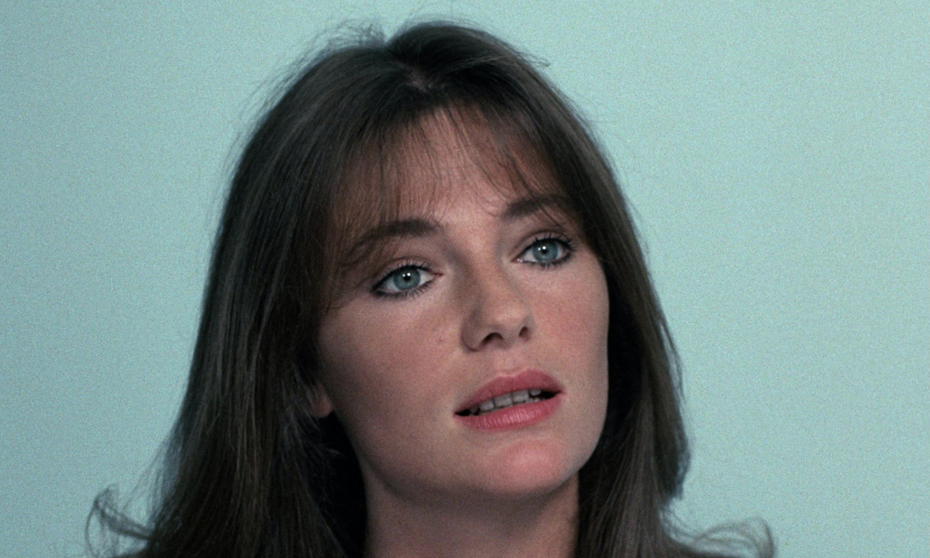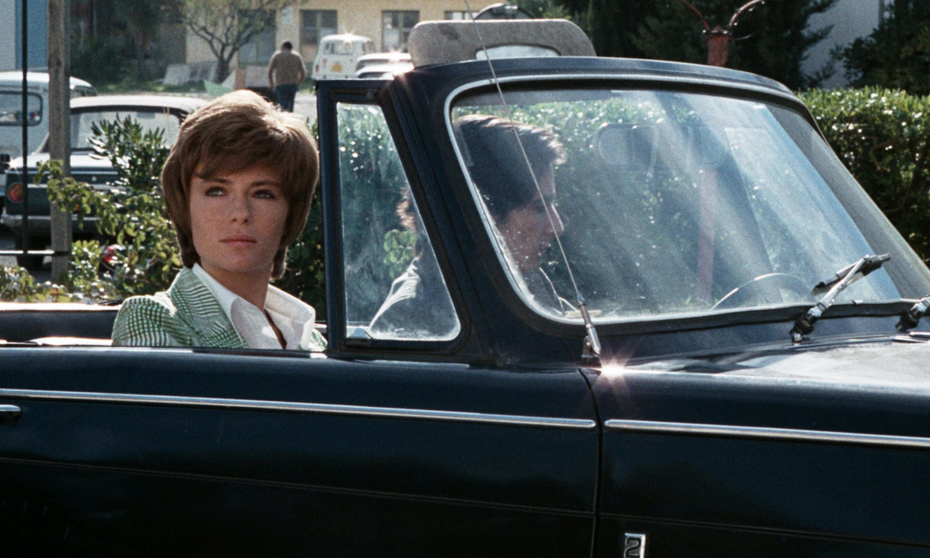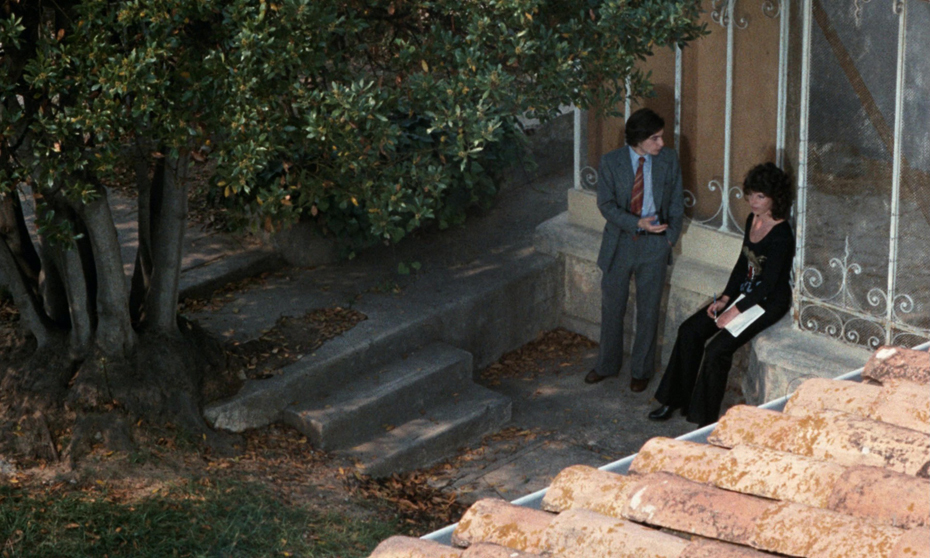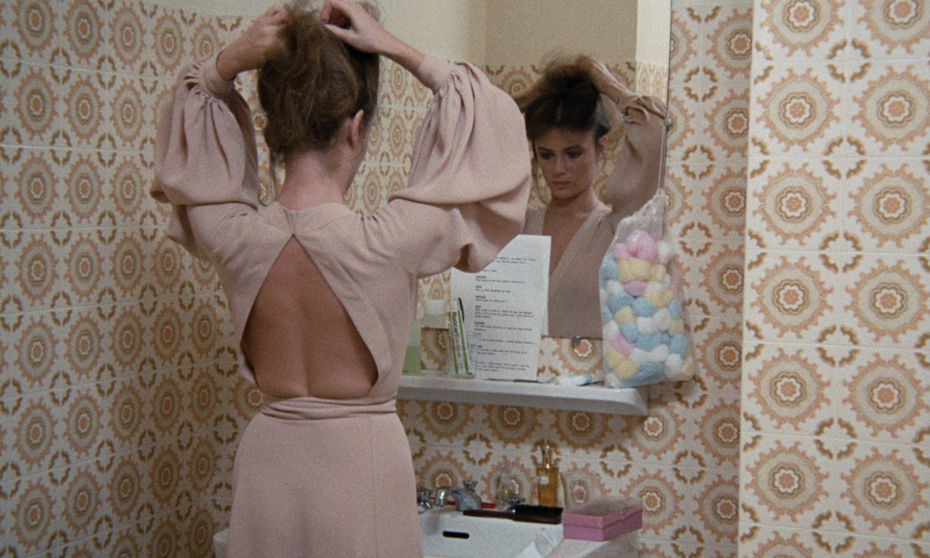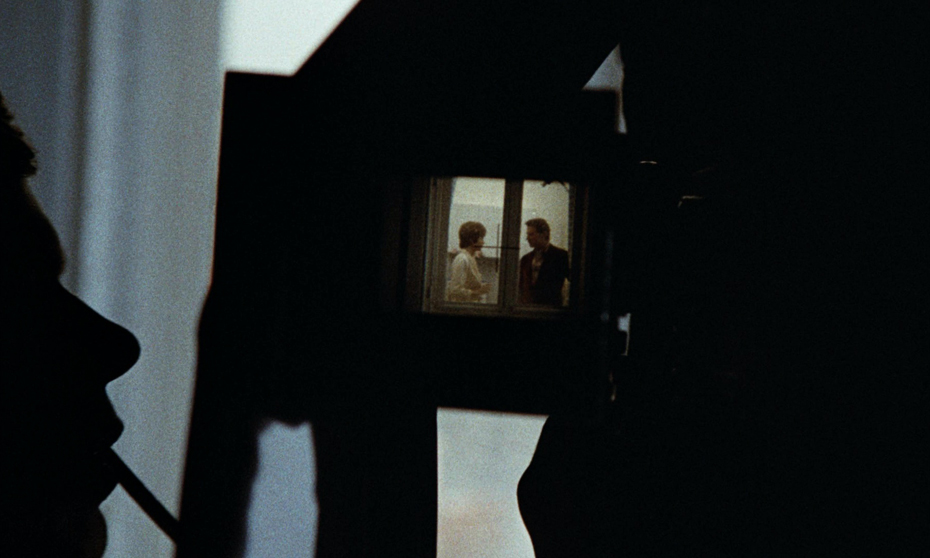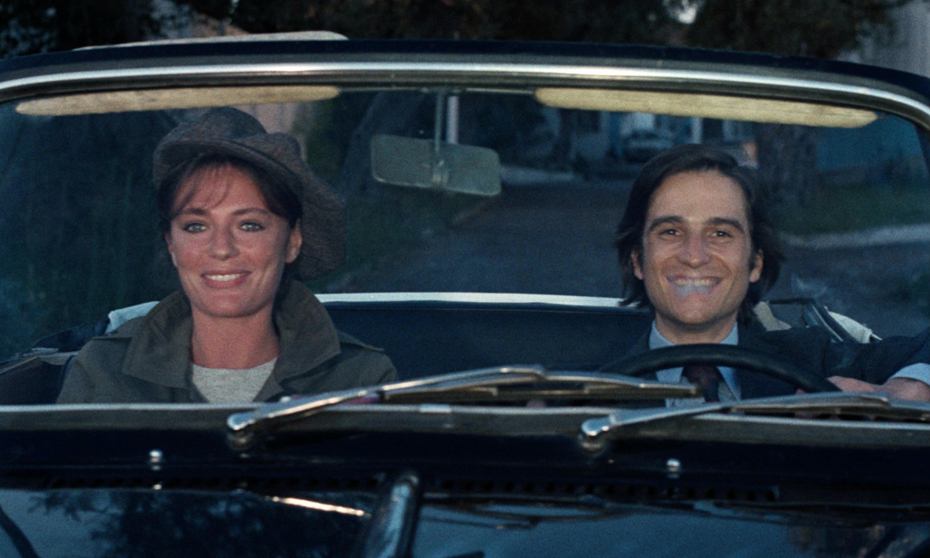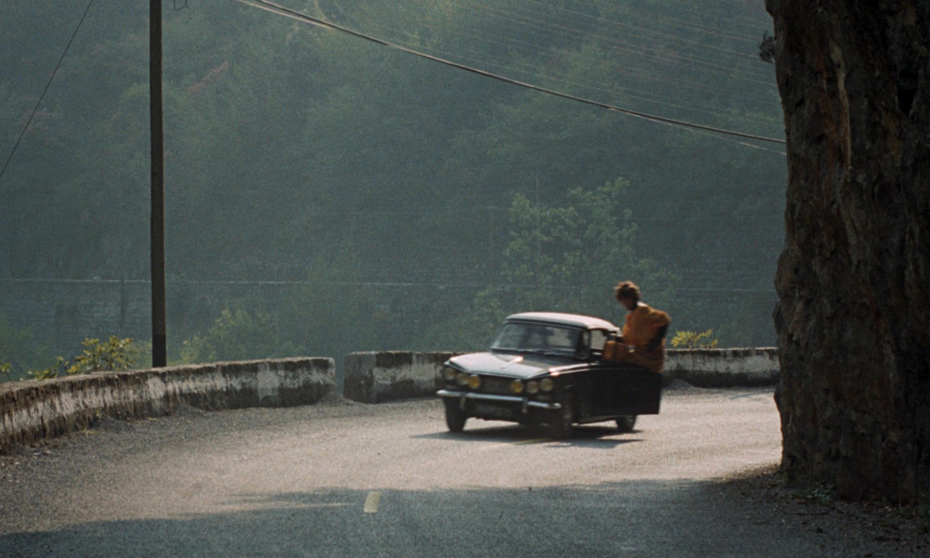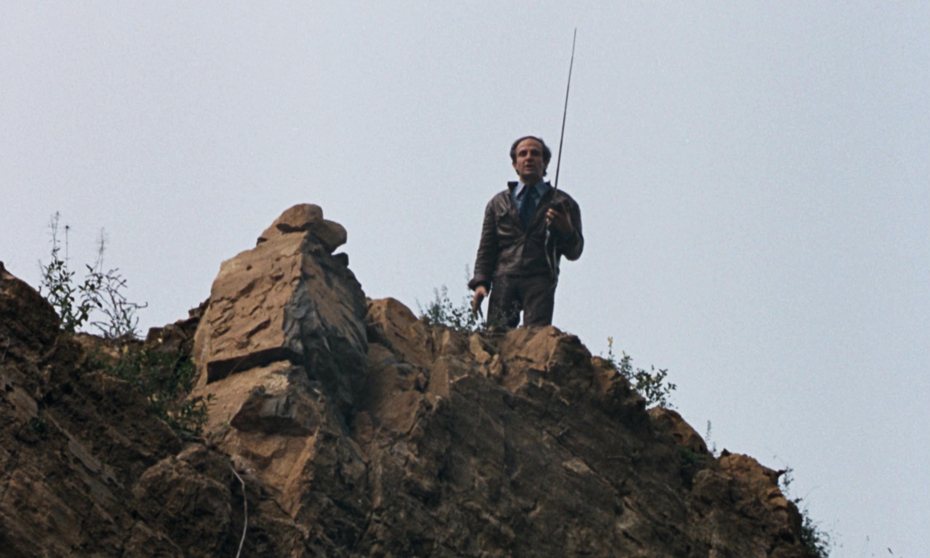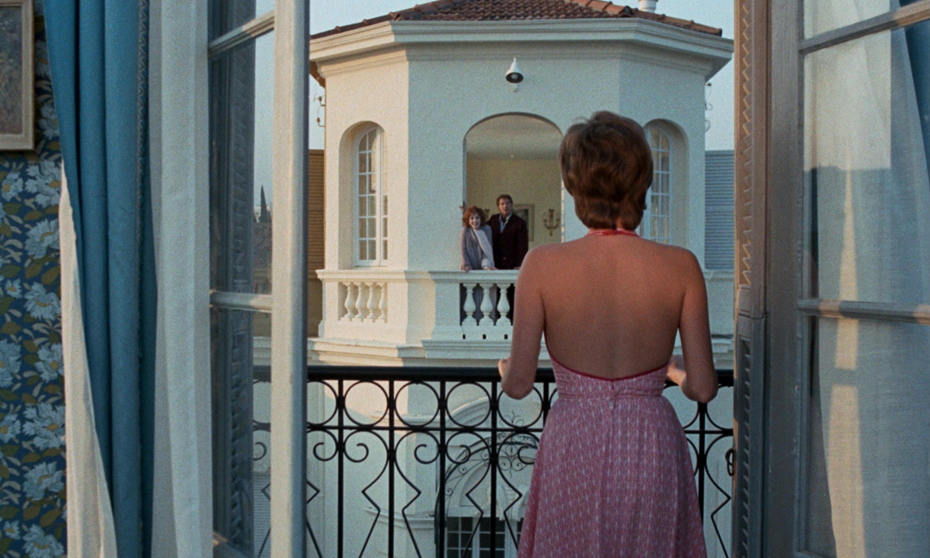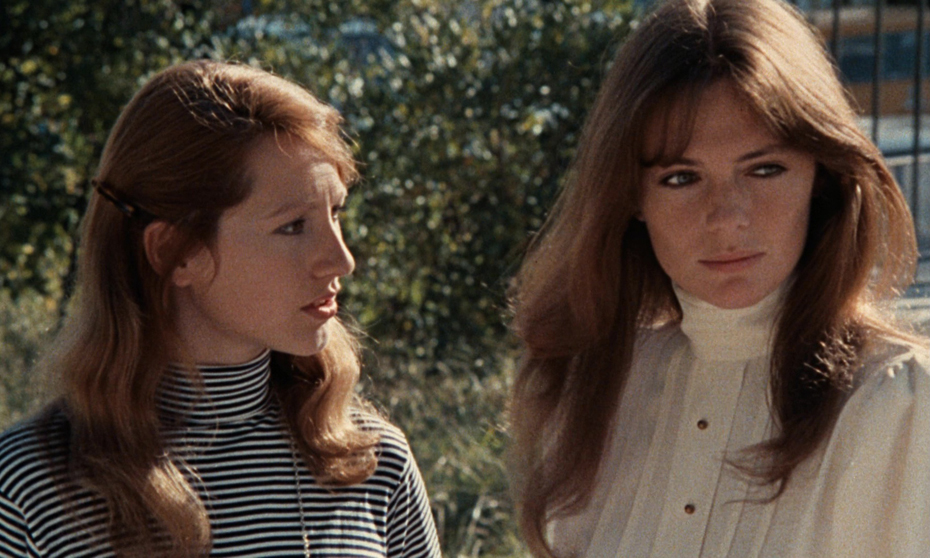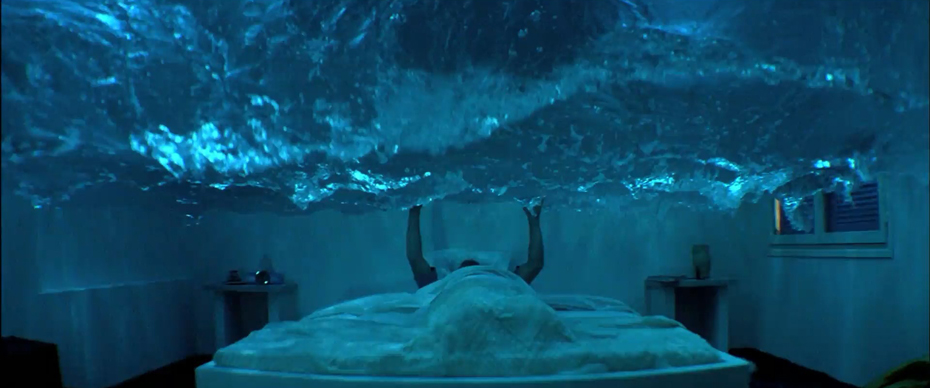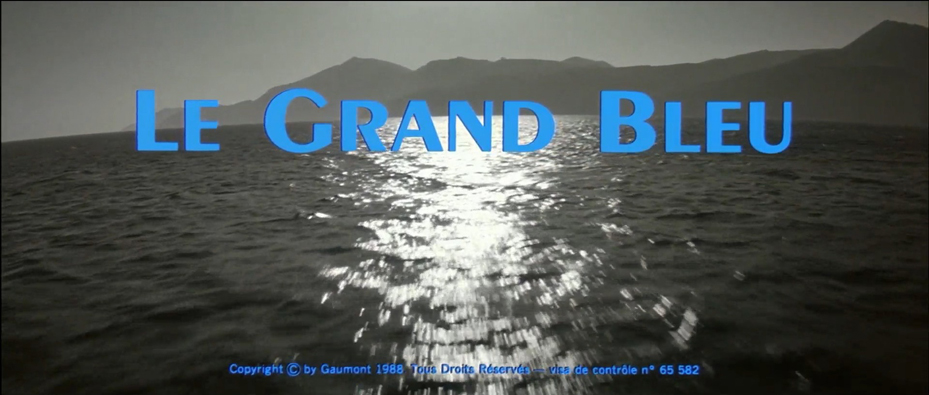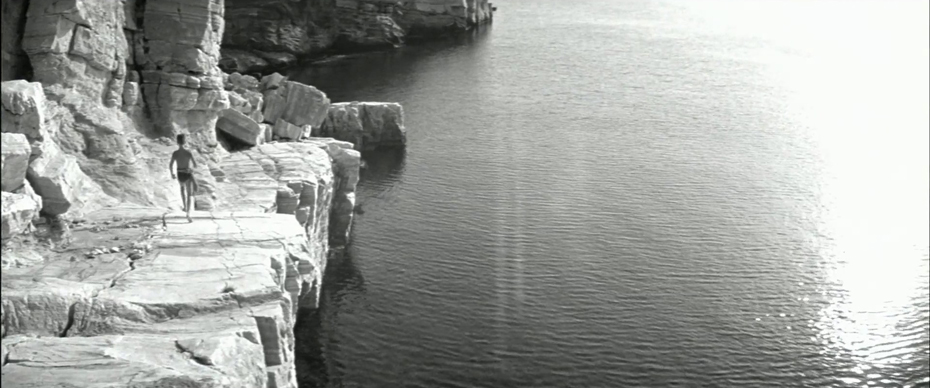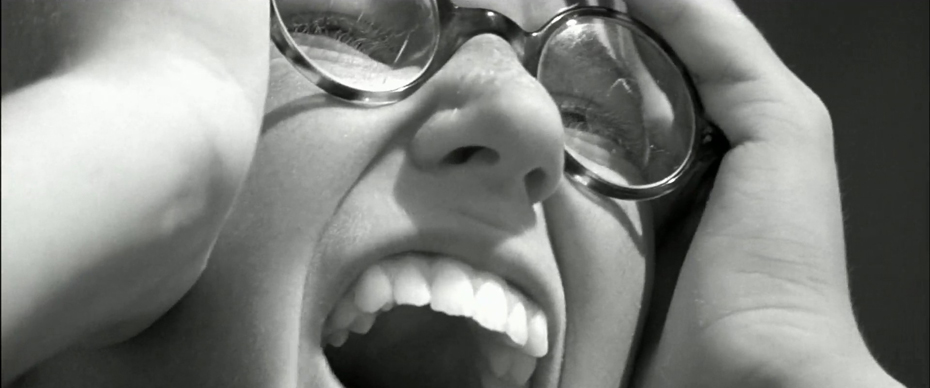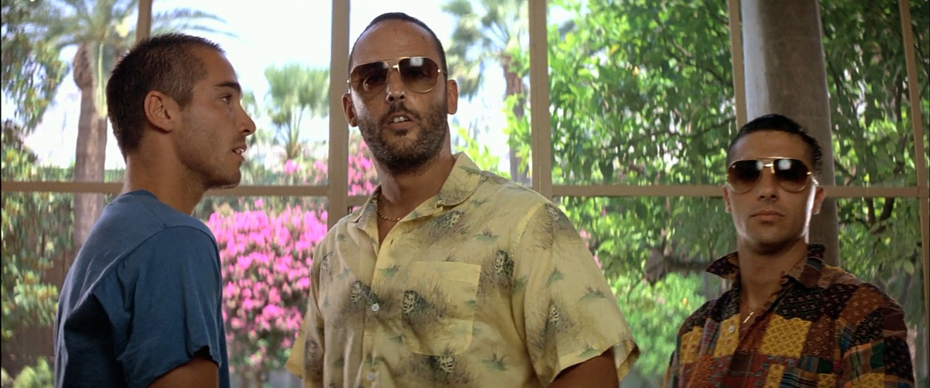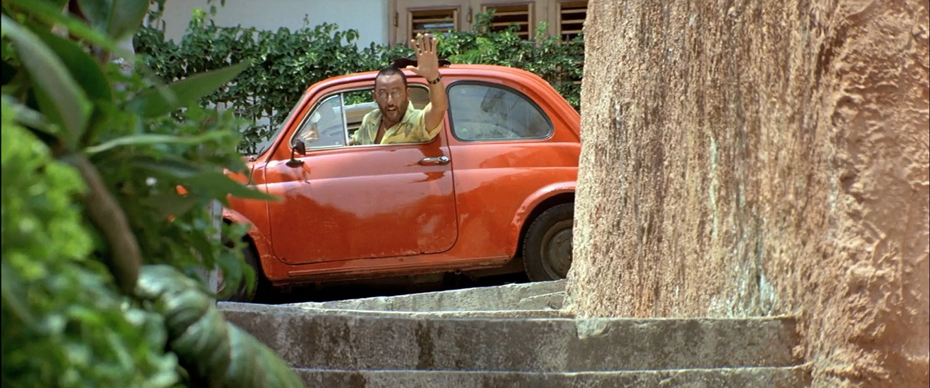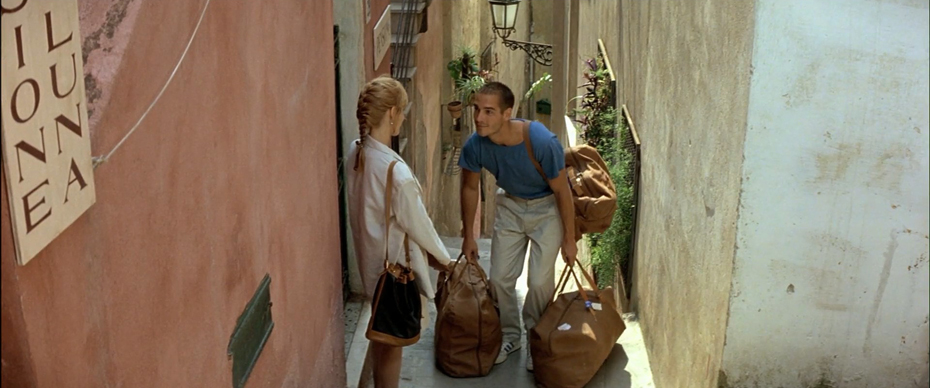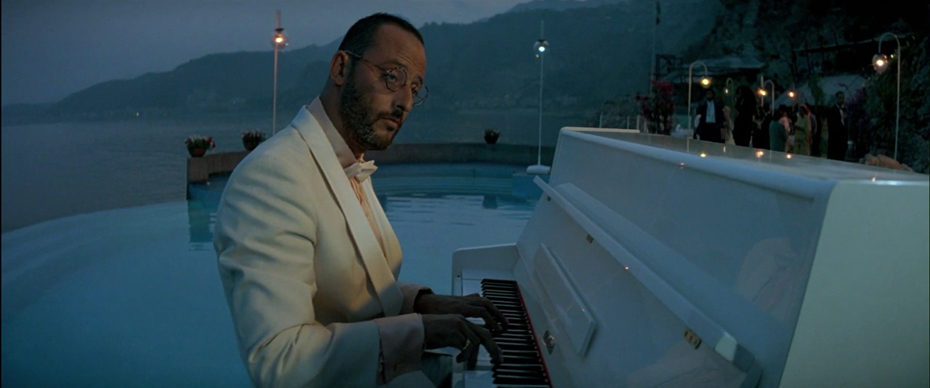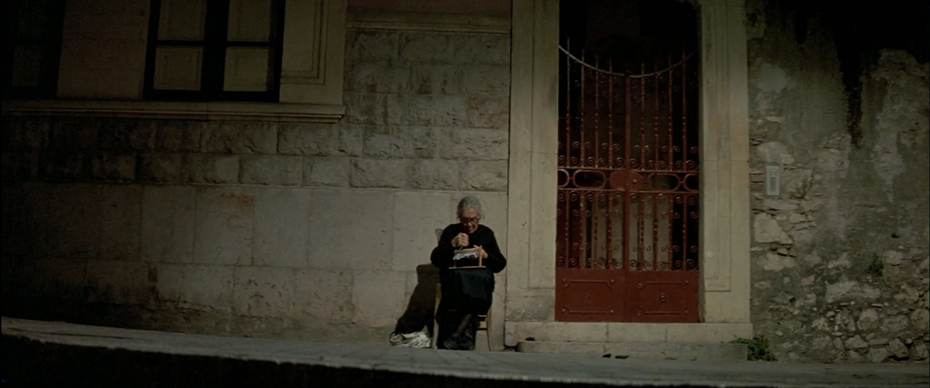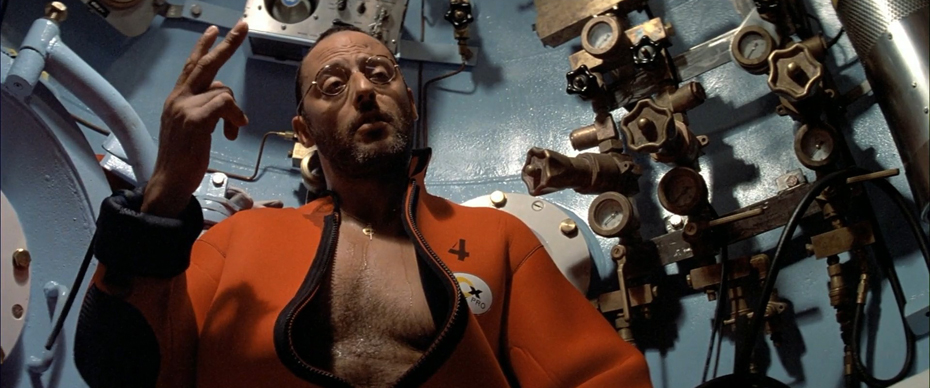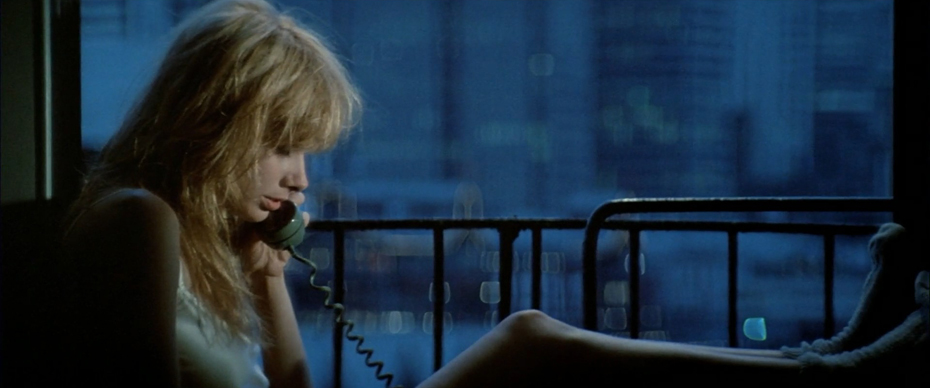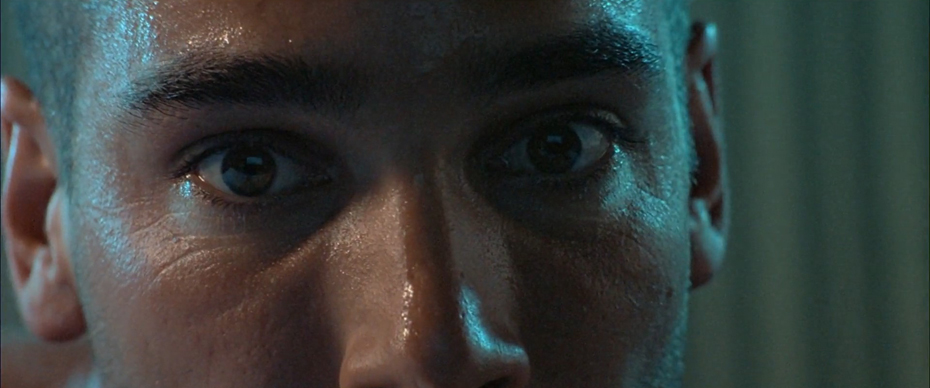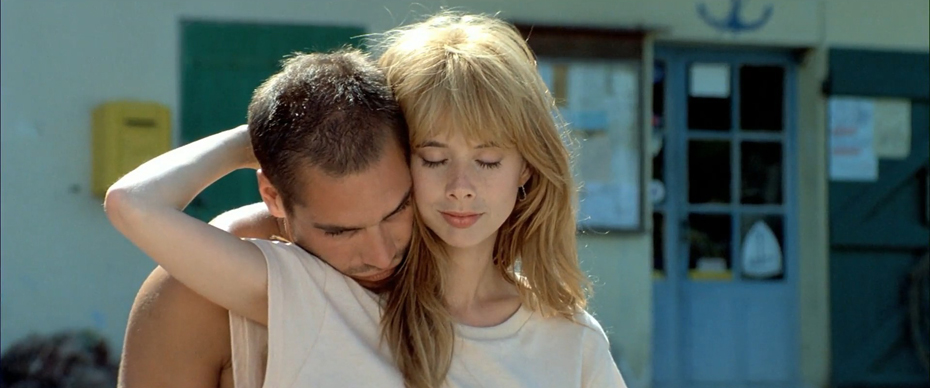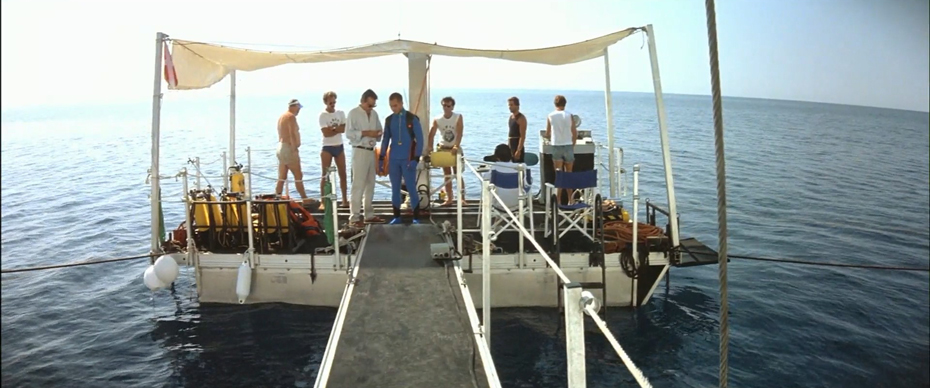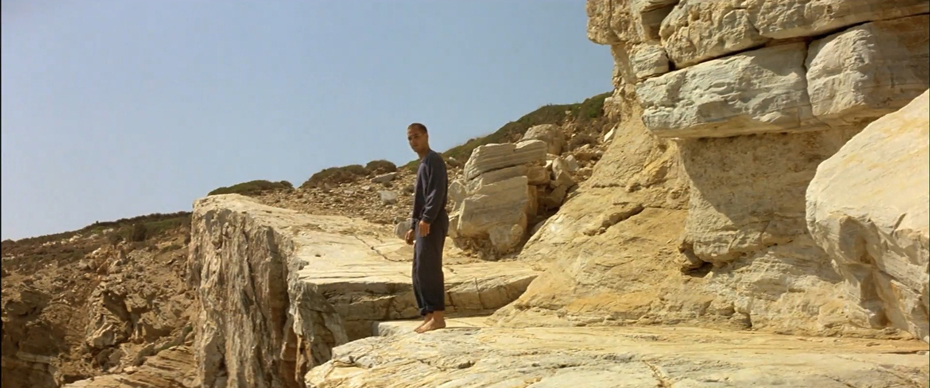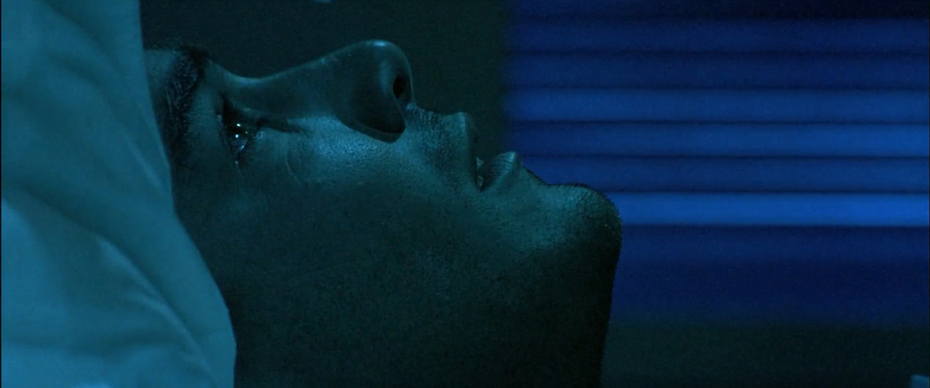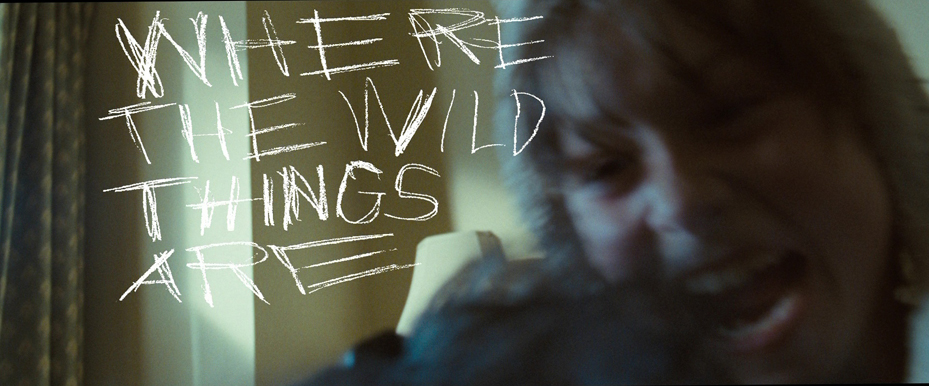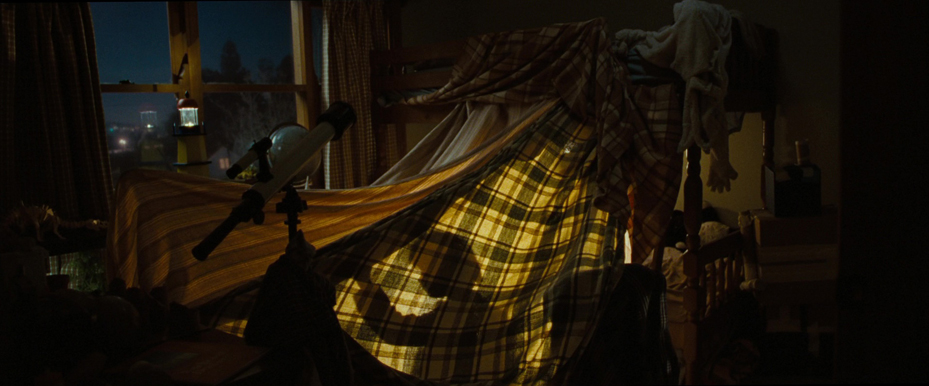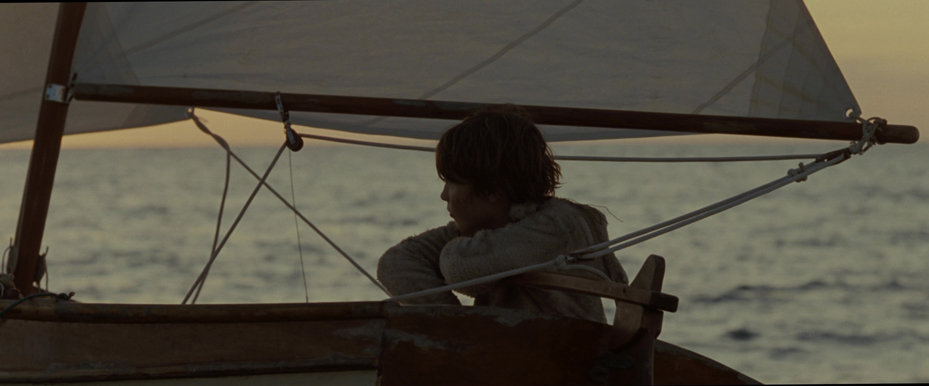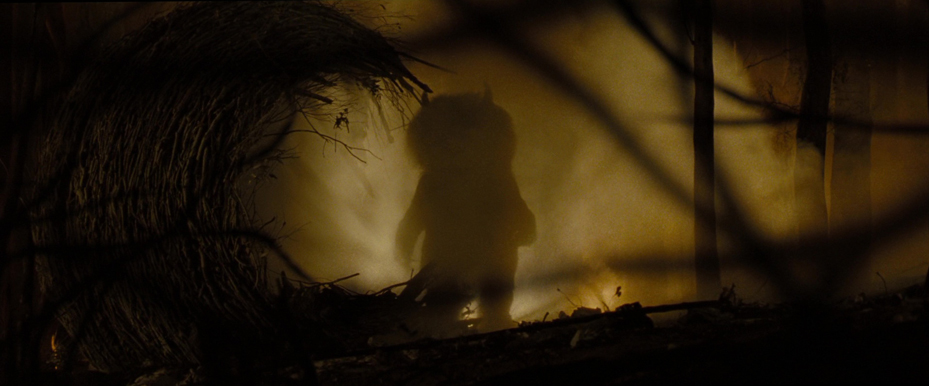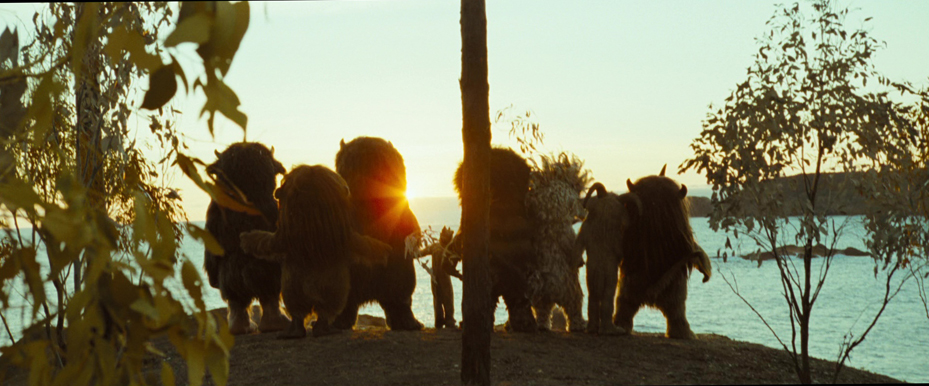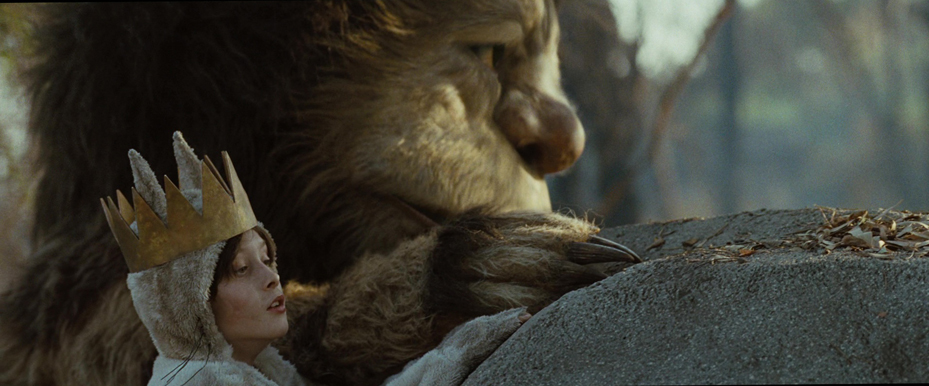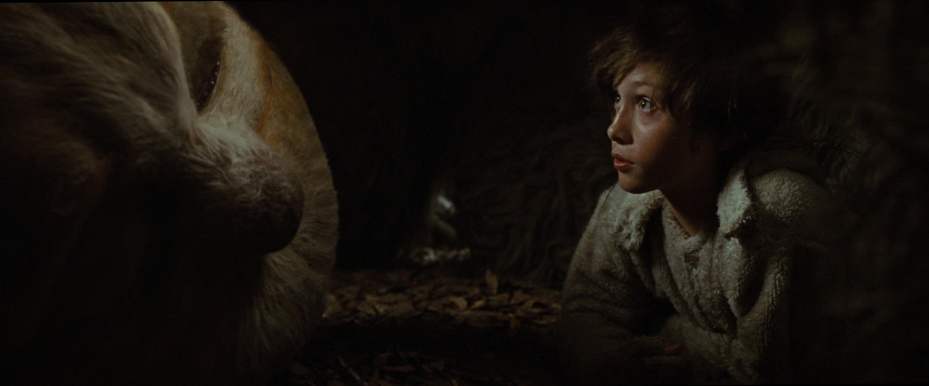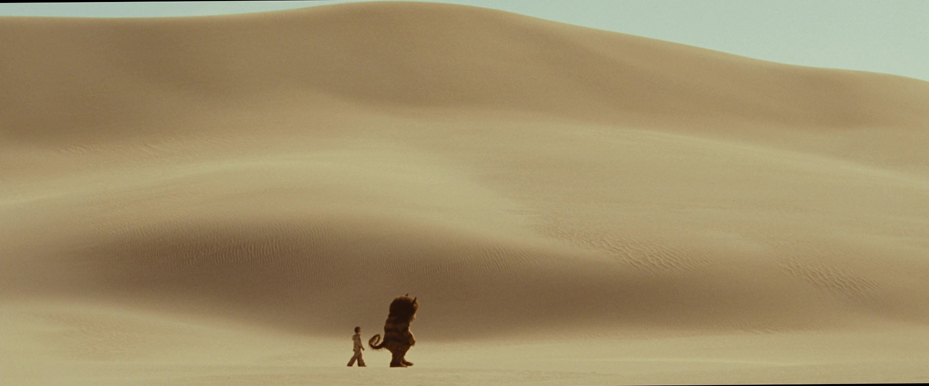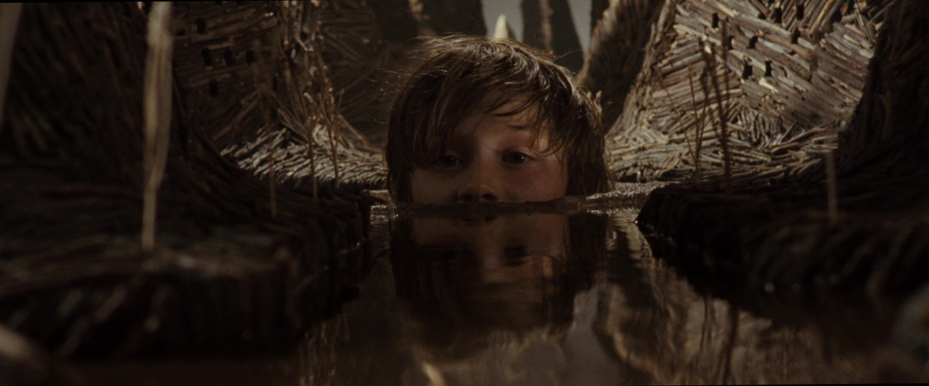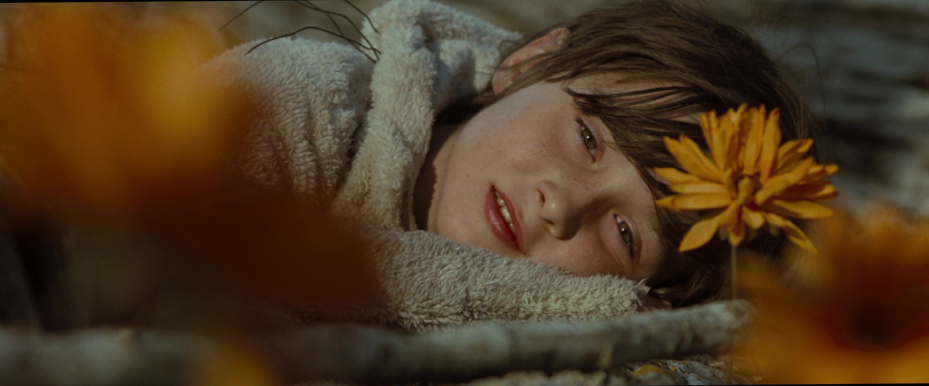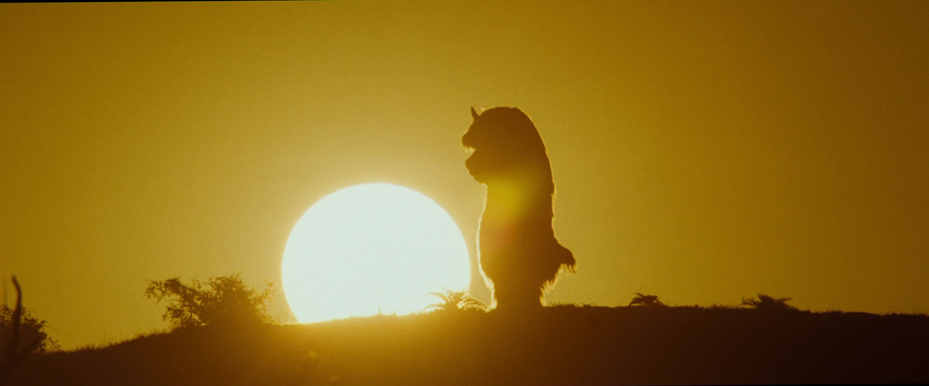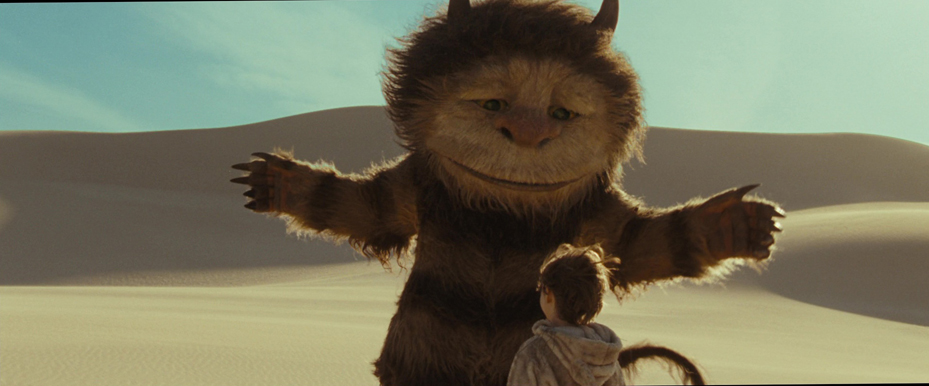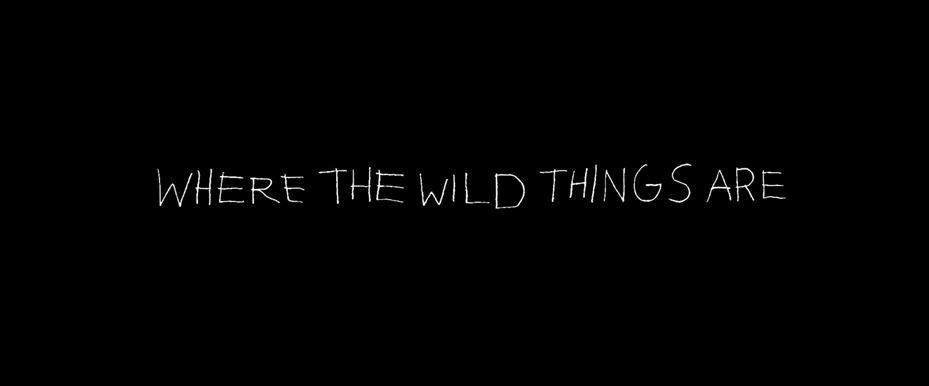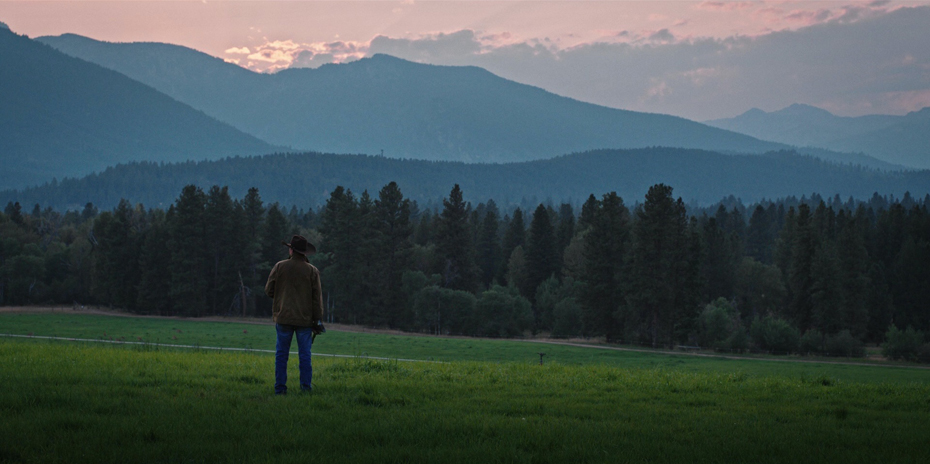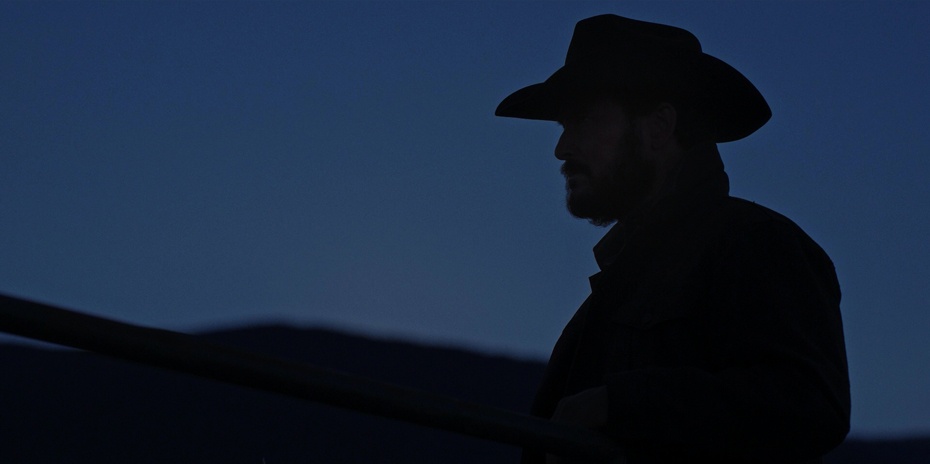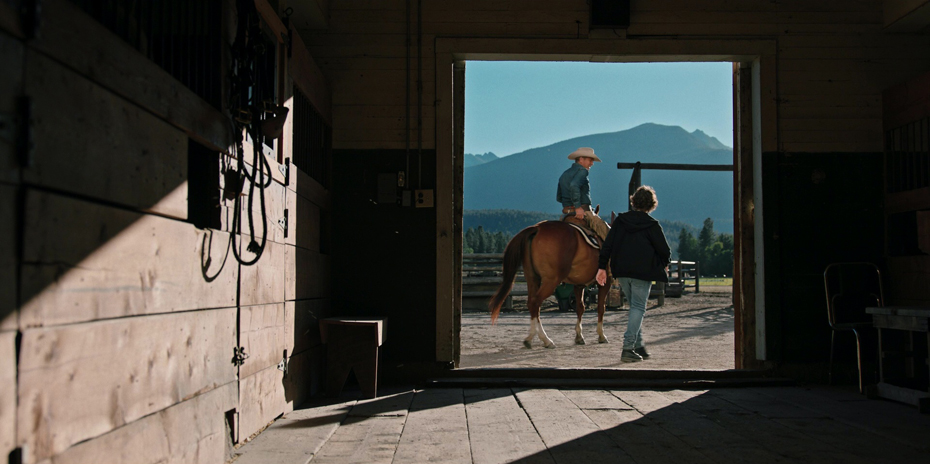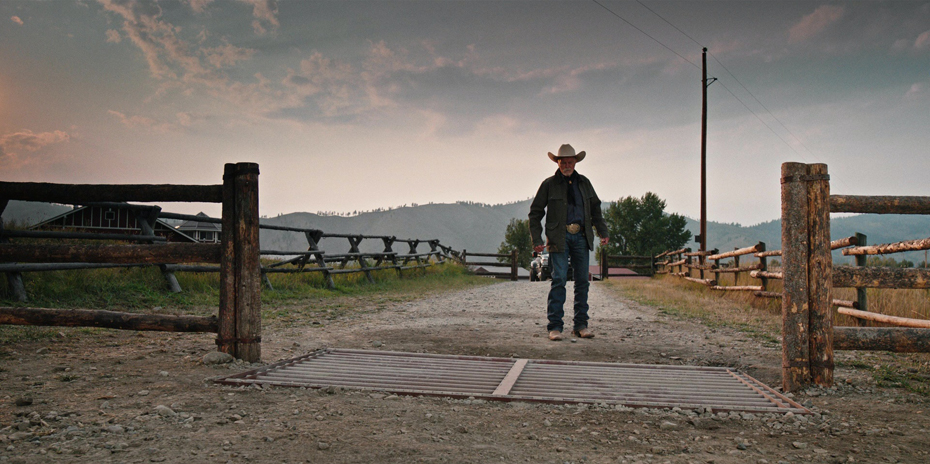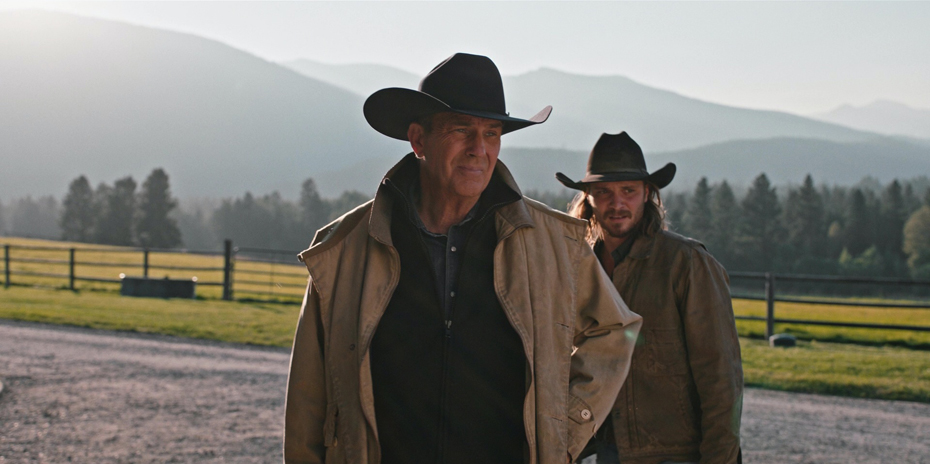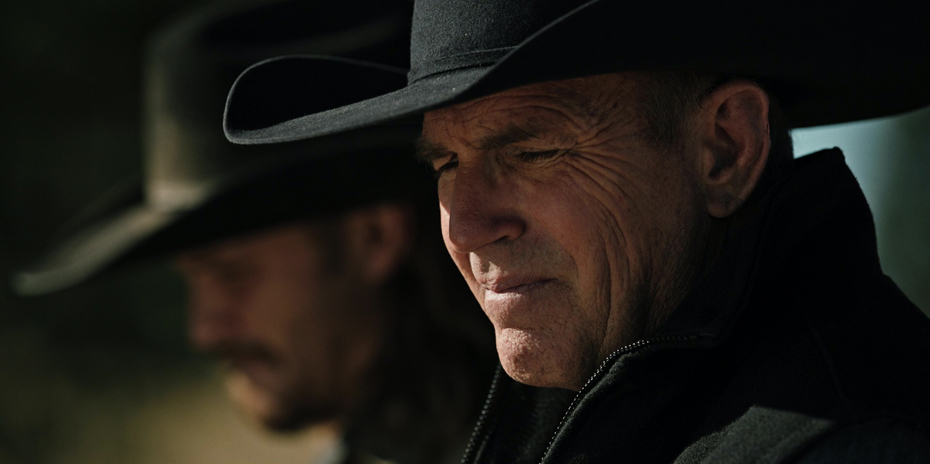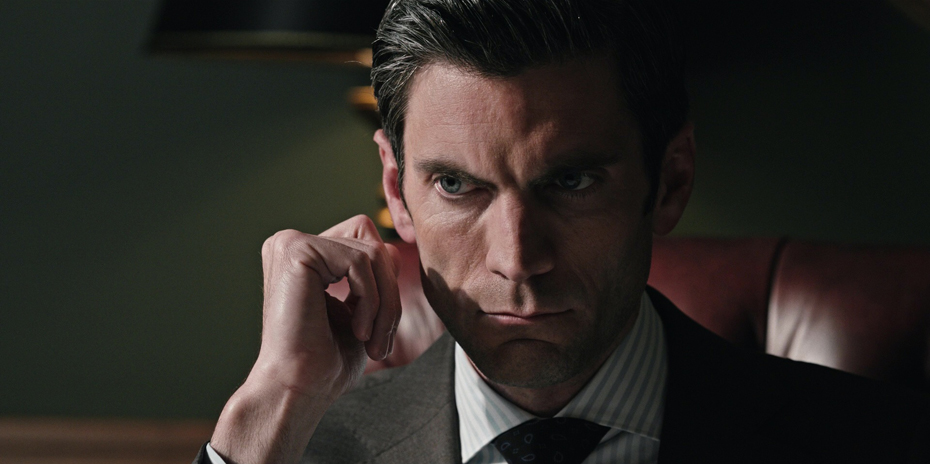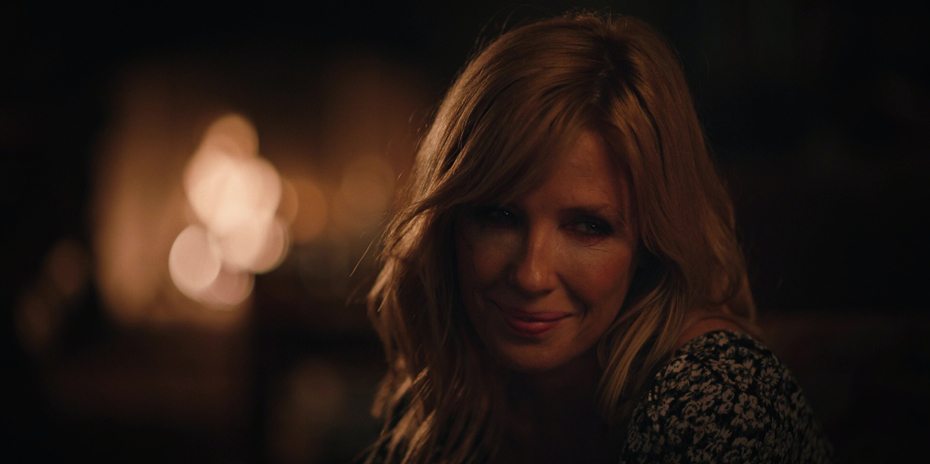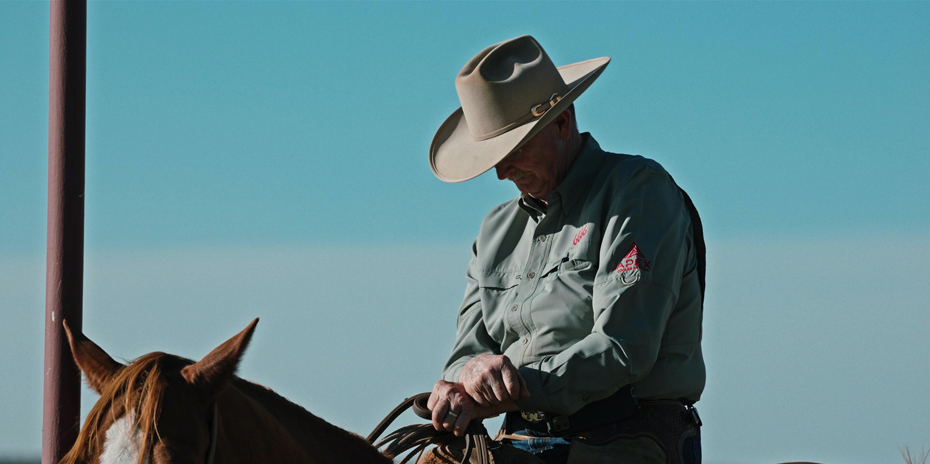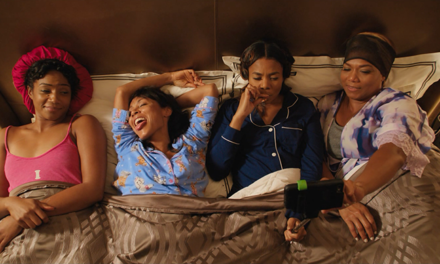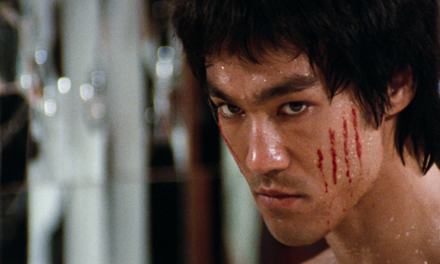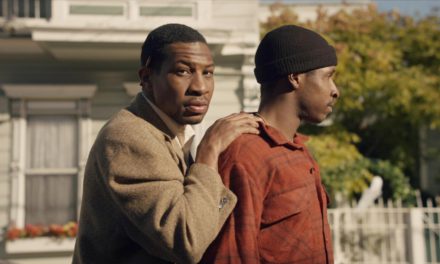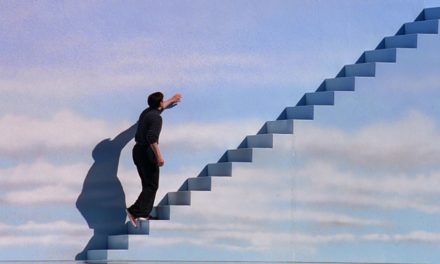THE TUESDAY DROP – 04/19
04.19.22 / New Shots
PALM SPRINGS (2020)
Max Barbakow’s feature directorial debut, PALM SPRINGS, is a sci-fi romantic comedy starring Andy Samberg and Cristin Milioti as two strangers who meet at a wedding in Palm Springs, only to get stuck in a time loop. The film also stars J.K. Simmons, and premiered at the 2020 Sundance Film Festival. Barbakow worked on Palm Springs with American cinematographer Quyen Tran. With 22 days to shoot the film entirely on location, each day involved multiple location moves, and relied on extensive prep and shot design to be covered in the time they had. Tran wanted to ensure that the camera and lighting were set up very precisely in order to tell the story of the film visually, so that its sci-fi elements would not have to be overly explained in dialogue.
Using anamorphic lenses (influenced by Paul Thomas Anderson’s Punch Drunk Love), Tran shot both characters with perfectly matched angles and focal distances to give the audience the immediate impression that their fates would be intertwined. She also used lighting as an indicator of each character’s emotional state, rather than just to create a natural look. Sarah’s room was often dimly lit with a single source of illumination to show her dark headspace at the start of the film, contrasted with Nyles’s well-exposed, brightly-lit and cheerful world. Orange became a crucial color in the palette of the lighting design and production design, symbolizing hope and love for the characters’ love story. With the tight shooting schedule, Tran also relied on her documentary experience to shoot daytime exteriors with available light, embracing the hard light and strong shadows created by the Palm Springs sun, and shooting sequences with a free-flowing, handheld style that gave the audience a sense that the characters were trying to open up their trapped world.
NIGHTMARE ALLEY (2021)
Guillermo del Toro’s eleventh feature film, NIGHTMARE ALLEY, is based on William Lindsay Gresham’s 1946 novel of the same name, and a remake of the 1947 film directed by Edmund Goulding. The movie stars Bradley Cooper as Stanton Carlisle, a down-on-his luck con artist attempting to swindle the elite and wealthy with the help of a mysterious psychologist. The film also stars Cate Blanchett, Toni Collette, Willem Dafeo, Rooney Mara and Ron Perlman. Del Toro worked on the film with Danish cinematographer Dan Laustsen, who he worked with on Crimson Peak and The Shape of Water.
Del Toro and Laustsen decided to shoot Nightmare Alley on the Alexa 65 as their main unit (with Alexa LFs as their steadicam units). They shot with Arri Signature Primes that Laustsen added diffusion to at the back of the lens, and filtration on the front, and maintained an f-stop of 2.8/4 split and an ISO of 800 throughout the shoot to give the movie a consistent feel. Inspired by the work of American painters Edward Hopper and Andrew Wyeth, del Toro and Laustsen consciously made the decision to slightly underexpose Stanton for much of the film, shrouding him in mystery in keeping with the stylistic demands of making a contemporary noir. The pair also wanted to embrace the theme of duplicitous identity by using mirror shots throughout the film – including in Dr. Ritter’s (Cate Blanchett) office, where del Toro and Laustsen insisted on using real marble floors, as opposed to the replica made out of Formica that is typically used in productions to minimize the floor’s reflection.
MARRY ME (2022)
MARRY ME is a 2022 romantic comedy directed by Kat Coiro, based on the 2012 graphic novel of the same name by Bobby Crosby. The film stars Jennifer Lopez as Kat Valez, a pop star who decides to marry math teacher Charlie Gilbert (played by Owen Wilson), who she sees holding a “Marry Me” sign at her concert after learning that her on-stage partner, Bastian (played by Maluma) has been having an affair. Coiro worked on the costume design for Marry Me with Caroline Duncan, who had most recently worked on the horror film Old.
Duncan’s task on Marry Me was different from most of her other projects because her role as costume designer also encompassed being a stylist to the fictional pop star Kat, and marrying this task with the broader challenge of telling the story of the film through the costuming decisions. Duncan collaborated closely with Lopez (who was also a producer on the film) to design looks for Kat in public, at home, on a date night etc., and then worked with Coiro and cinematographer Florian Balhaus to create a story arc with the costumes that would be reflected in the visual language of the film. The trio decided that the color palette of Kat’s costumes would mirror her journey of falling in love over the course of the film – starting her out in mostly whites and metallics, and gradually softening her palette into warmer tones, that eventually incorporated hits of blues, pinks and more saturated colors by the end of the film.
LOVE JONES (1997)
LOVES JONES is a 1997 romantic drama written and directed by Theodore Witcher in his feature debut. The film stars Larenz Tate as Darius, an aspiring writer, and Nia Long as Nina, an aspiring photographer, who share an instant connection after a chance meeting at a Chicago club. The film also stars Isaiah Washington, Bill Bellamy and Lisa Nicole Carson. Love Jones did not open with major financial success, but it has amassed a cult following in the years since, and has become a touchstone film of the 90s indie film era. Witcher worked on Love Jones with American cinematographer Ernetst Holtzman.
Witcher and Holtzman’s first references for the visual language of Love Jones were black and white still photographs, and while the pair were told that the studio would not allow them to shoot the film in black and white, these references allowed them to settle on a cool, monochromatic color palette for the movie. This conversation also led to the opening sequence of the film – black and white, MOS footage that Holtman shot of different people around Chicago while location scouting for the film during pre-production. Witcher also wanted the film to have a slick, sexy look that complimented the mood of the story being told, and pushed Holtman to film it in a way that had very fine grain. This led to Holtman shooting Love Jones on ASA 100 film stock, making it a uniquely photographed movie in the 90s rom com genre.
A RAISIN IN THE SUN (1961)
A RAISIN IN THE SUN is a 1961 drama directed by Daniel Petrie, adapted from the 1959 play of the same name by Lorraine Hansberry (the first play written by a black woman to be performed on Broadway). Hansberry also wrote the screenplay. The film stars Sidney Poitier, Ruby Dee, Claudia McNeil, Diana Sands, and Louis Gossett Jr. The movie follows the Youngers, a Black family living in Chicago, who are trying to decide what they are going to do with the insurance money they are due to receive for the death of their family’s patriarch. A Raisin in the Sun was selected for preservation in the US National Film Registry by the Library of Congress in 2005.
One of cinematographer Charles Lawton Jr. and Petrie’s biggest challenges in shooting the movie was adapting it from stage to screen. Petrie was experienced in this regard, but A Raisin in the Sun posed a unique challenge of being entirely set inside one apartment. One of the key tactics Lawton used to tackle this was to keep the camera constantly moving throughout the movie. Petrie also staged the movie in a way that kept the action moving from room to room, heightening the drama and giving the film a sense of constant momentum as it increases in tension. By shooting in deep focus, Lawton also gave the film a sense of depth that allowed multiple characters to occupy the frame throughout, creating frames that allowed the audience to often perceive what one character was thinking while the others spoke with each other.
GEORGE WASHINGTON (2000)
David Gordon Green’s feature directorial debut, GEORGE WASHINGTON, is a drama that follows a group of children who band together to cover up a tragic mistake in a small town in North Carolina. The film stars Candace Evanofski, Curtis Cotton III, Donald Holden, Damian Jewan Lee, Rachael Handy and Paul Schneider. George Washington debuted at the 2000 Berlin International Film Festival and was widely praised upon its release. Green worked on George Washington with American cinematographer Tim Orr. The pair would go on to work together on several more films including Pineapple Express.
Green and Orr set themselves a challenge from the outset that they did not want George Washington to suffer the issue of lacking a distinctive visual look, one that they felt many low-budget independent features had. They wanted the film to look like it had a $10 million budget, despite being made for around $40,000. They decided to shoot on 35mm film using anamorphic lenses, and made up their minds that they would cobble together whatever resources they could to make that look possible. While they weren’t able to afford Kodak, they were able to gather enough short ends of Fuji 35mm film to shoot the movie, and leveraged their relationship with Joe Dutton Camera in Wilmington to get anamorphic lenses for the shoot. Orr used an antique suede filter for all the day exteriors to desaturate the colors and give those scenes a golden glow, and the production scheduled their shooting days to take advantage of magic hour light wherever possible.
PIERROT LE FOU (1965)
Jean-Luc Godard’s tenth feature film, PIERROT LE FOU, follows Ferdinand Griffon, an unhappily married man who escapes Paris to travel to the Mediterranean with his babysitter, Marianne (played by Godard’s wife at the time, Anna Karina), who is being chased by OAS hit-men from Algeria. Pierrot le Fou is based on the 1962 novel Obsession by Lionel White, and debuted at the Venice International Film Festival. Pierrot le Fou is considered by many to be one of the most important films of Godard’s career, and is cited as an inspiration for filmmakers to follow, such as Belgian director Chantal Akerman. Godard worked on the film with legendary French production designer Pierre Guffroy. Guffroy had a long collaboration with Godard, as well as with filmmakers Luis Bunuel and René Clément. His credits include Is Paris Burning?, The Discreet Charm of the Bourgeoisie and The Unbearable Lightness of Being, and he is widely considered the most significant production designer of the French New Wave era.
Guffroy worked closely with Godard and cinematographer Raoul Coutard to design a striking and colorful visual language for Pierrot le Fou that often played in counterpoint to the dark themes running through the movie. Guffroy’s palette was largely based on primary colors, which was reflected across the lighting design, sets and locations as well as the costuming of the characters. Both characters are dressed in red at different moments in the film, reflecting both the romance the characters share as well as the danger they find themselves in. This is often set against the blues of the sets, as well as the ocean and sky-filled locations of the Mediterranean, as well as hits of yellows. The design overall creates a balanced and bright visual language, whose pop sensibilities make Pierrot le Fou one of the most visually striking of Godard’s career.
DAY FOR NIGHT (1973)
François Truffaut’s 1973 film DAY FOR NIGHT follows a film director (played by Truffaut himself) trying to get his movie made while observing the real-life dramas in the lives of the actors he is working with. The film also stars Valentina Cortese, Jean-Pierre Aumont, Jean-Pierre Léaud and Jacqueline Bisset. Day for Night premiered at the 1973 Cannes Film Festival, and is considered alongside The 400 Blows as one of Truffaut’s important films. Truffaut worked on the film with French cinematographer Pierre-William Glenn.
Day for Night’s conceit of following a film being made within a film created a unique visual language of showing both the behind-the-scenes of the film being made in the movie, as well as the film itself as it was being shot. The film’s opening scene has become particularly famous as the solution Truffaut and Glenn came up with for executing this conceit – with an elaborate crane shot floating through a town square that is then repeated. By combining this approach with the documentary-style shooting approach that Truffaut and Glenn took, Day for Night blurs the lines between the film being made and the life happening outside, showing the ways in which the task of filmmaking and life itself become blurred to those involved in it.
THE BIG BLUE (1988)
THE BIG BLUE is a 1988 film co-written and directed by Luc Besson. The film is a fictionalized story of the friendship and rivalry between two champion free divers in the 20th century – Jacques Mayol (played by Jean-Marc Barr) and Enzo Maiorca (played by Jean Reno, and named “Enzo Molinari” in the film), as well as Mayol’s fictionalized relationship with Johana Baker (played by Rosanna Arquette). The movie covers their childhood in Greece during the 1960s through to their deaths during a diving competition in Sicily in the 1980s, though it is a heavily fictionalized account of the real divers’ lives (in reality, Mayol lived from 1927 to 2001 and Maiorca retired from diving to move into politics in the 80s). The Big Blue has become recognized as a movie in the Cinéma du look visual style, led by filmmakers such as Besson, as well as Jean-Jacques Beineix and Leos Carax. The style is characterized by the slick visual style and spectacle of its filmx, as well as a focus on young, alienated characters. Besson worked with Dan Weil on the production design for The Big Blue.
Weil’s production design on The Big Blue is unsurprisingly characterized by the dominance of blue in its color palette. This is evident in the location choices made for the production, where the ocean naturally plays a significant role, but it is also evident in the lighting and costuming choices made throughout the film, as well as the design of certain elements placed within the frame. This is juxtaposed against the black and white sequences at the start of the film during Mayol and Maiorca’s childhoods, which helps to not only separate the time periods of the story, but also its moods. Weil worked closely with Besson and cinematographer Carlo Varini, as well as costume designers Magali Guidasci, Mimi Lempicka, Brigitte Nierhaus and Martine Rapine to bring together the look for a film that became one of France’s most commercially successful films of its time.
WHERE THE WILD THINGS ARE (2009)
WHERE THE WILD THINGS ARE is a 2009 fantasy adventure drama co-written and directed by Spike Jonze, based on Maurice Sendak’s 1963 children’s book of the same name. The film stars Max Records as Max, a lonely boy who sails away to an island inhabited by creatures known as the “Wild Things”, who declare Max their king. Where the Wild Things Are features a voice cast of James Gandolfini, Paul Dano, Forest Whitaker, Catherine O’Hara and Chris Cooper, and was largely shot in Melbourne, Australia. Jonze worked on the movie with American cinematographer and longtime collaborator Lance Acord, who was best known at the time for his work with Jonze on films including Being John Malkovich.
One of the first decisions Jonze and Acord made about the look of the film was with production designer Keith Barrett. All three wanted to avoid the classic look of a lush green forest – in fact, they decided to basically exclude the color green altogether from the film. Jonze also wanted to avoid using CG creatures wherever possible, and instead worked with Barrett and the costume team to build creature suits for performers to play opposite Records. In order to give the forest setting a sense of depth, Acord set up different layers of forest in the frame – a deep background layer of backlit smoke, a row of trees silhouetted in front of the smoke, another layer of trees frontlit by firelight simulated by tungsten lamps, and the creatures in front of that. For night scenes, Acord went for a dreamlike and somewhat unnatural, toplit starlight look, with 12 12K space lights rigged from a crane with grid cloth to create a soft ambience.
YELLOWSTONE is a drama television series created by Taylor Sheridan and John Linson. The series appears on the Paramount network, and follows the Dutton family, owners of the largest ranch in Montana, and the conflicts they face among themselves, as well as with the bordering Broken Rock Native American Reservation, national parks and developers. The show stars Kevin Costner, Luke Grimes, Kelly Reilly, Cole Hauser and Wes Bentley. Season 4 of the series aired from November 7, 2021 to January 2, 2022, and had its production design helmed by Cary White, as well as set decorator Carla Curry and art director Yvonne Boudreaux.
Sheridan and White agreed that in order to capture the story of the show as authentically as possible, it made most sense for them to shoot on location in northern Utah and southern Montana. Extensive location scouting helped the team find the exterior locations for the shoot, while interiors were built on sound stages that were designed and built from scratch. White also collaborated closely with Costner, designing sets and dressing in real locations in close sync with the way that John Dutton would set up his home or behave in the environments where he worked in the show. Set designer Carla Curry also extensively researched ranches to source and set up antique furniture pieces that gave the family home a sense of history as well as grandeur. For the production design team, the speed of television production often meant that research and building had to happen simultaneously.

